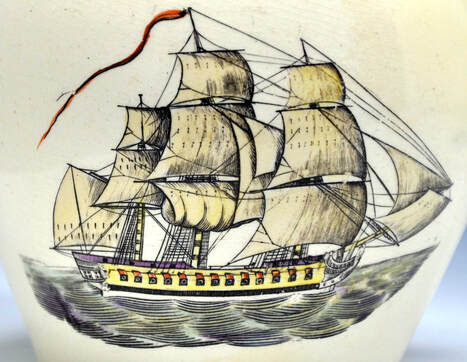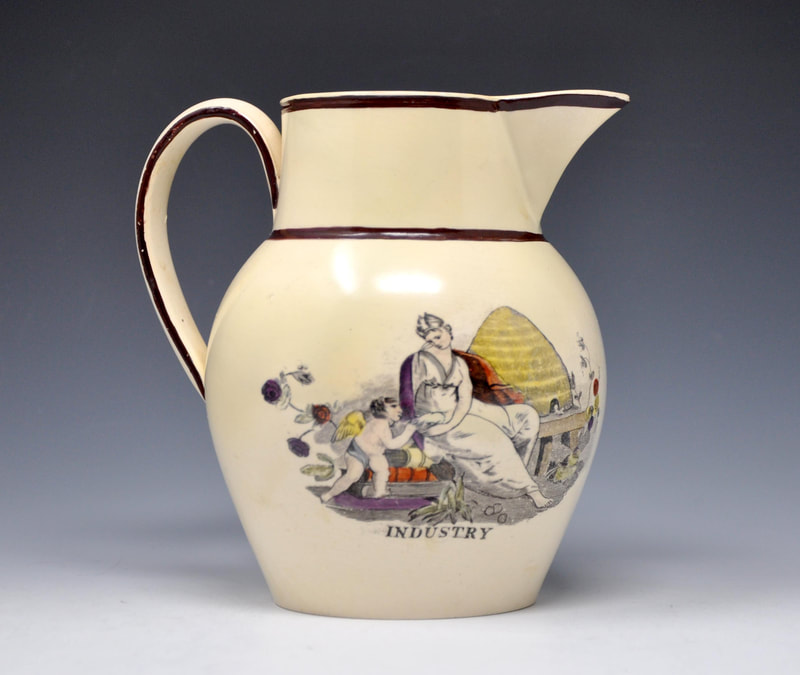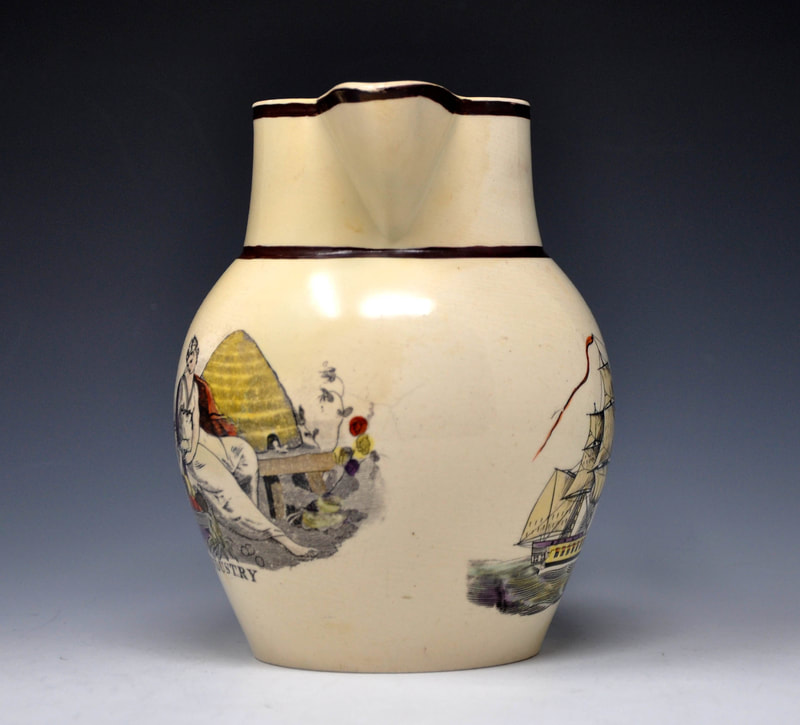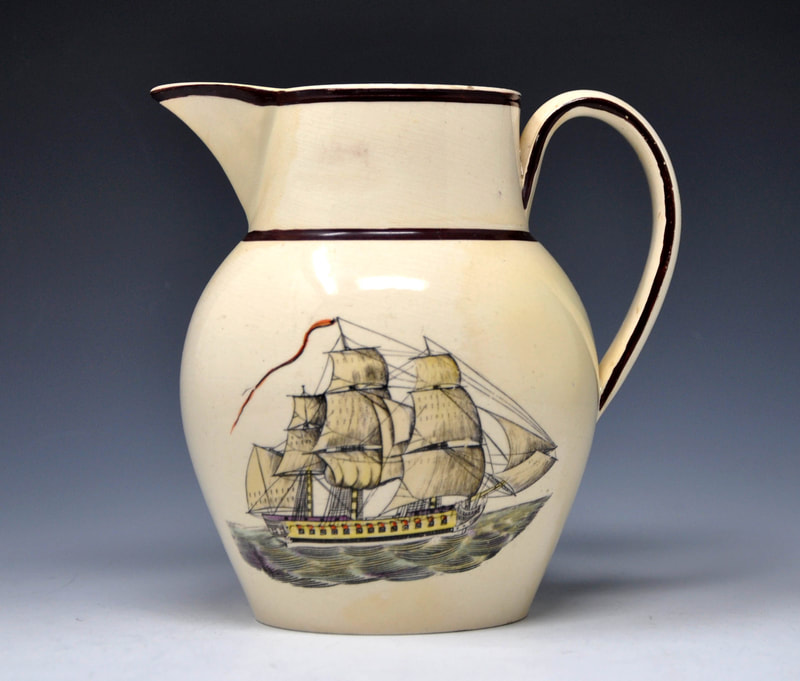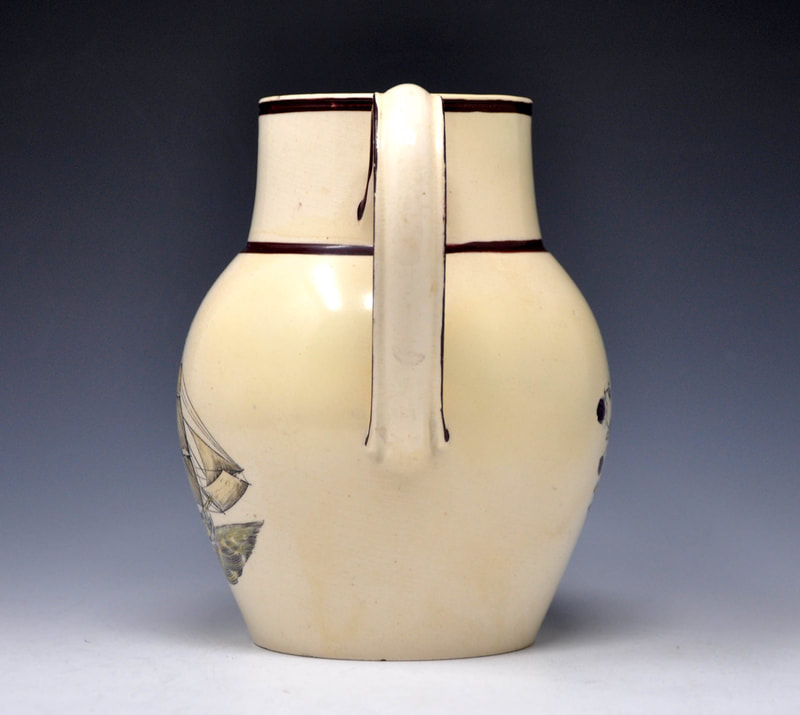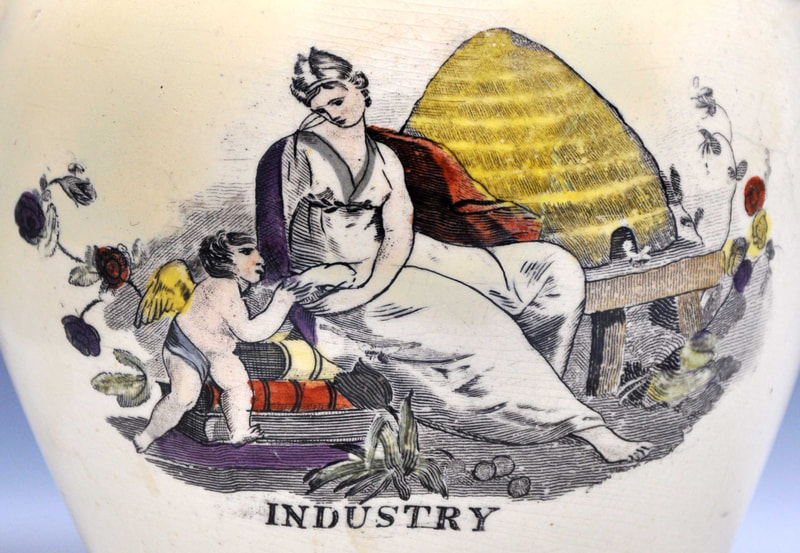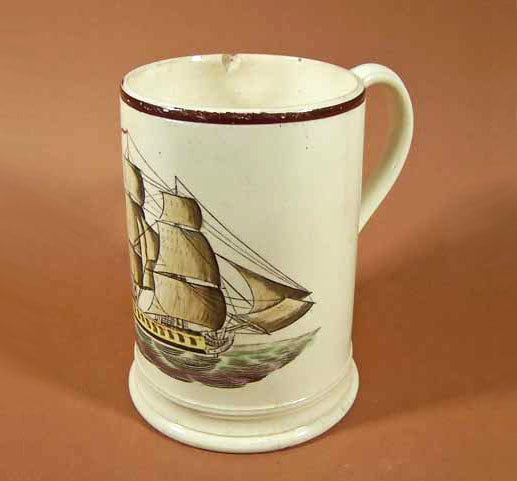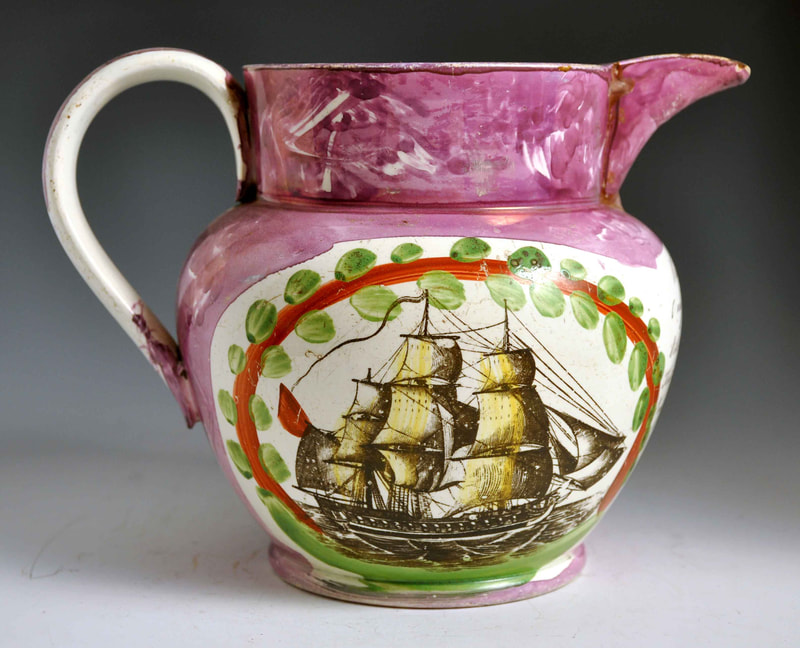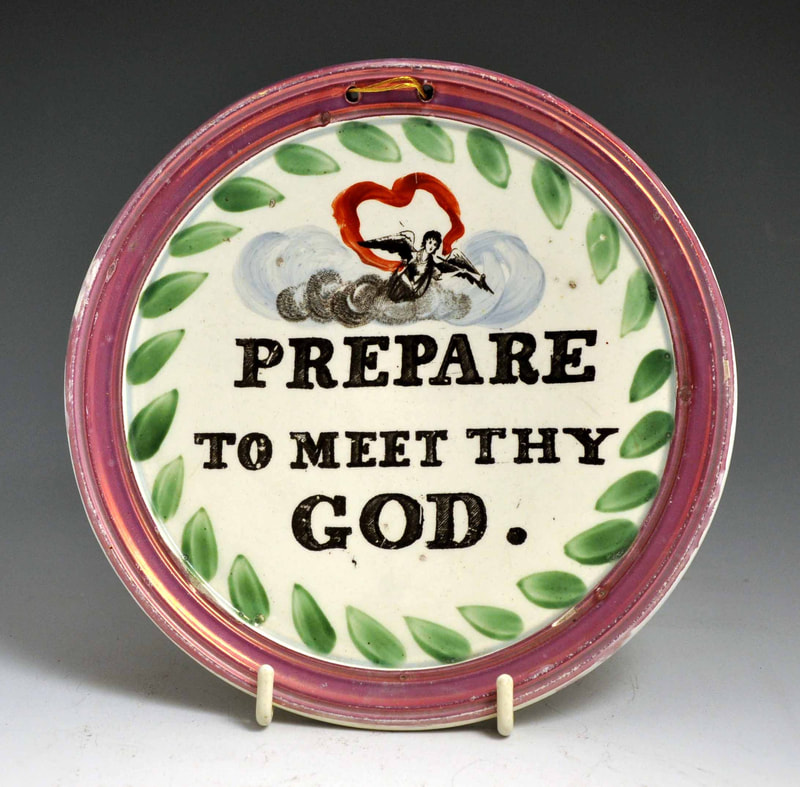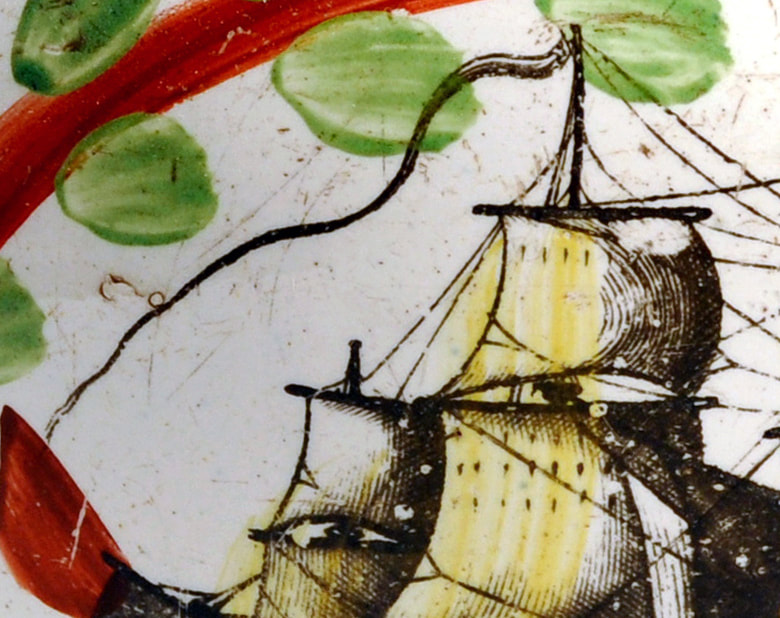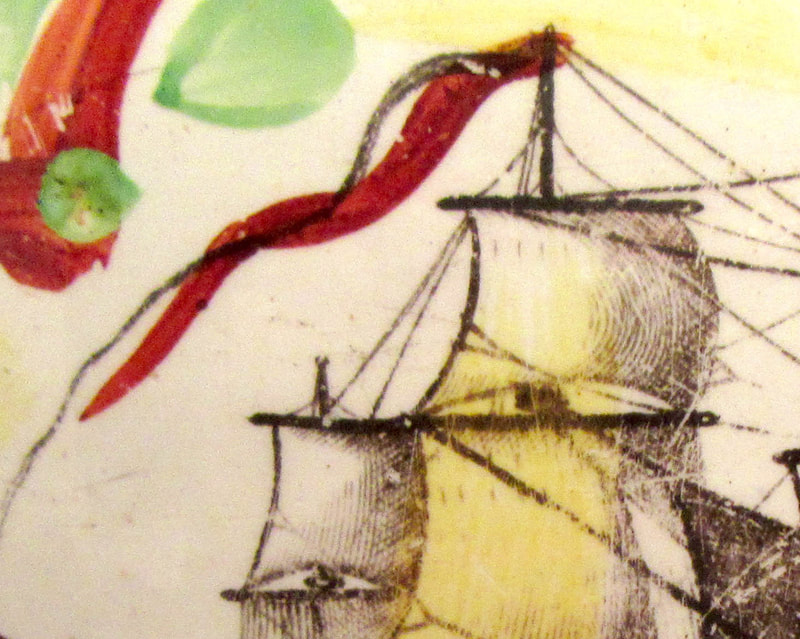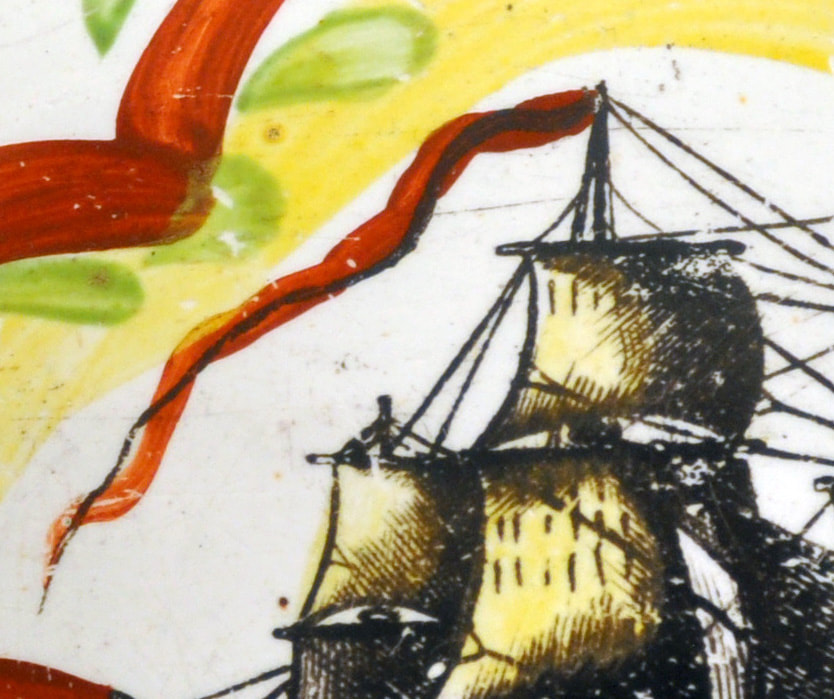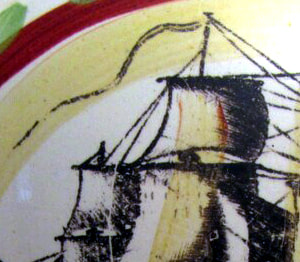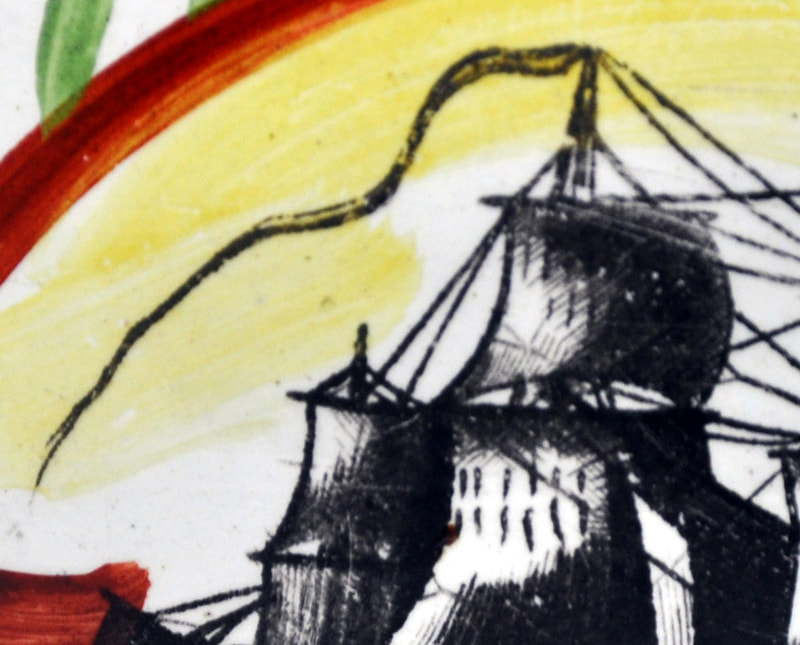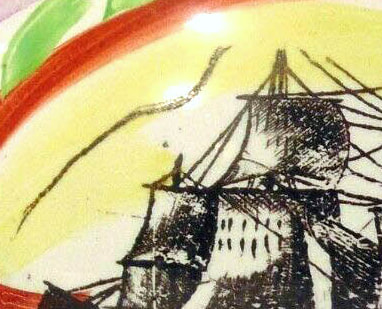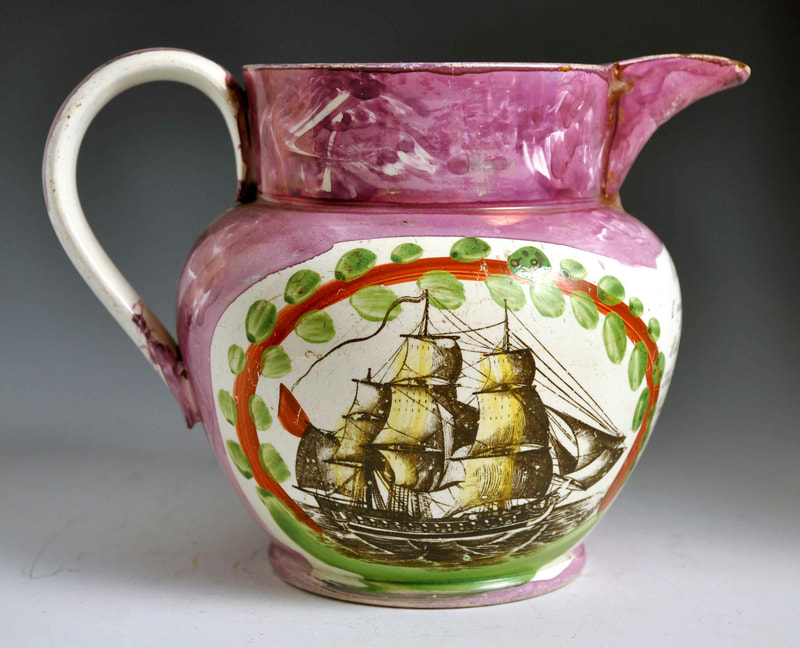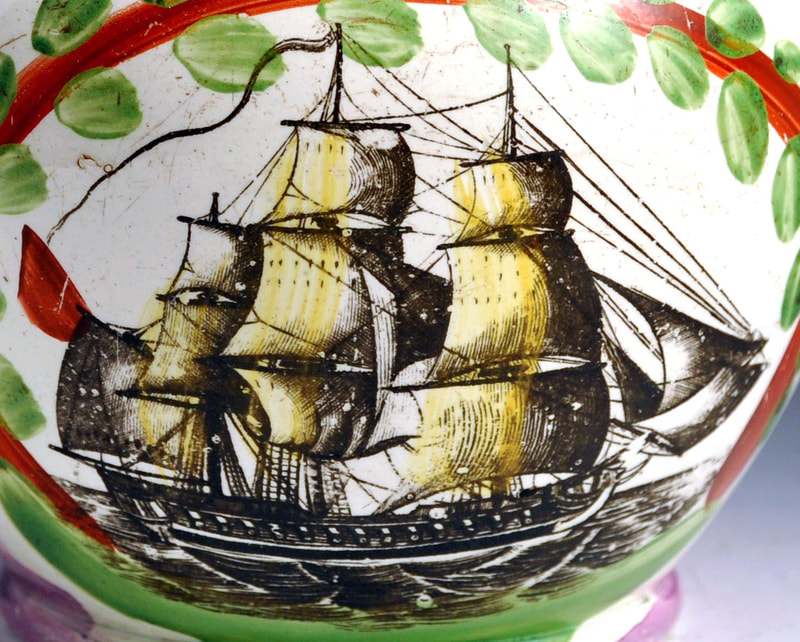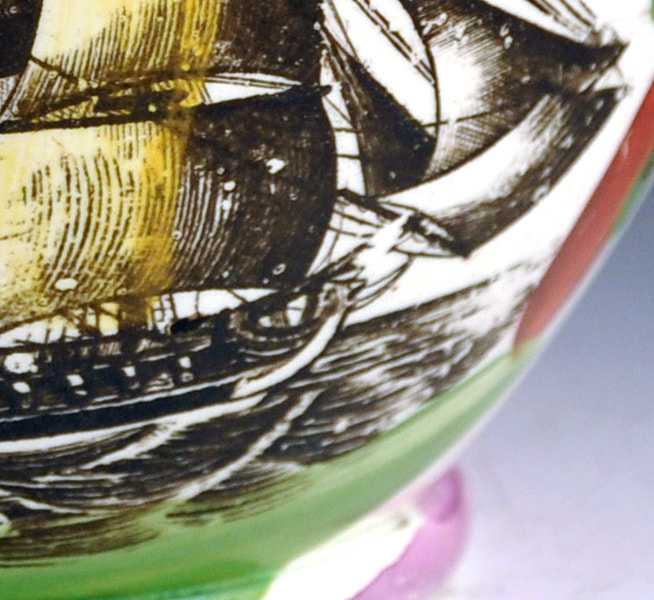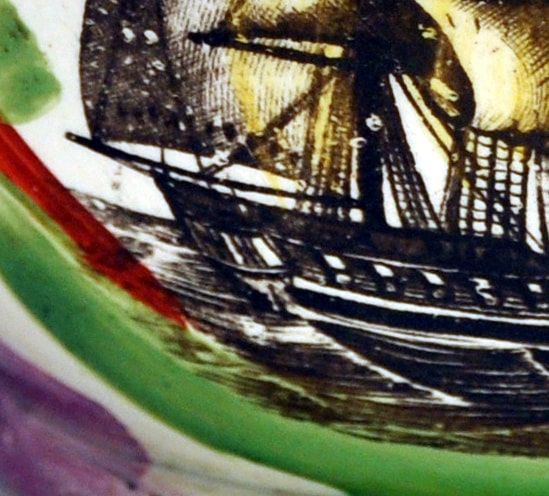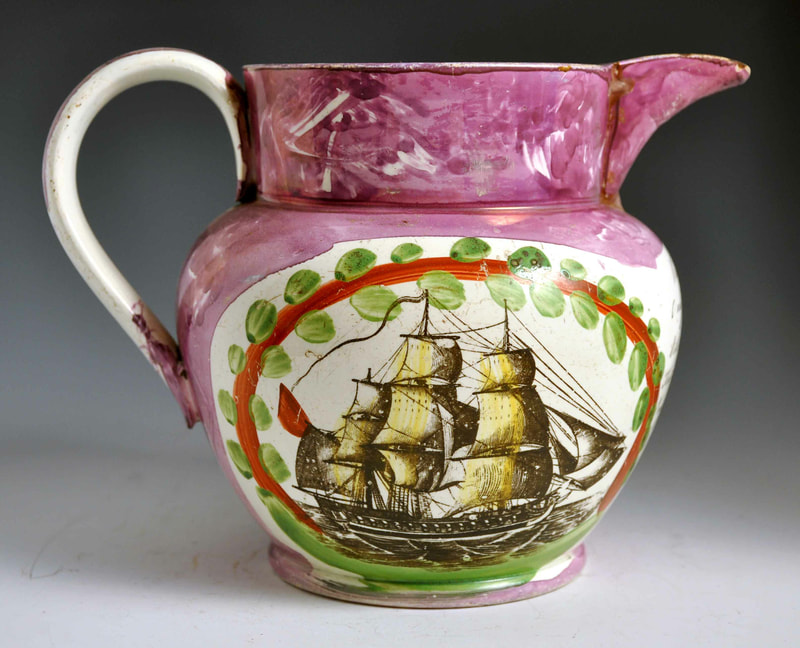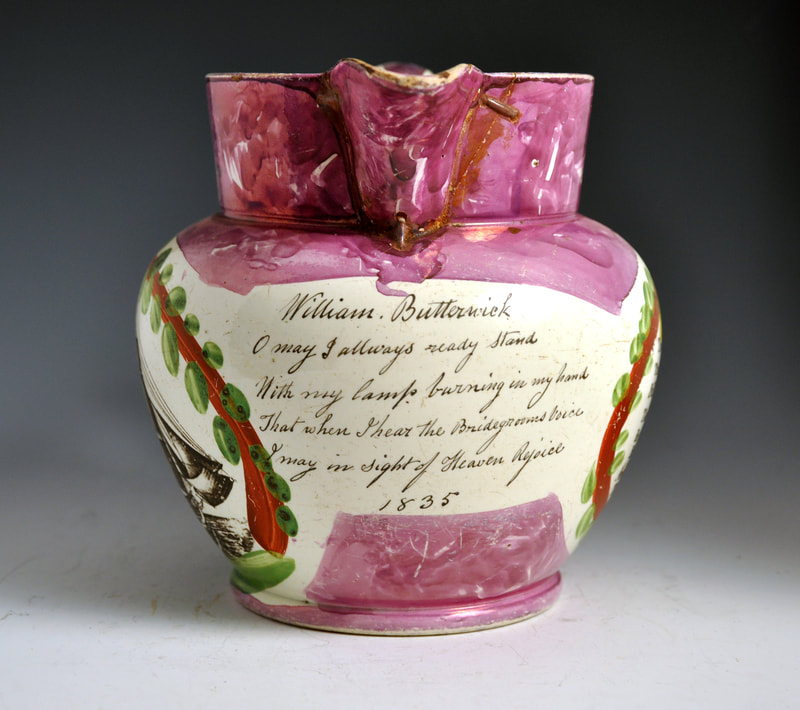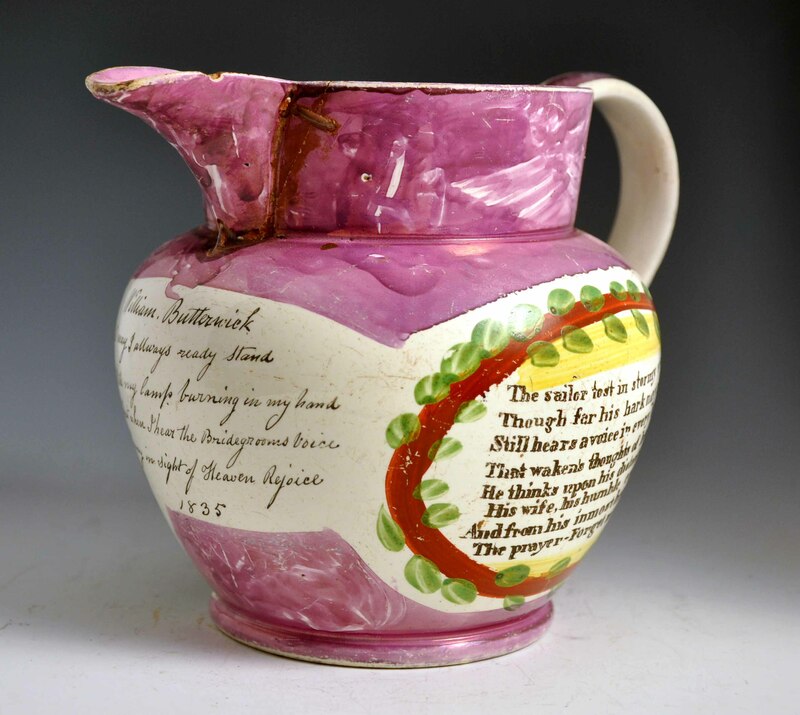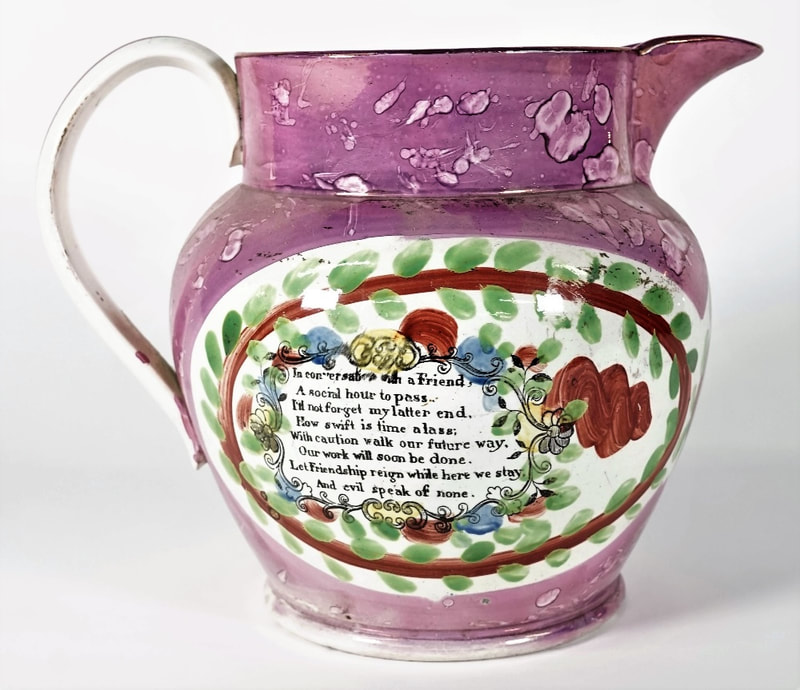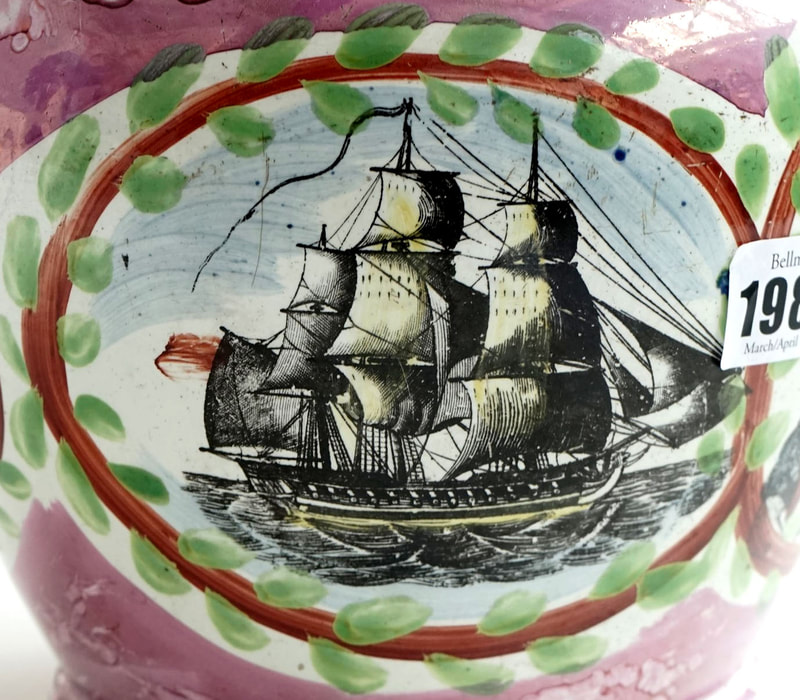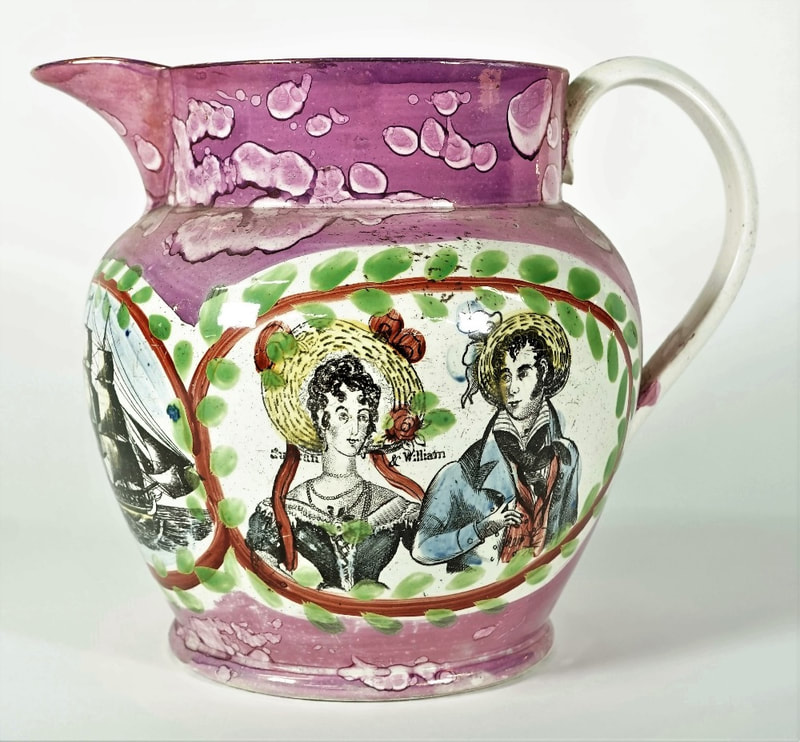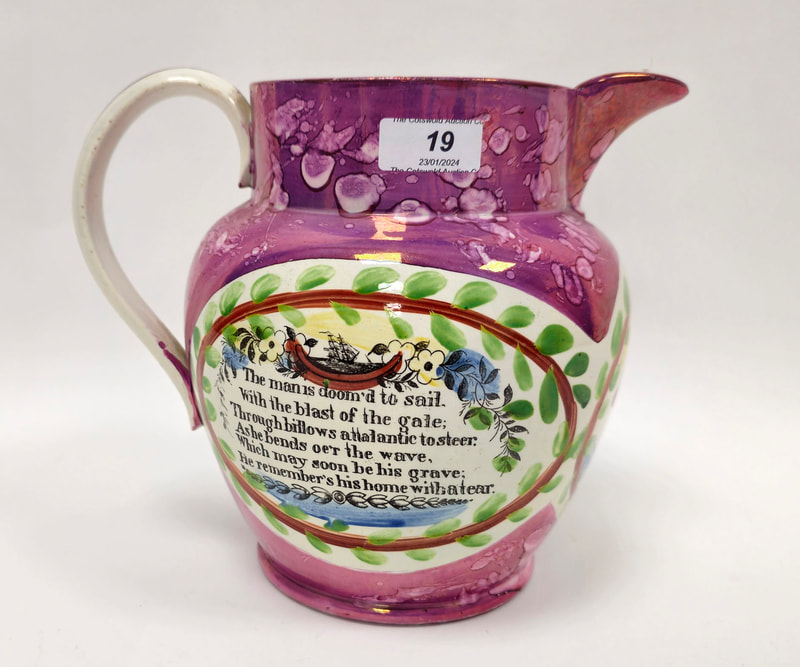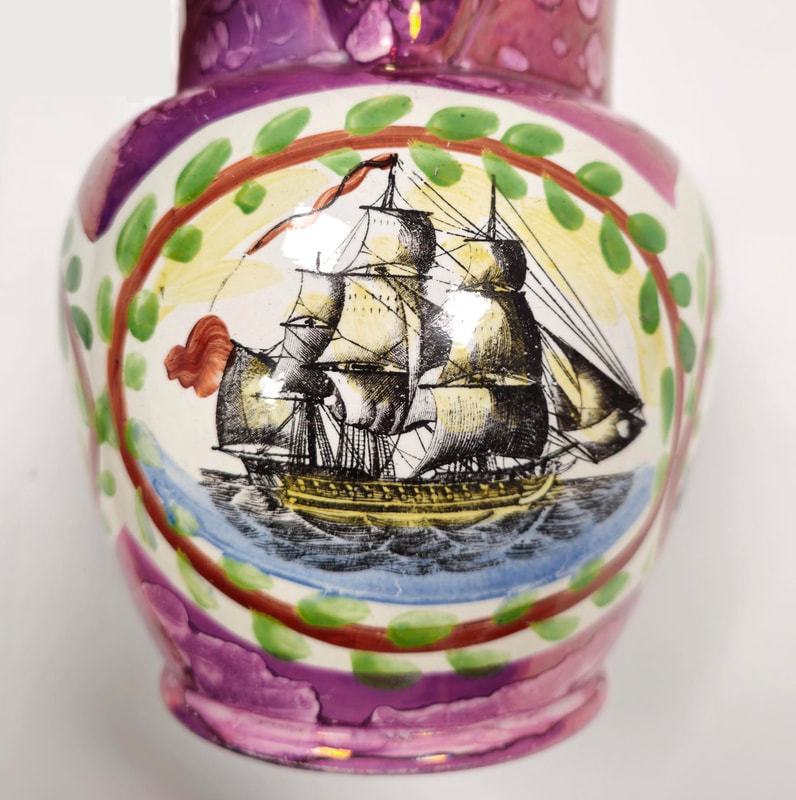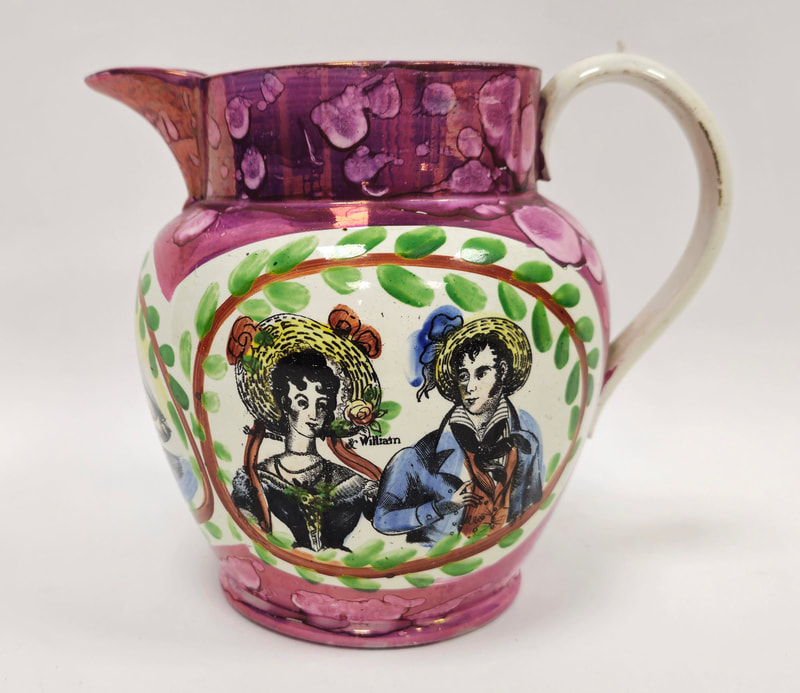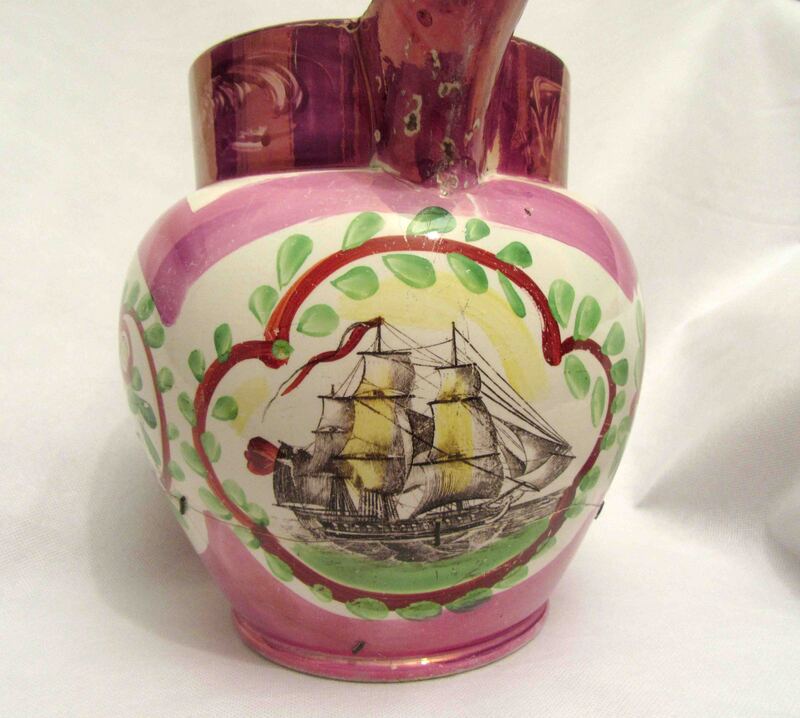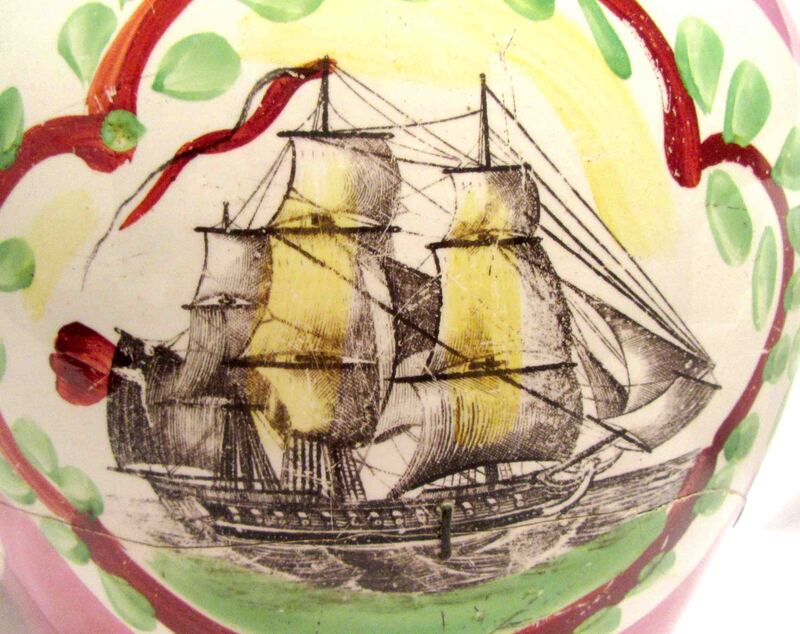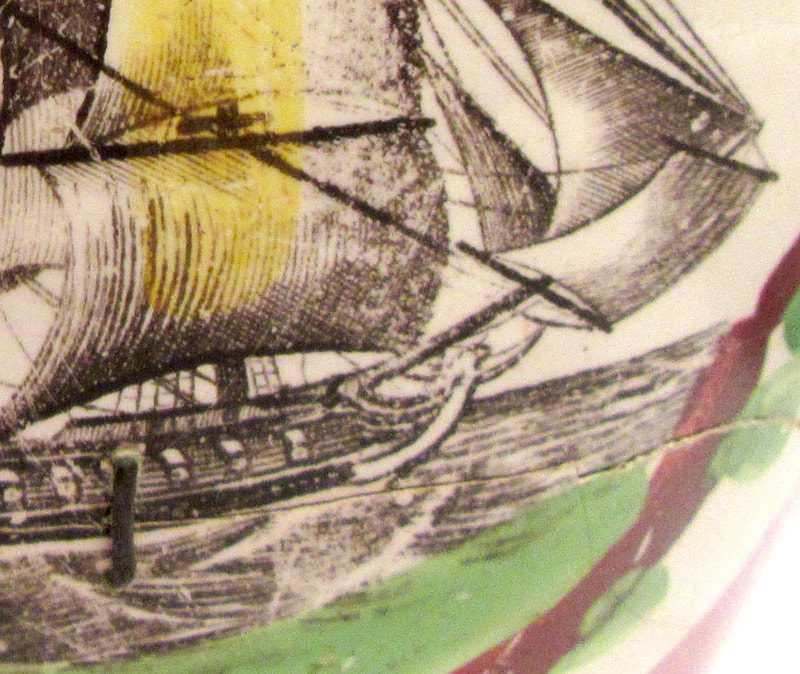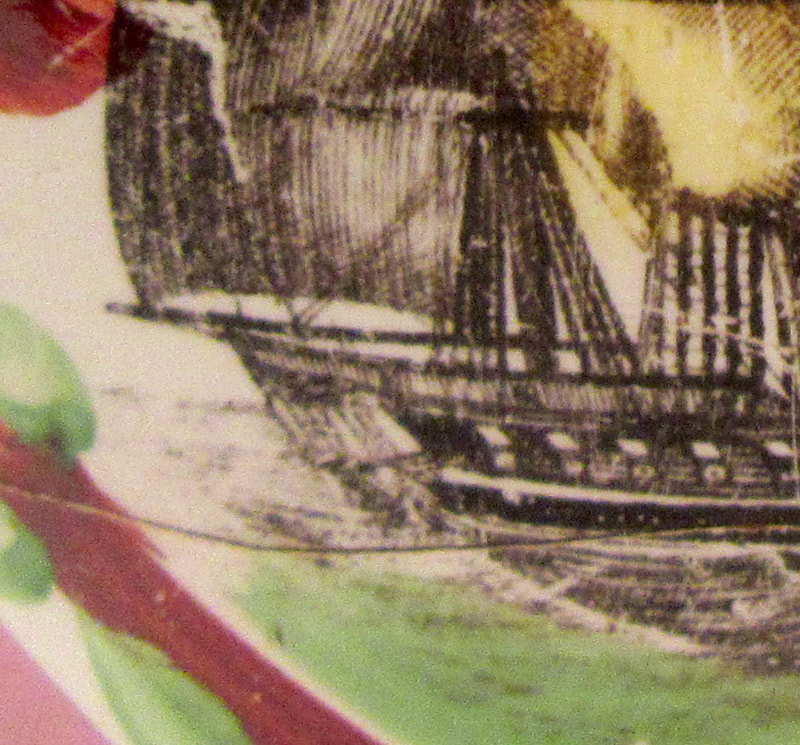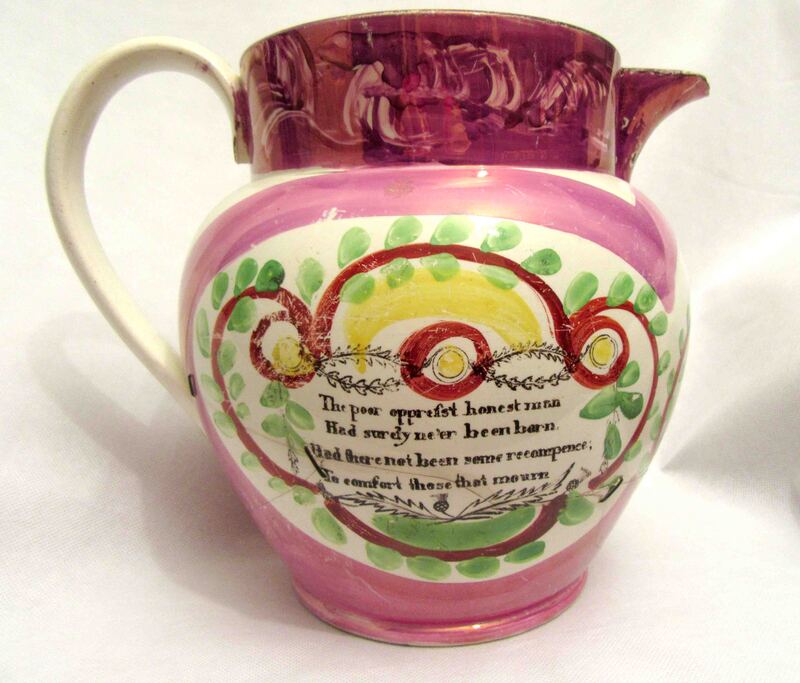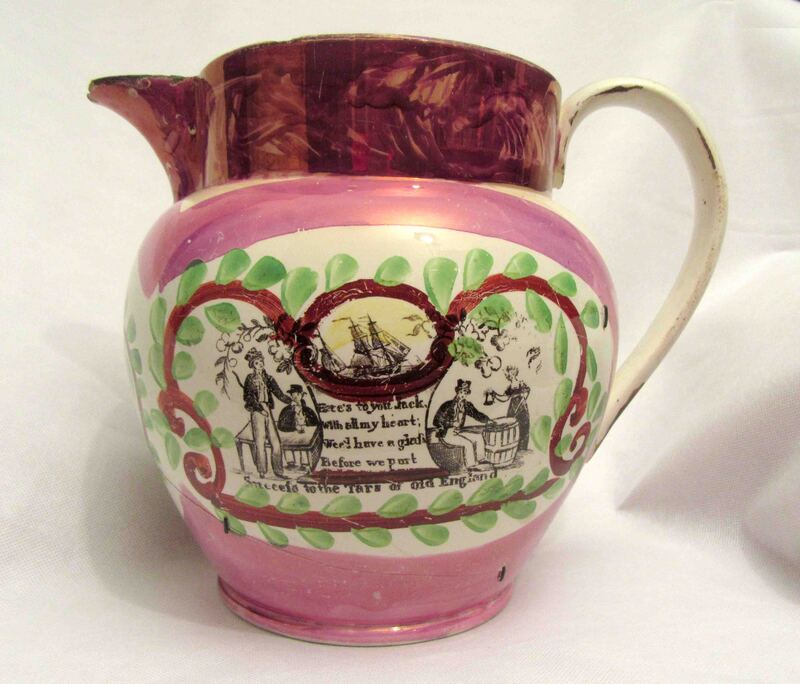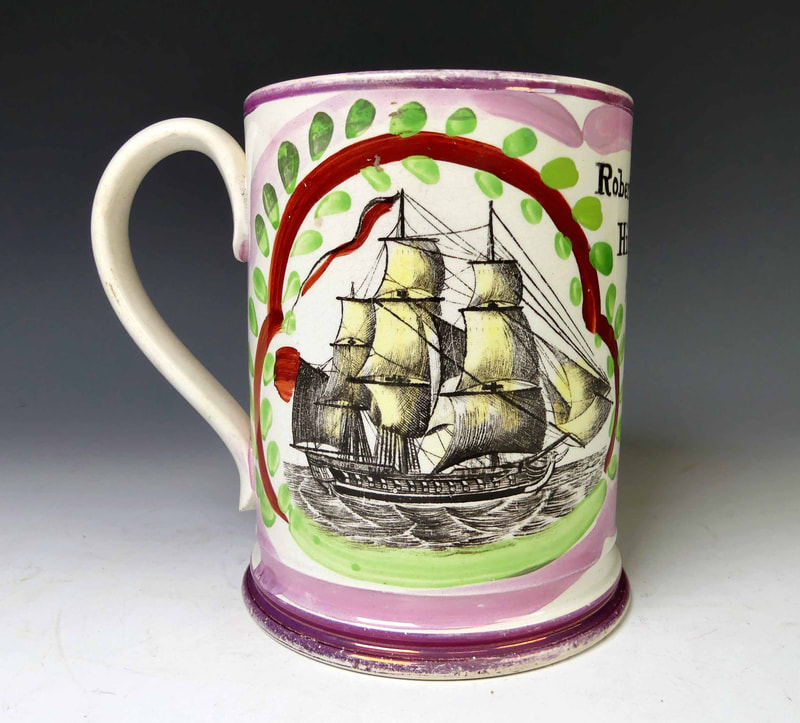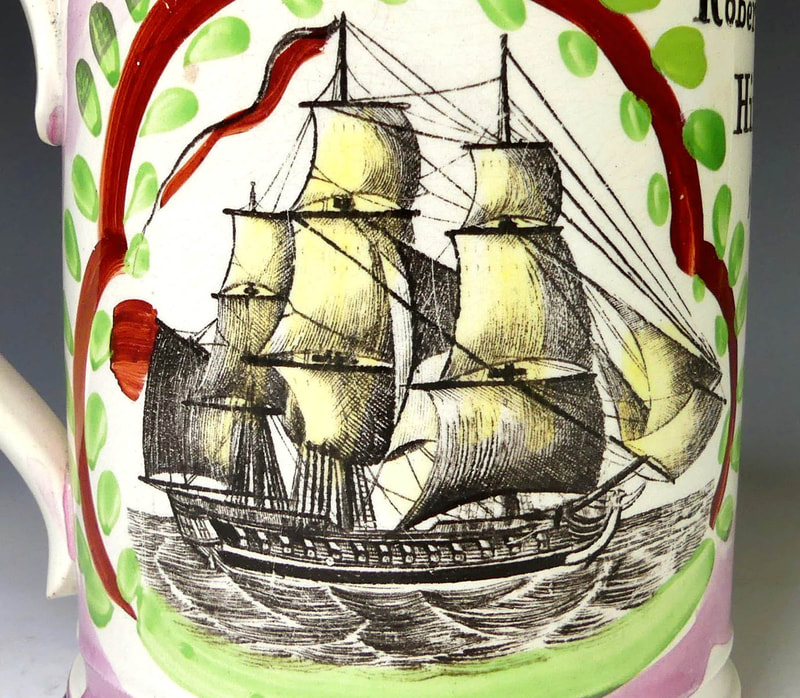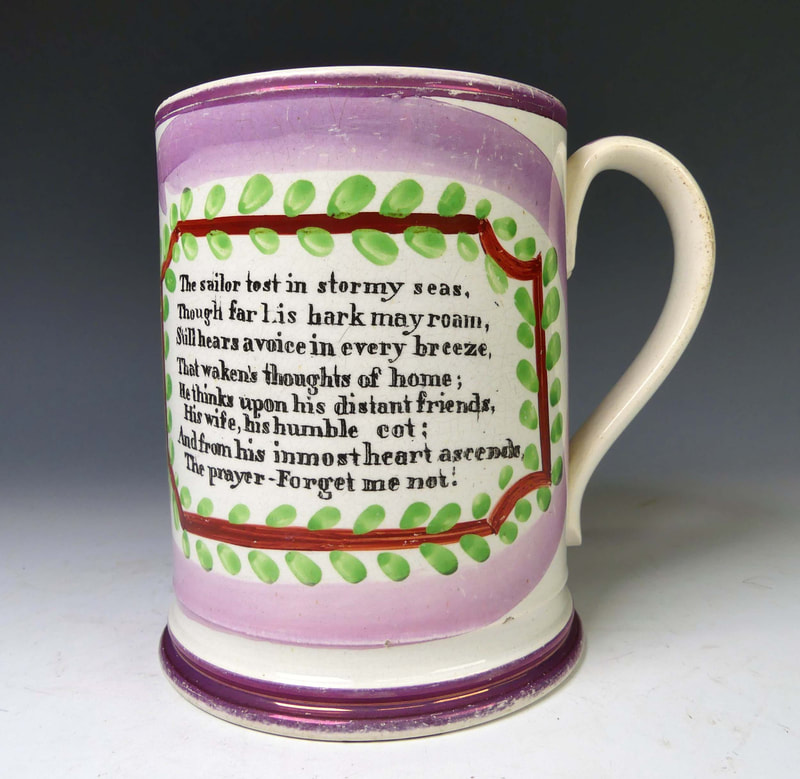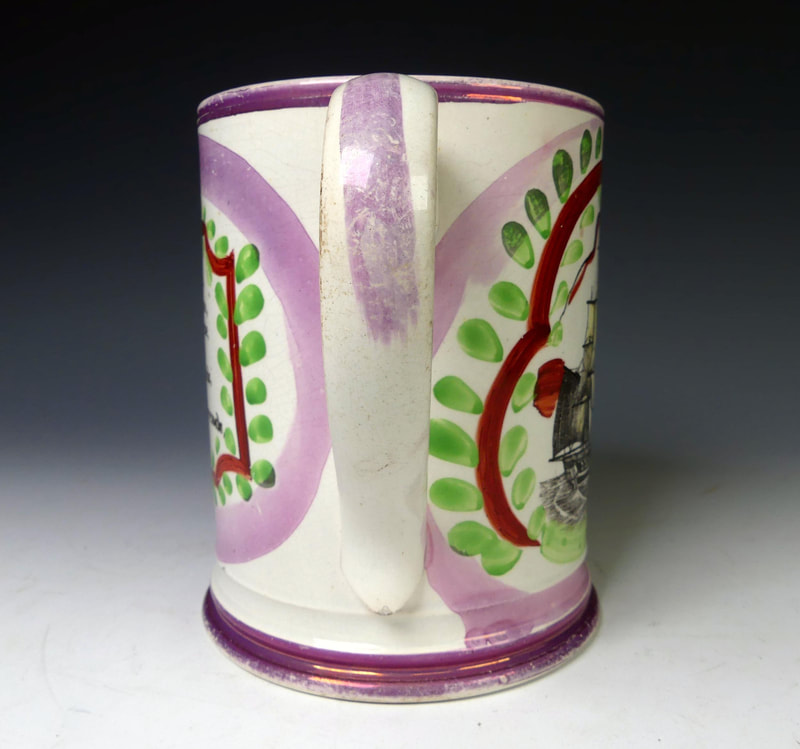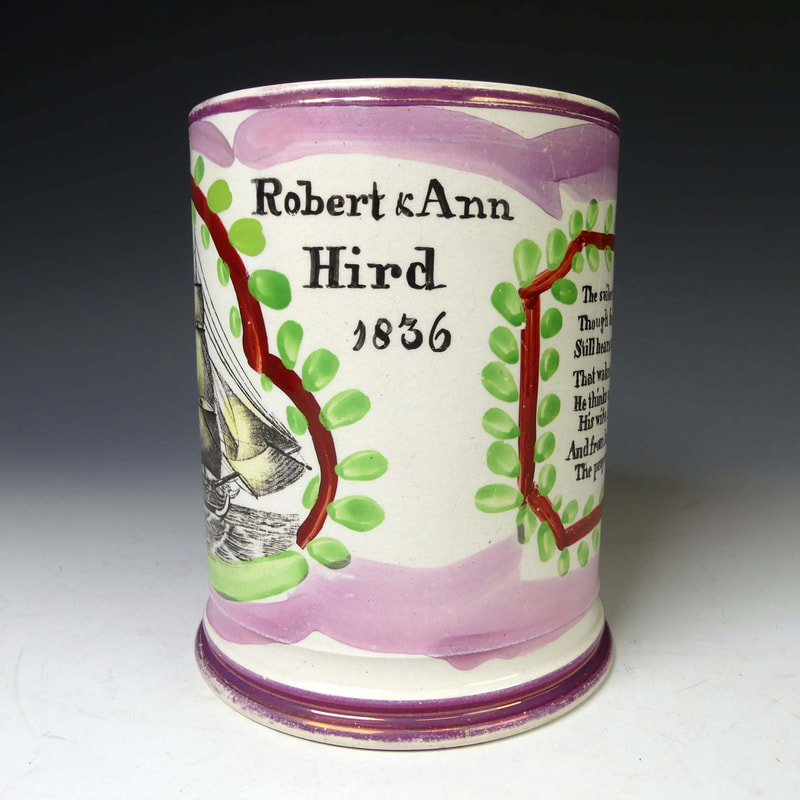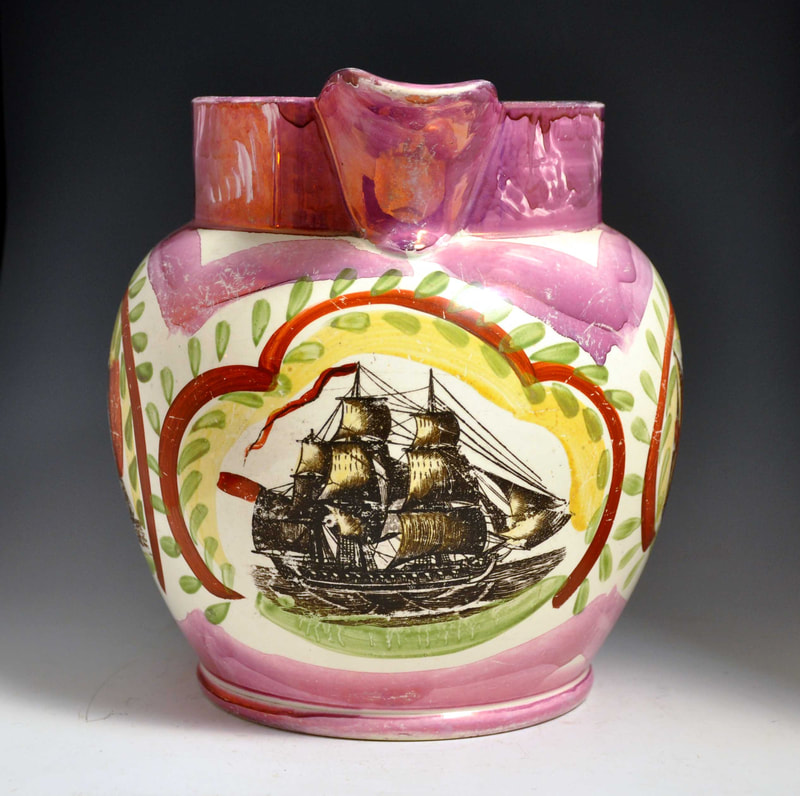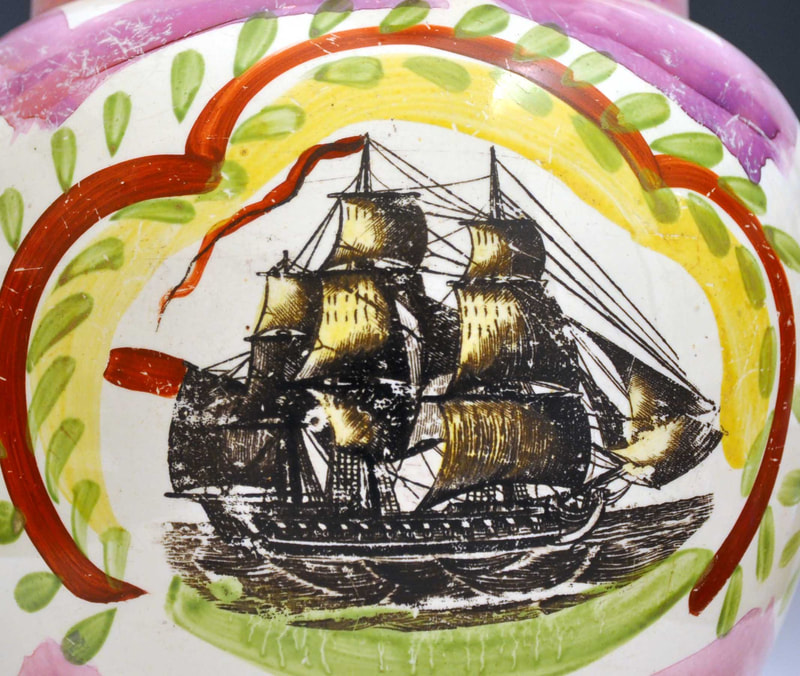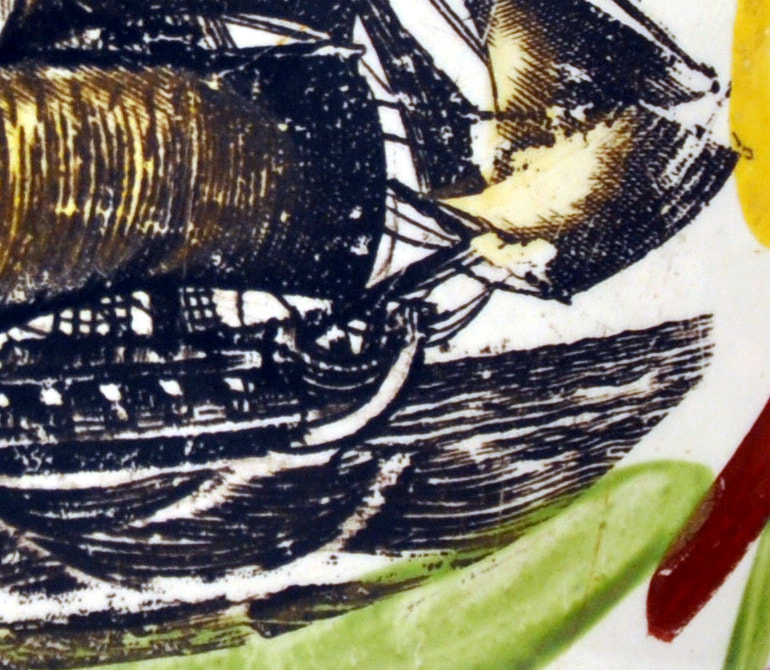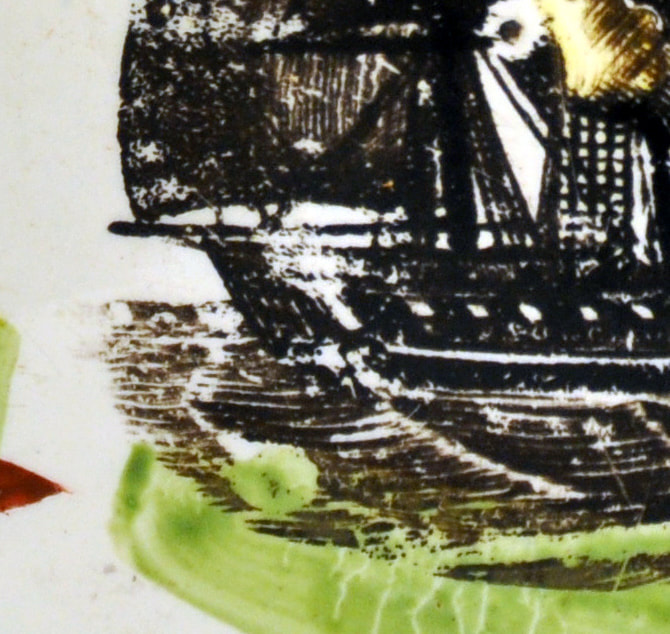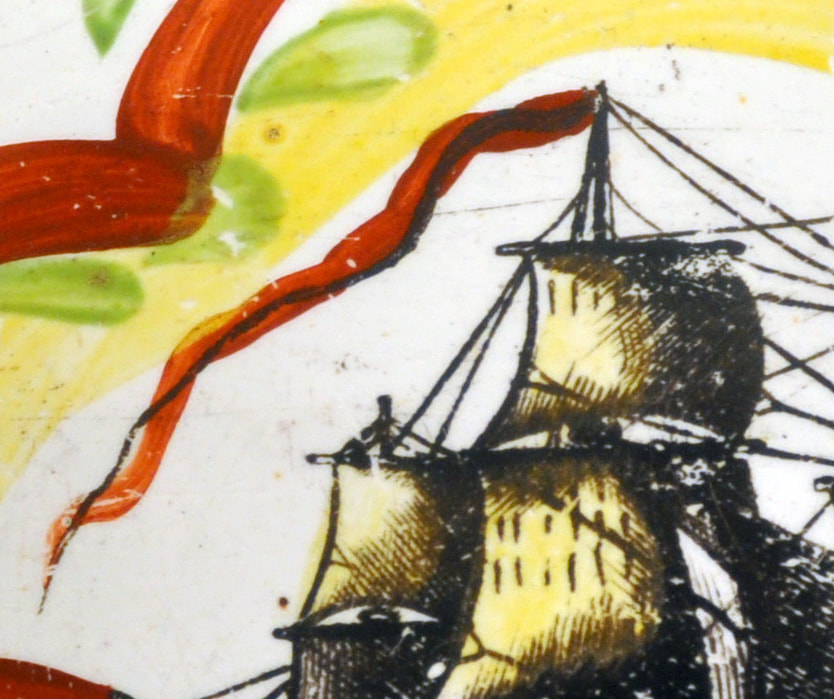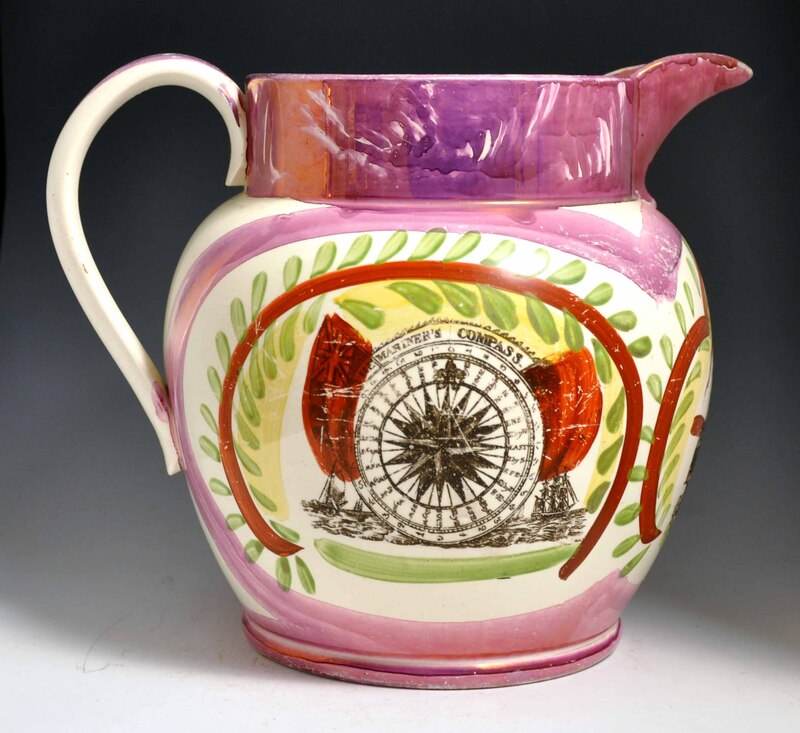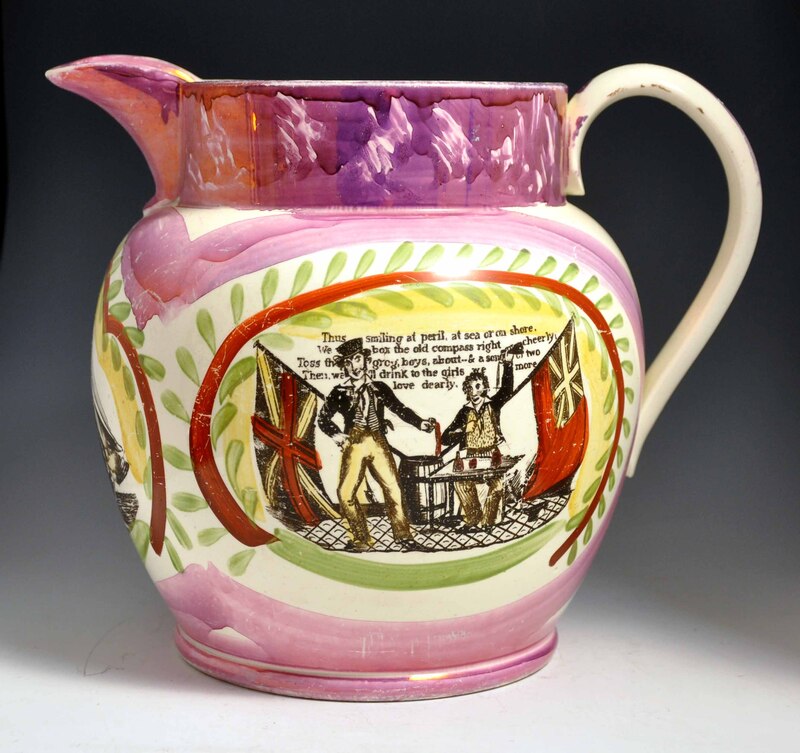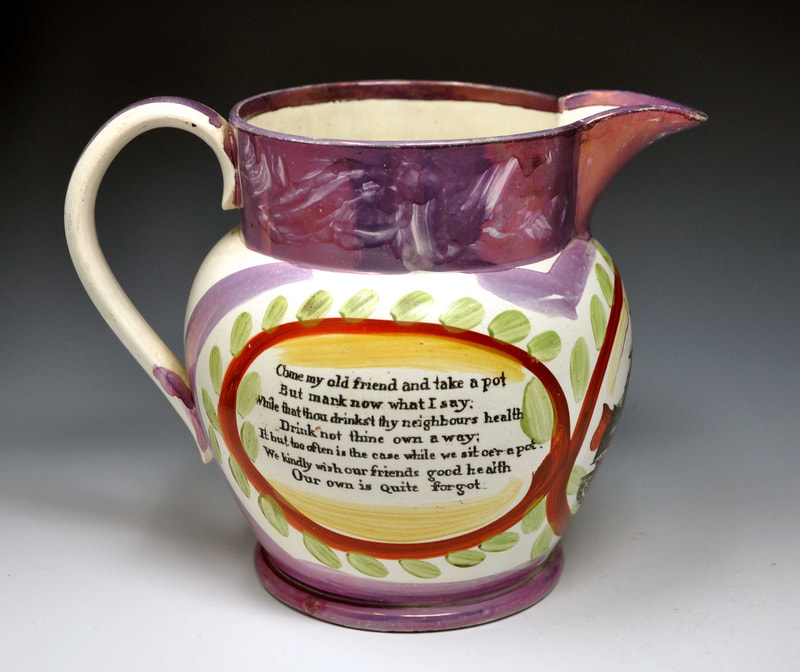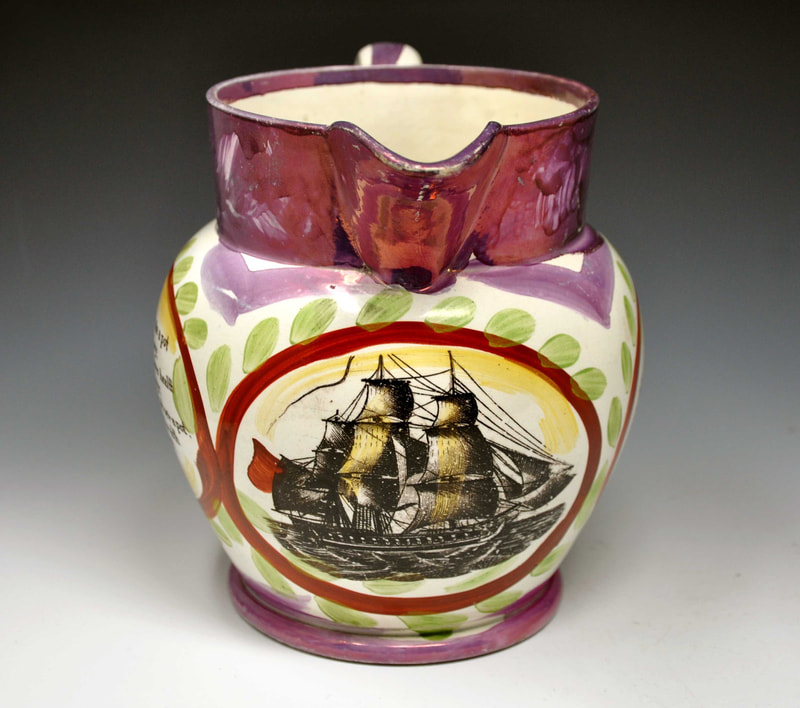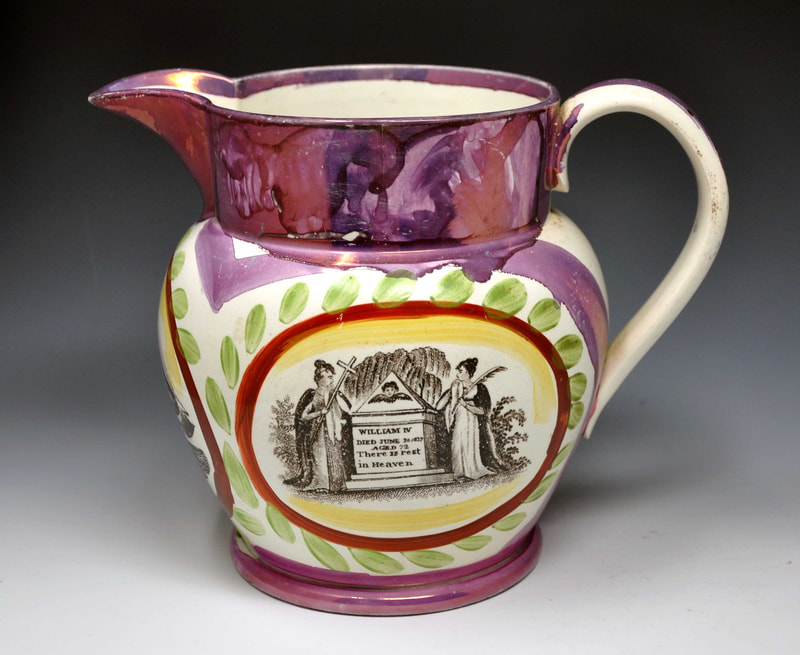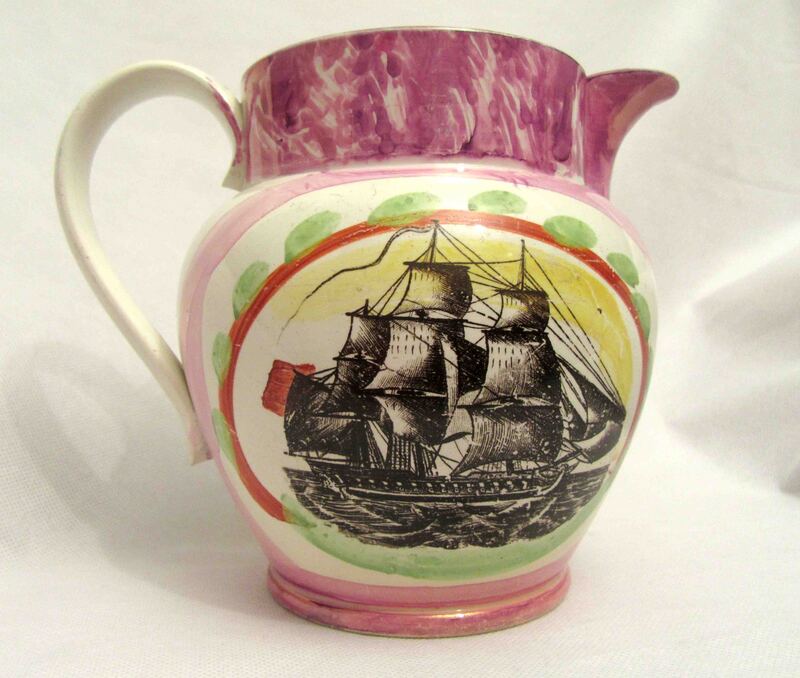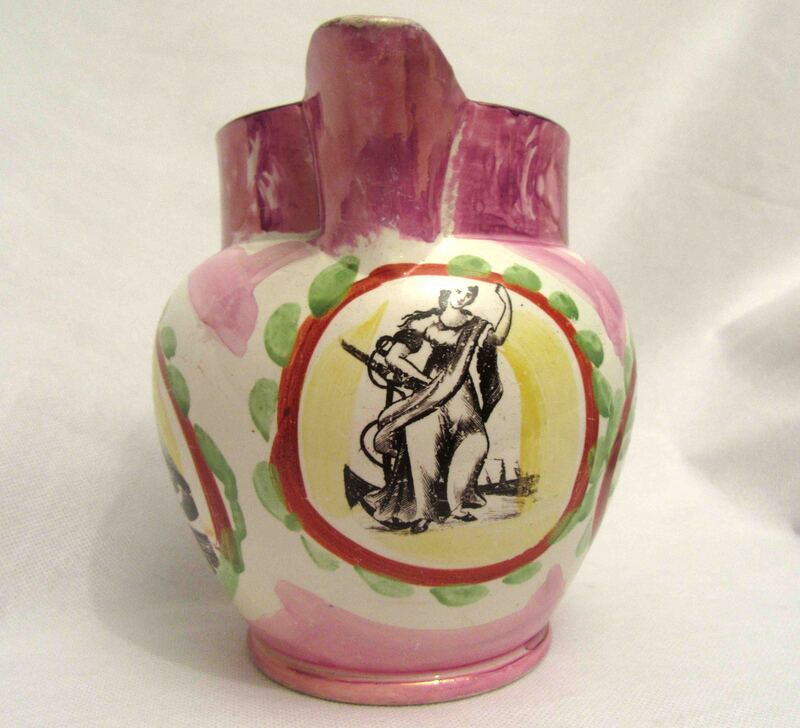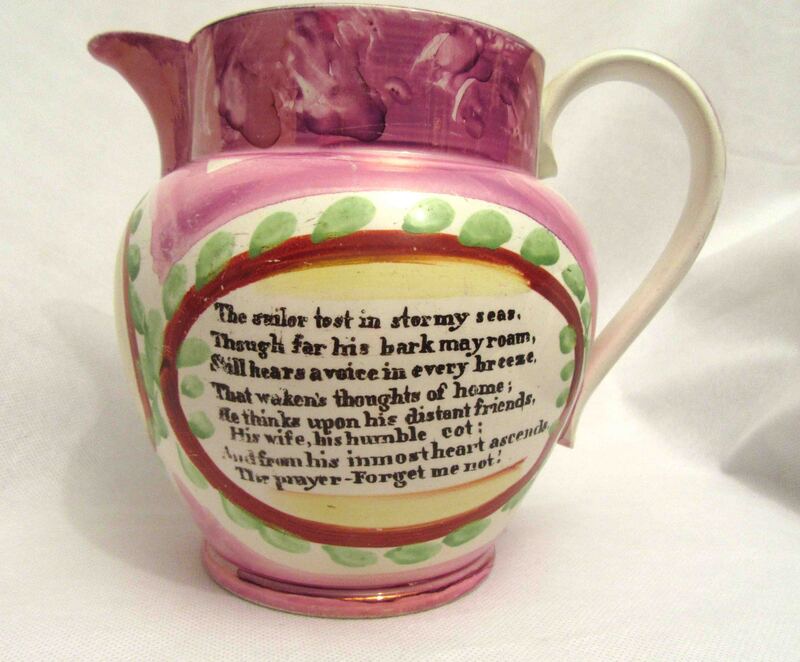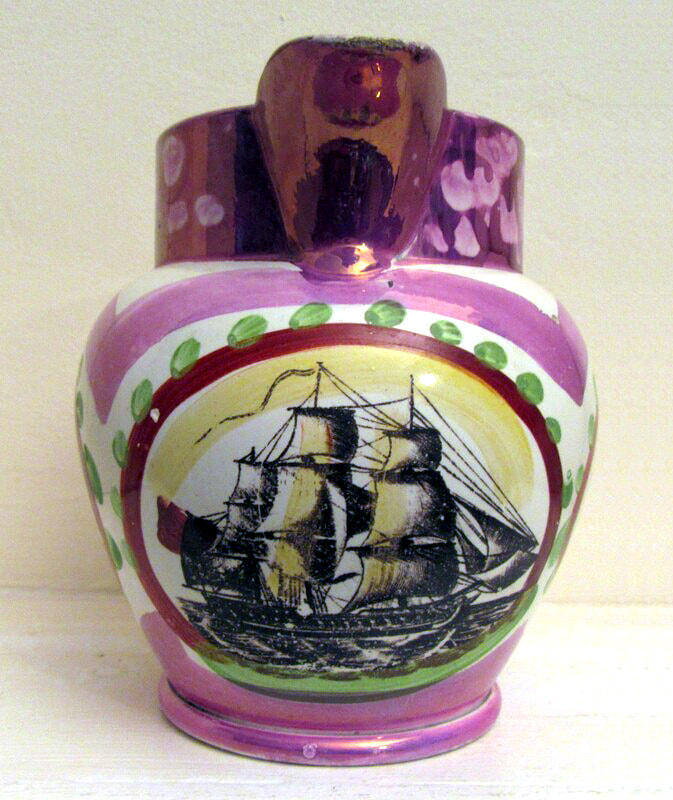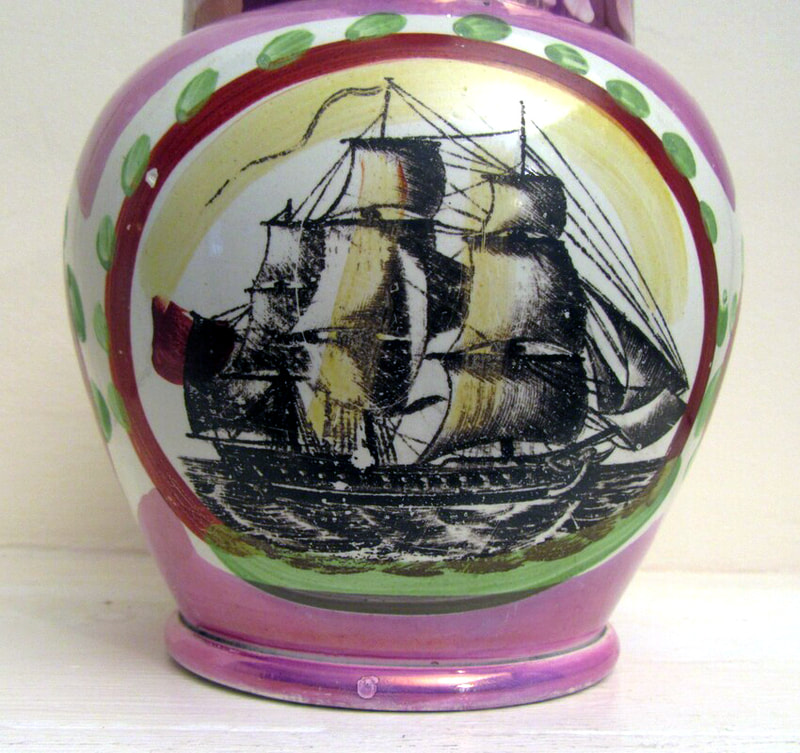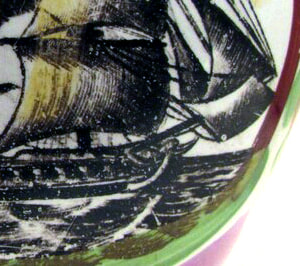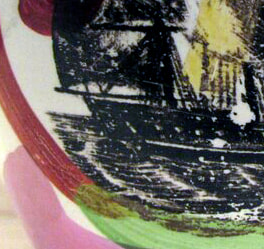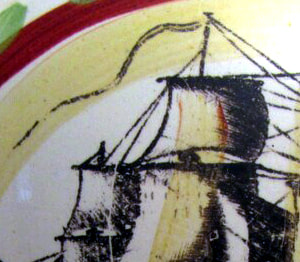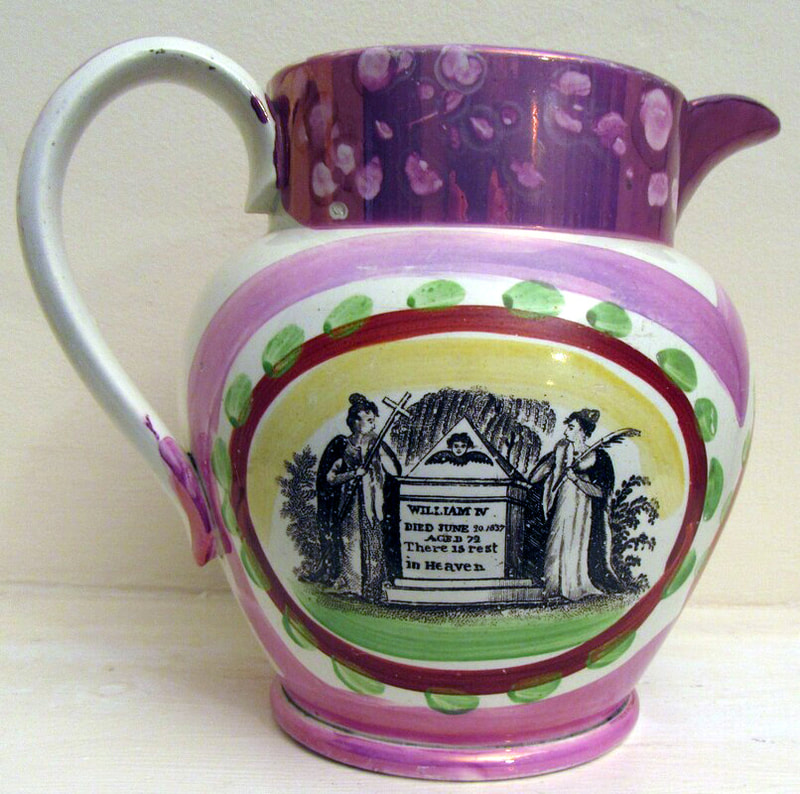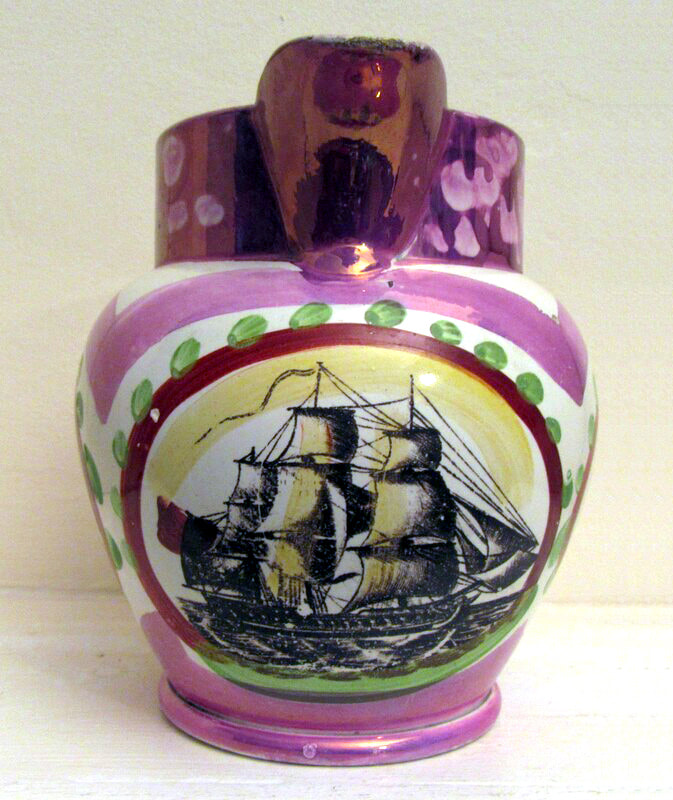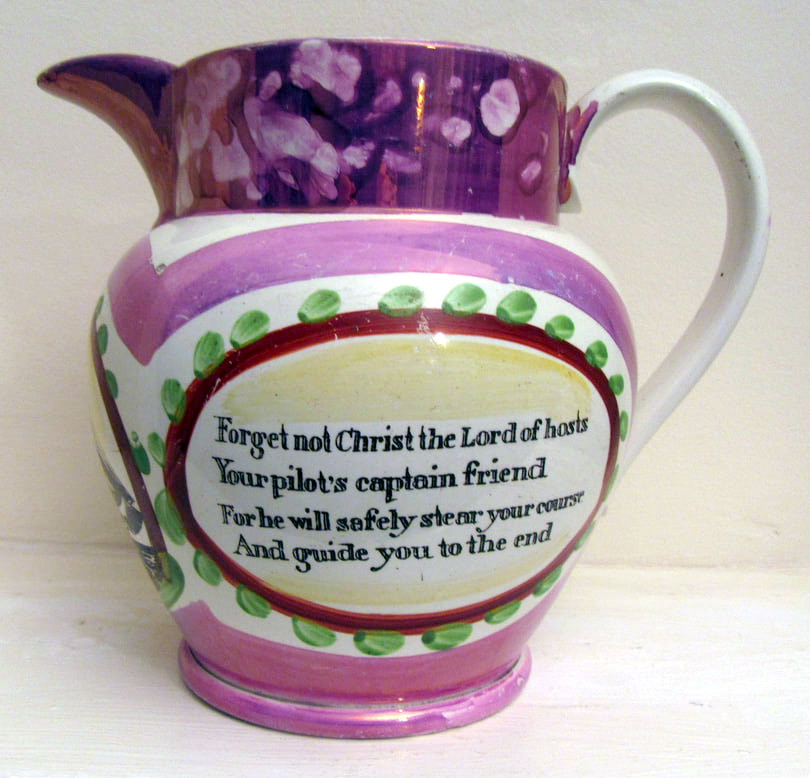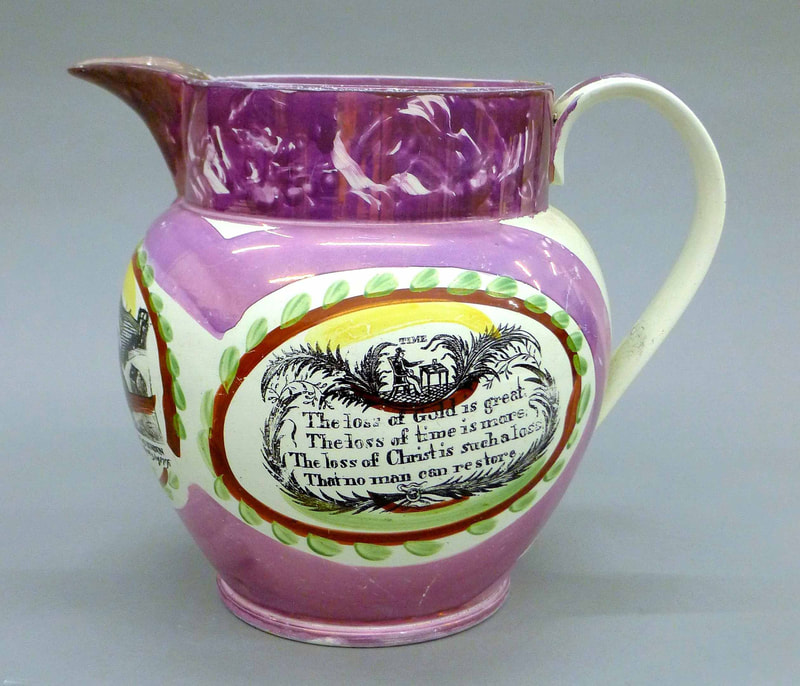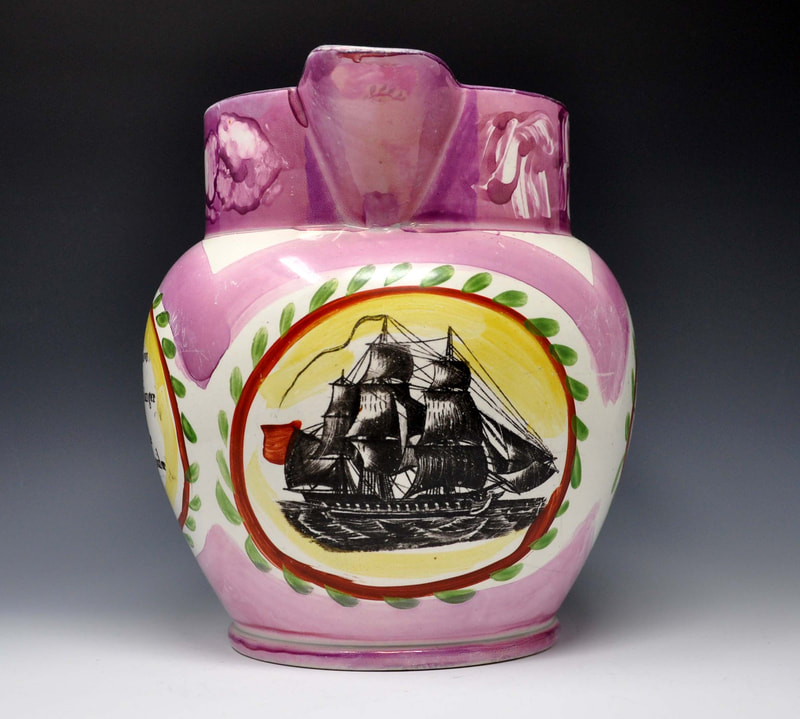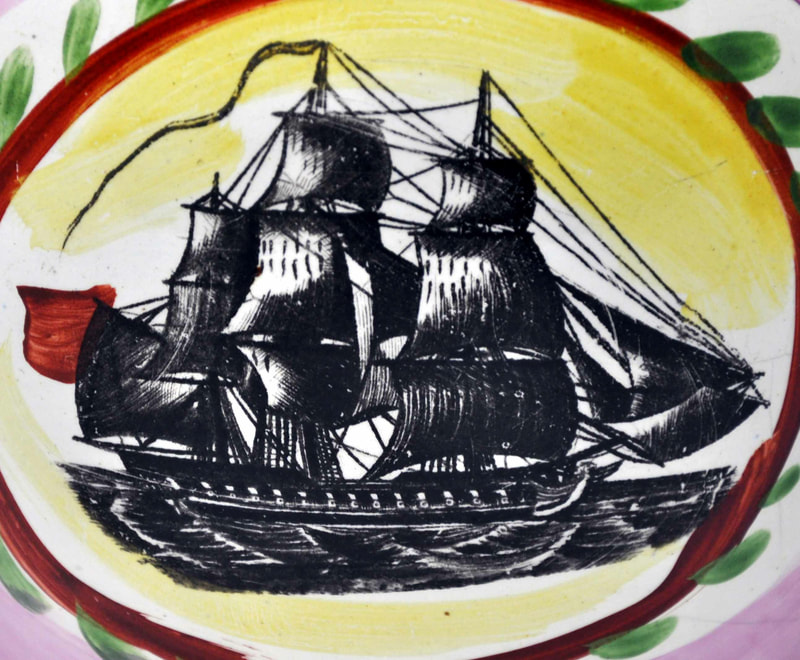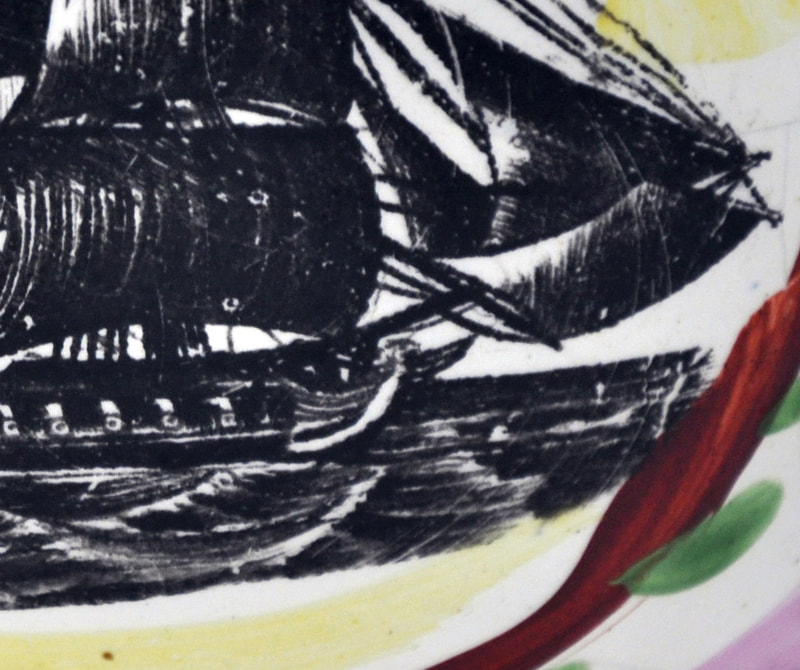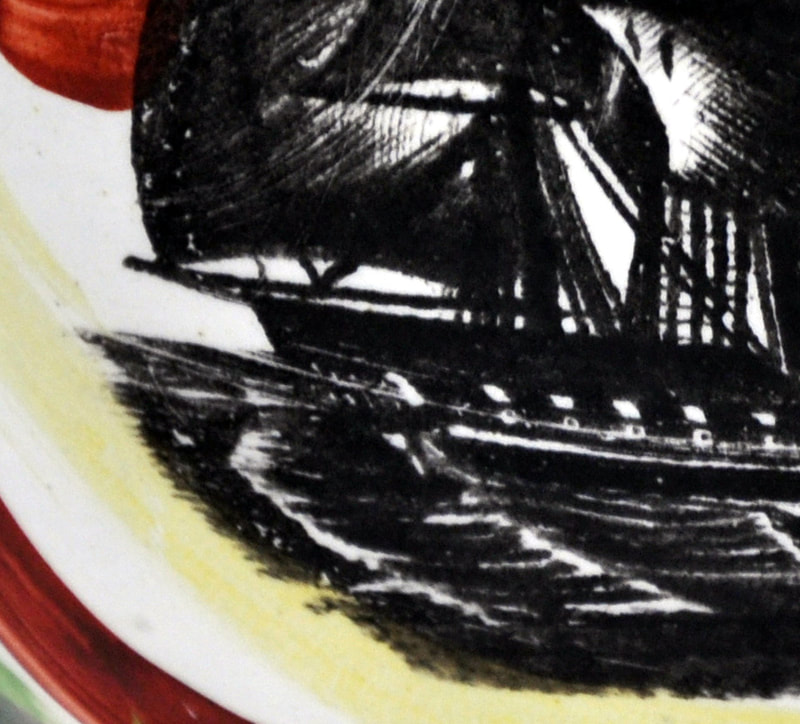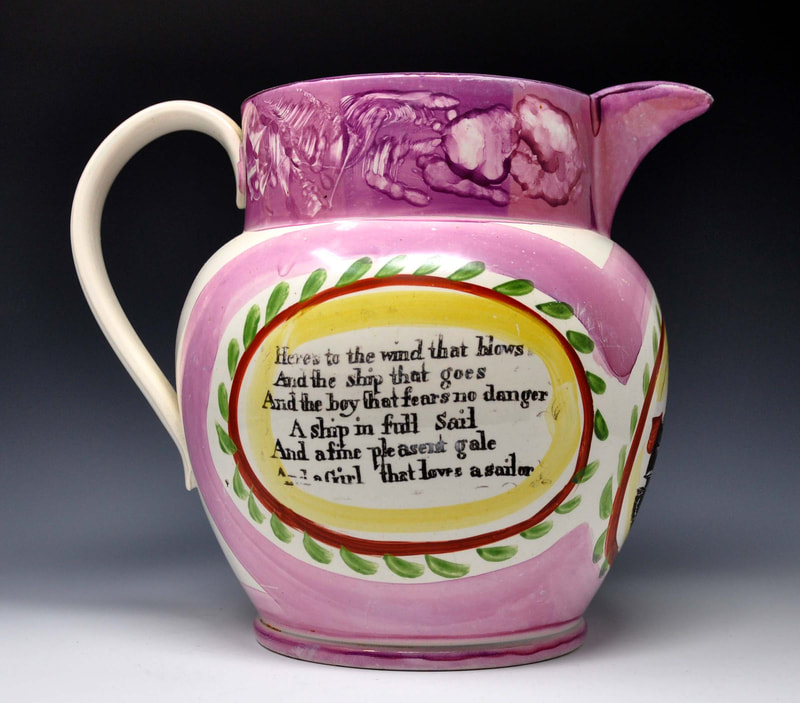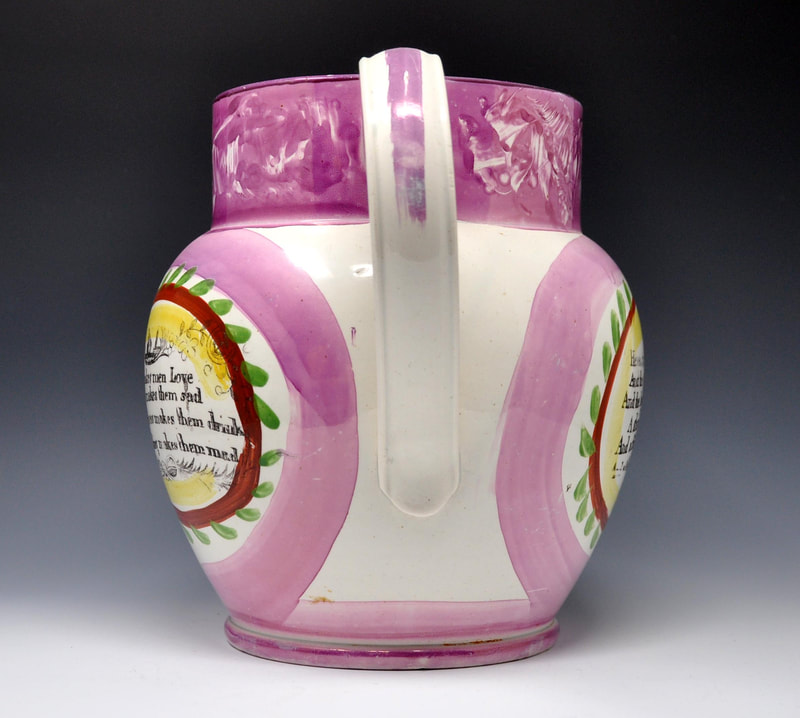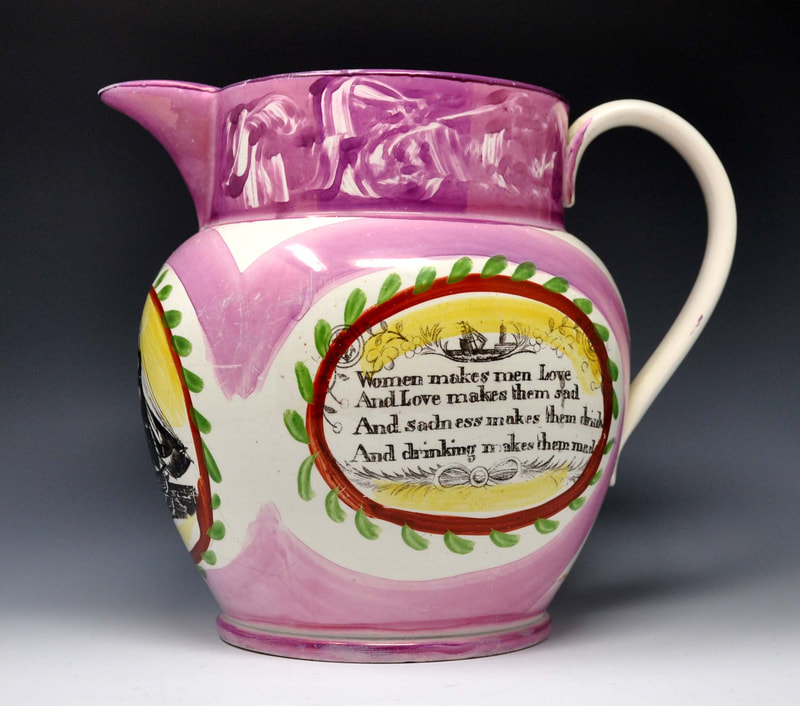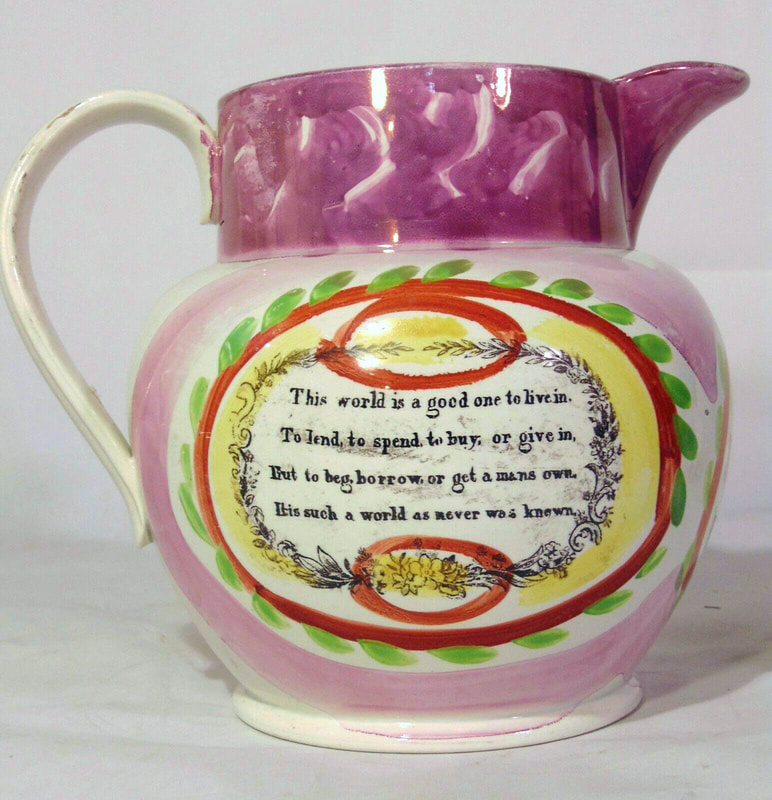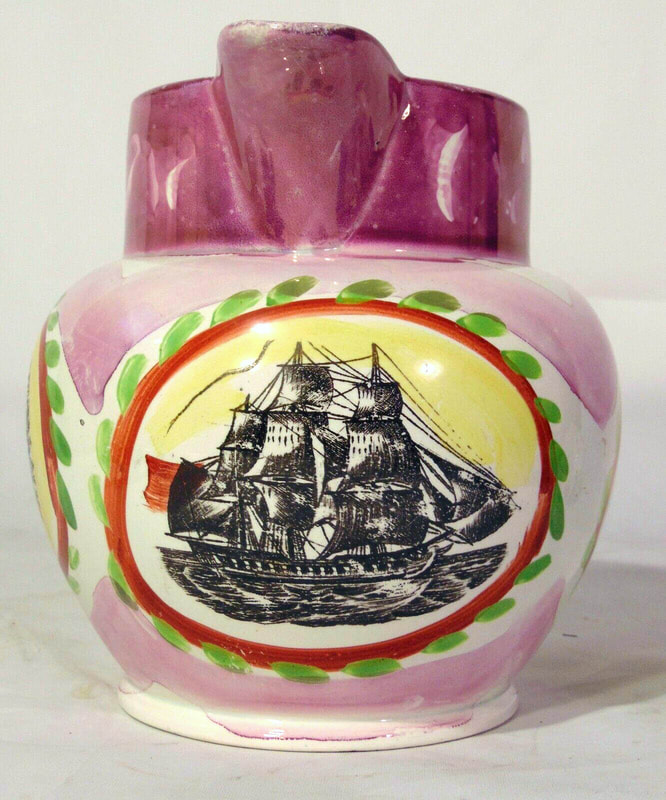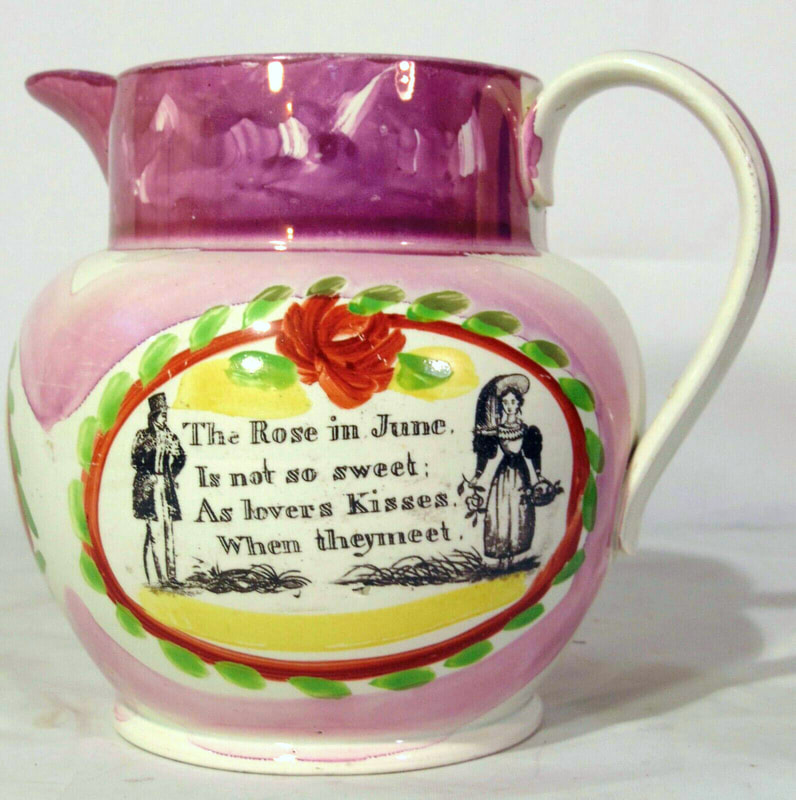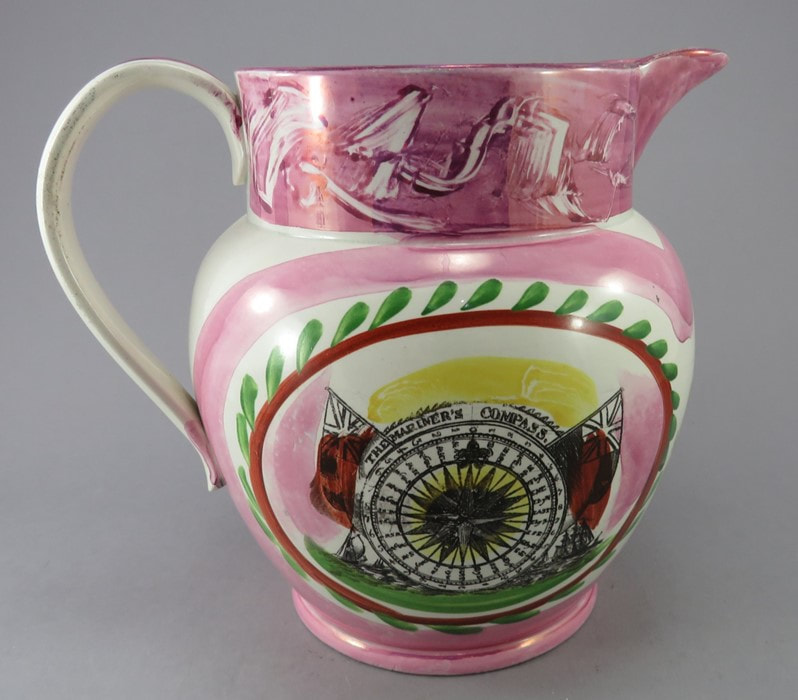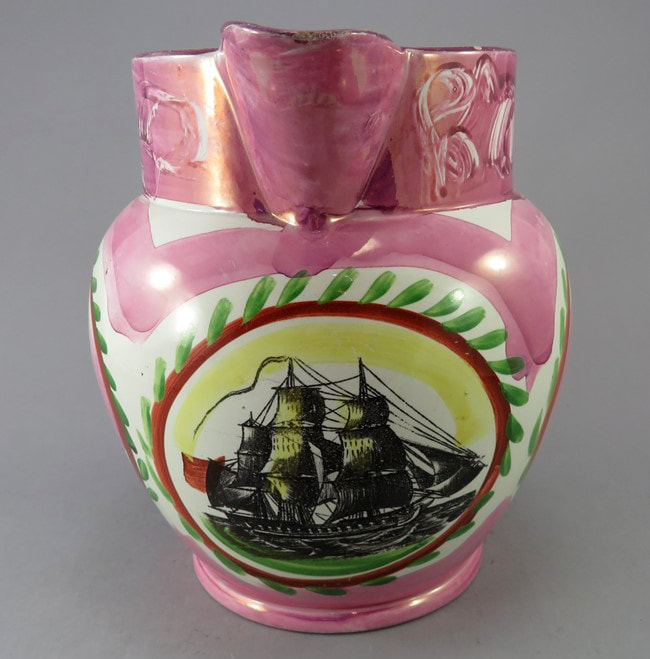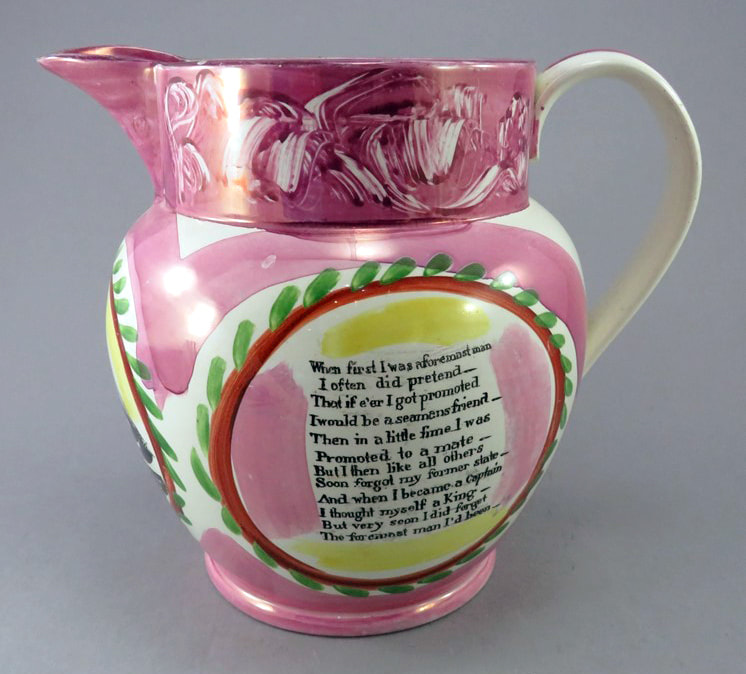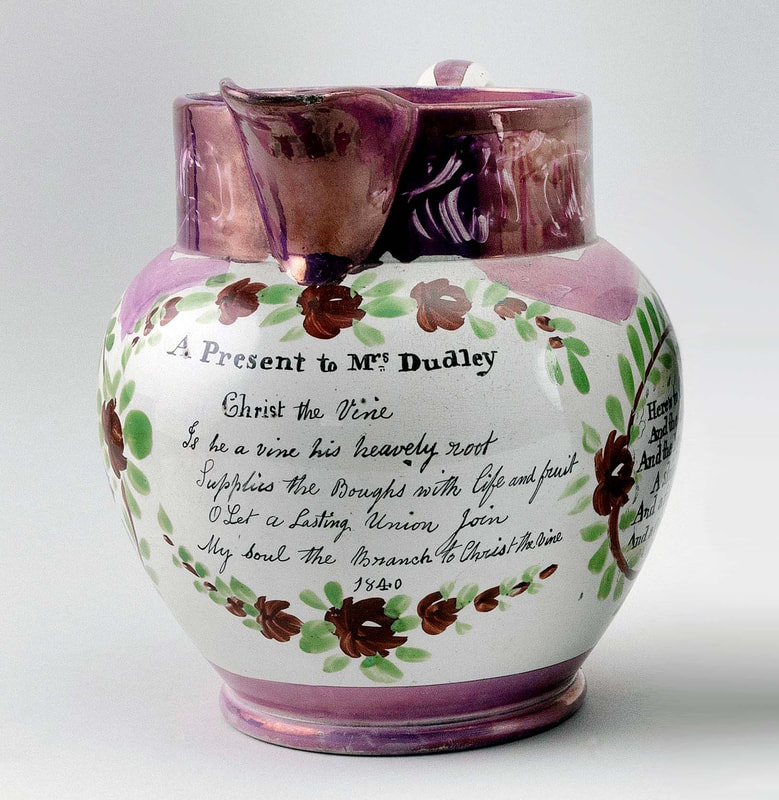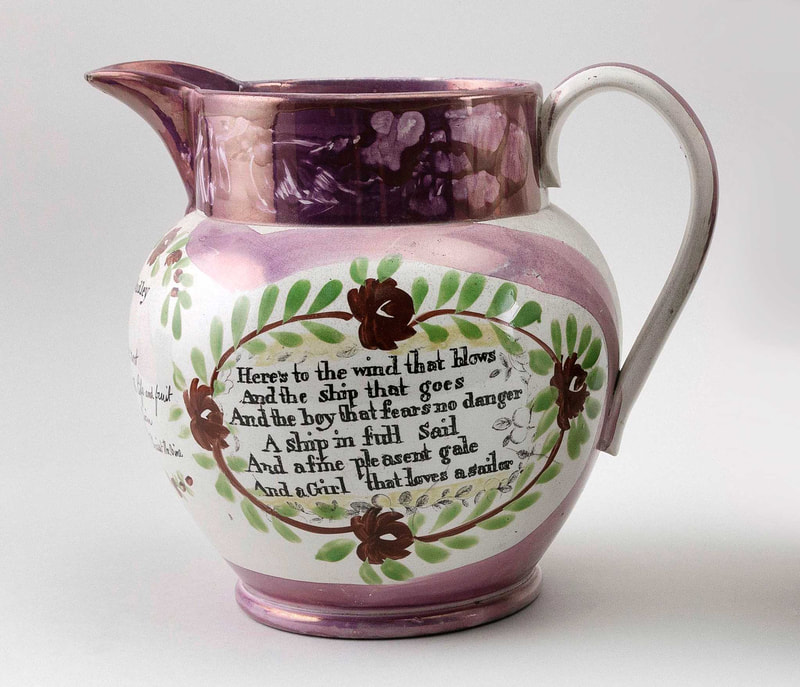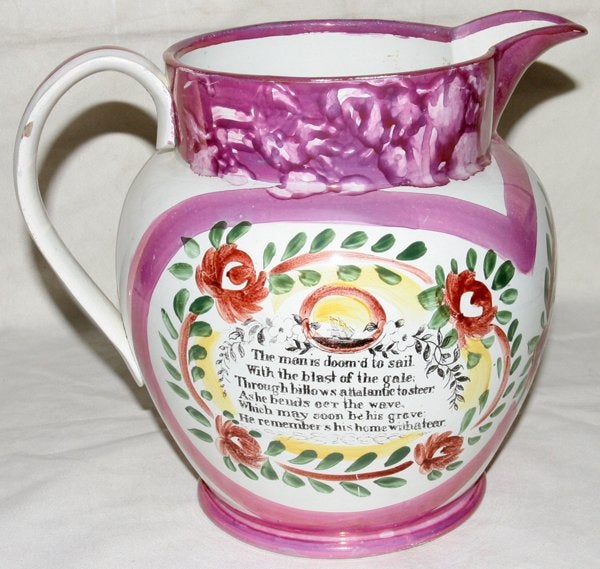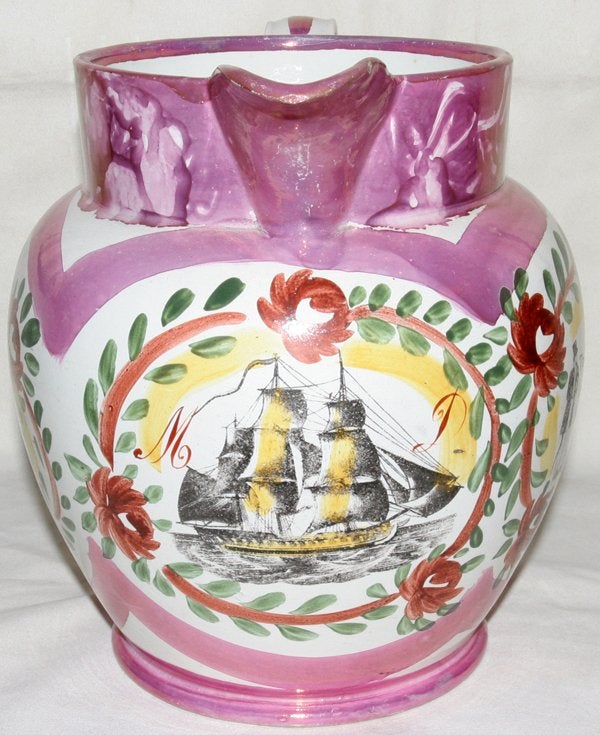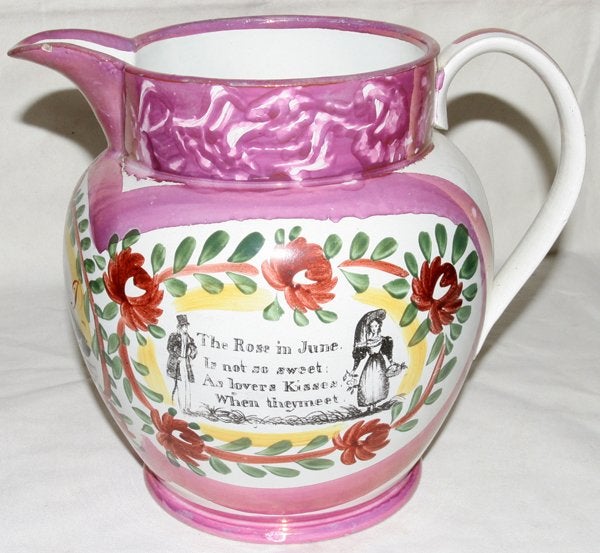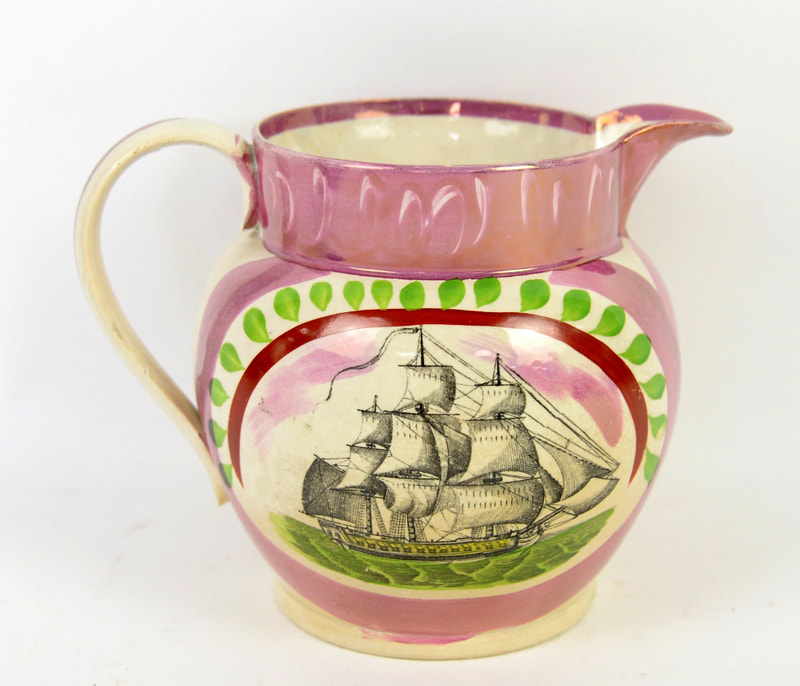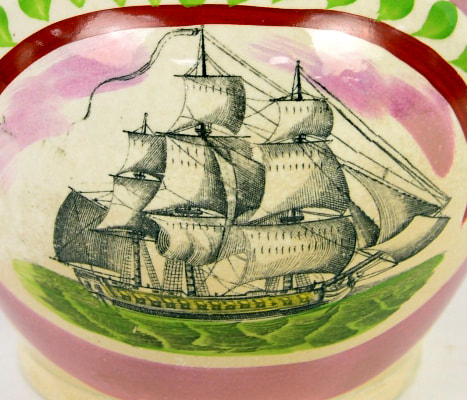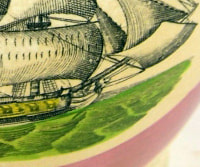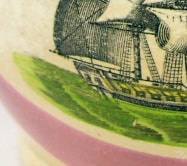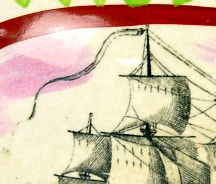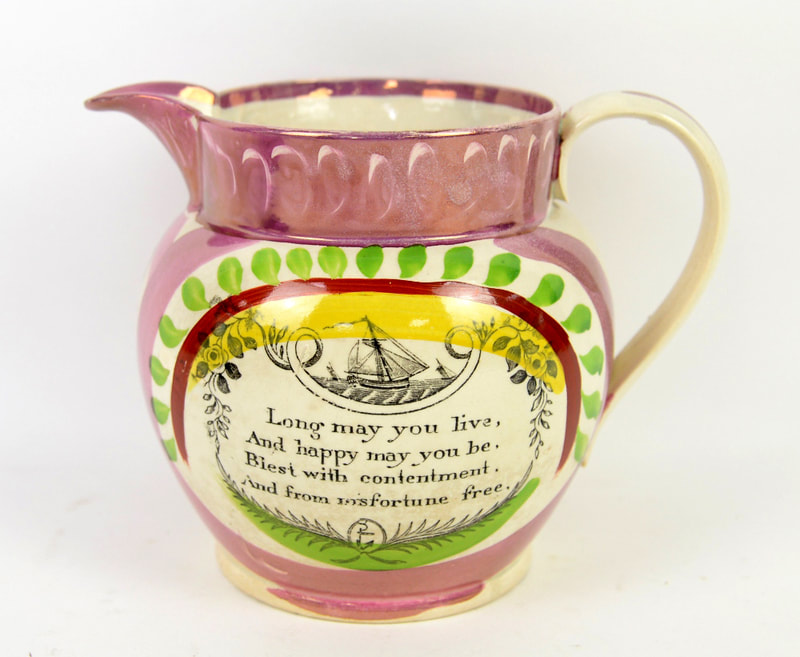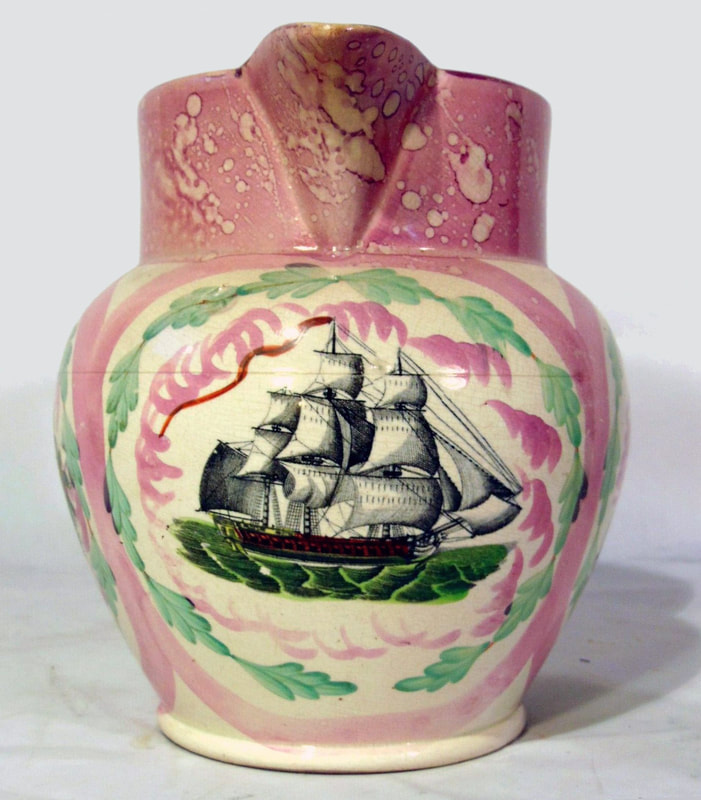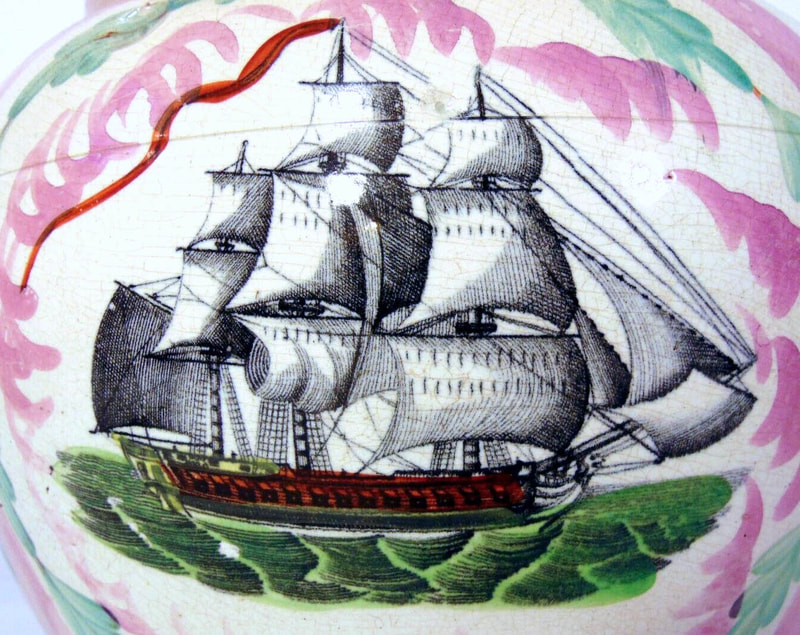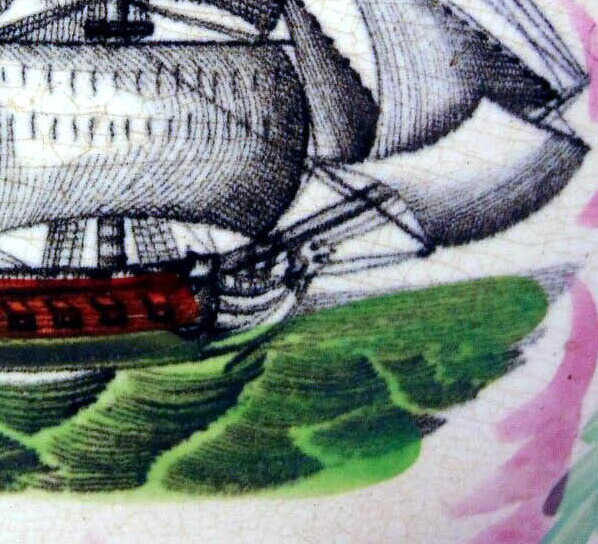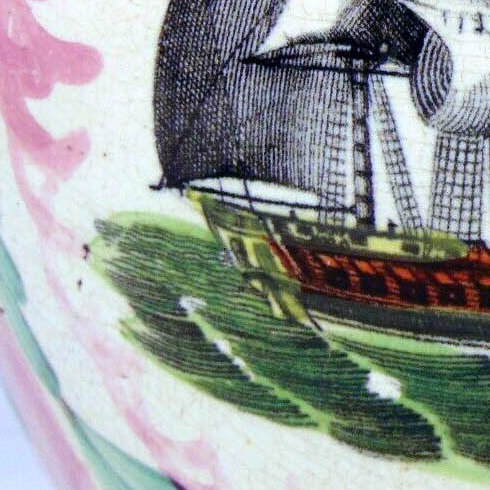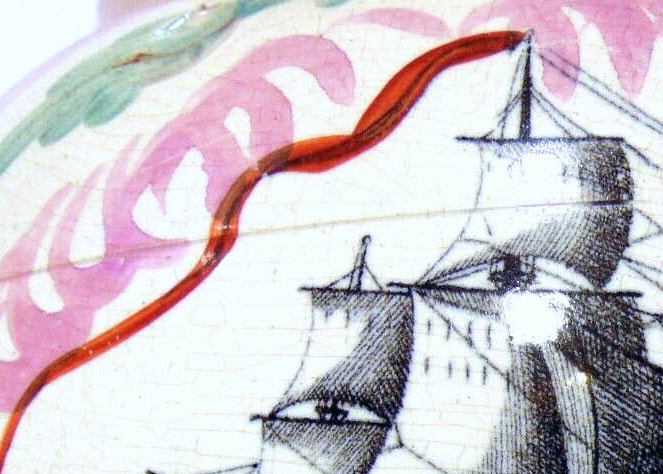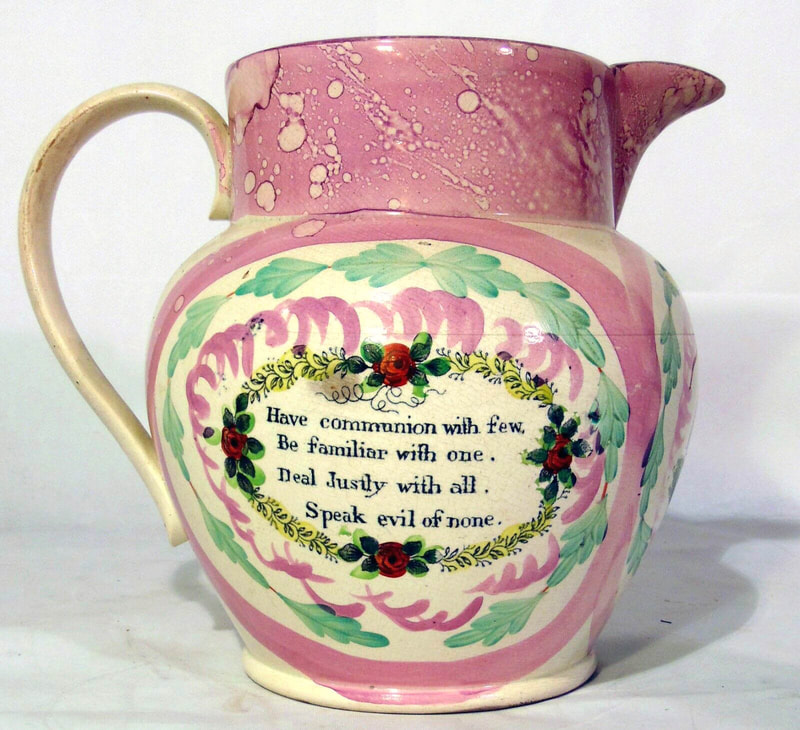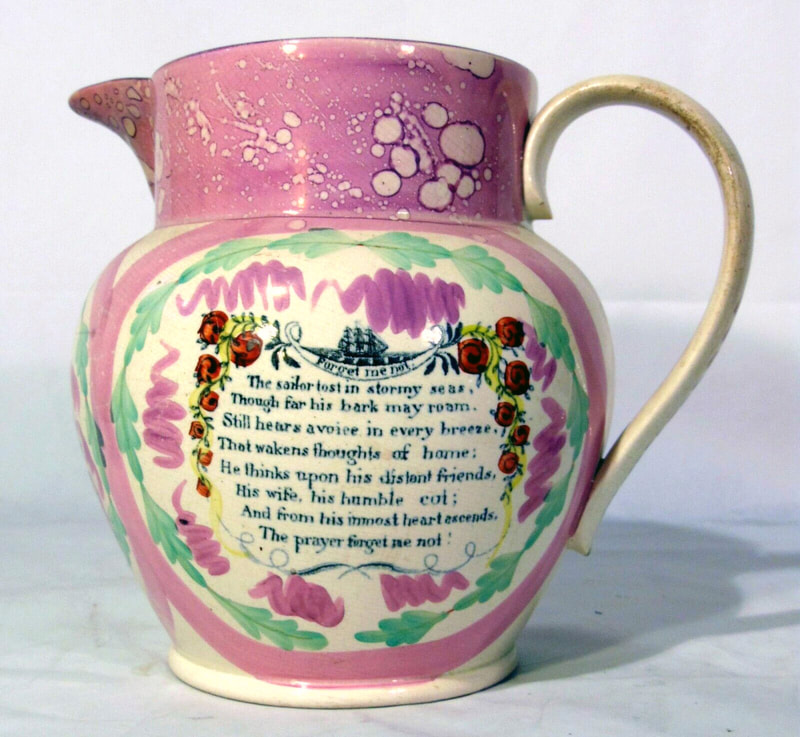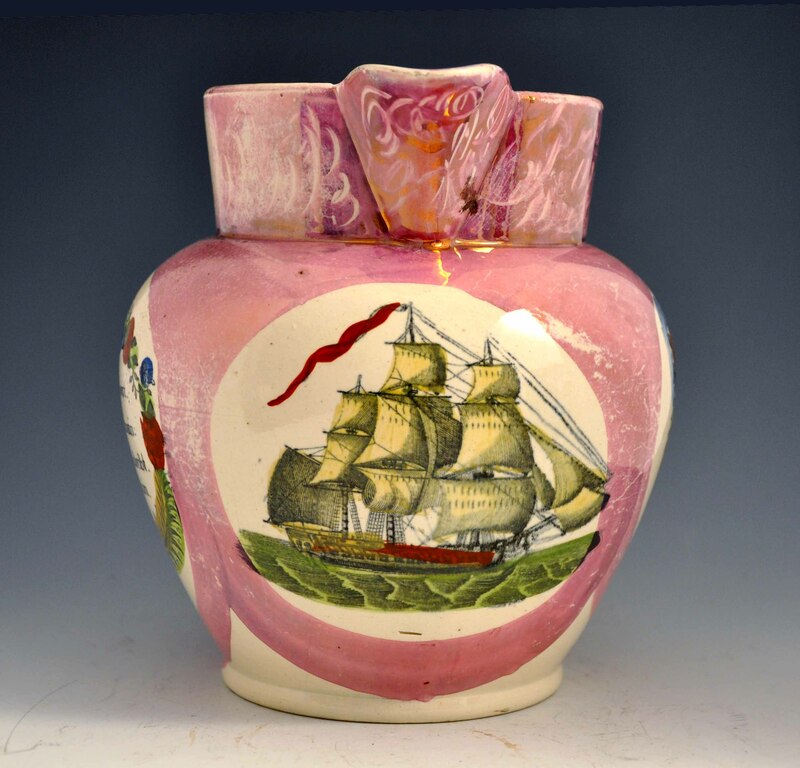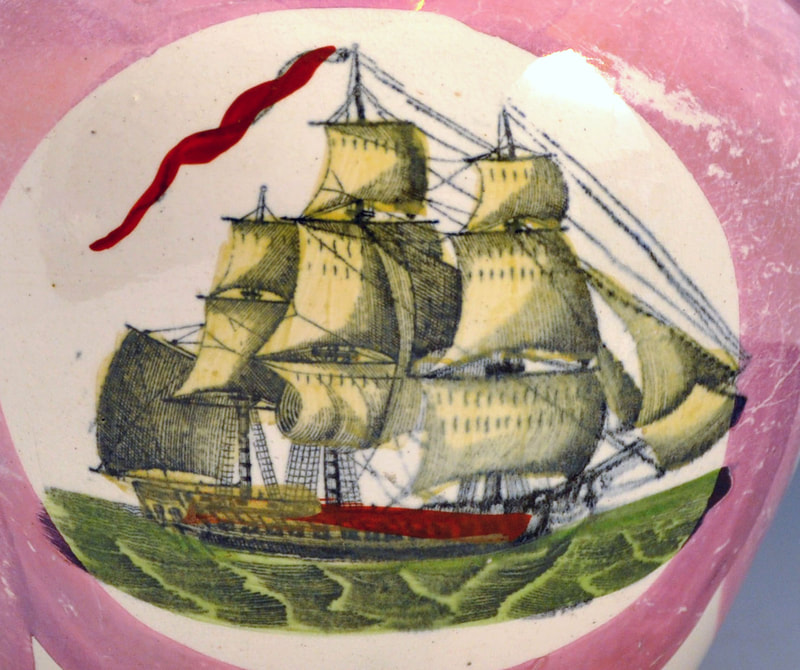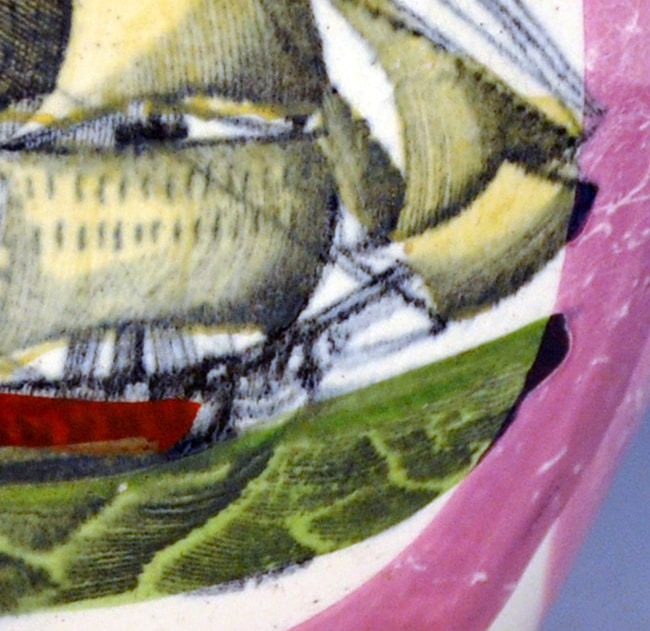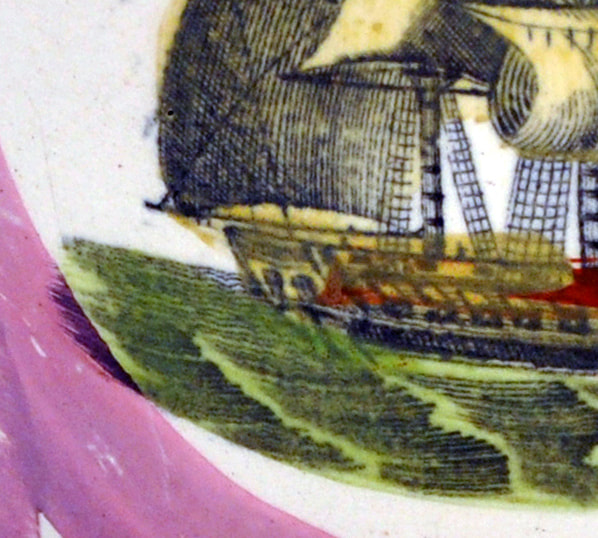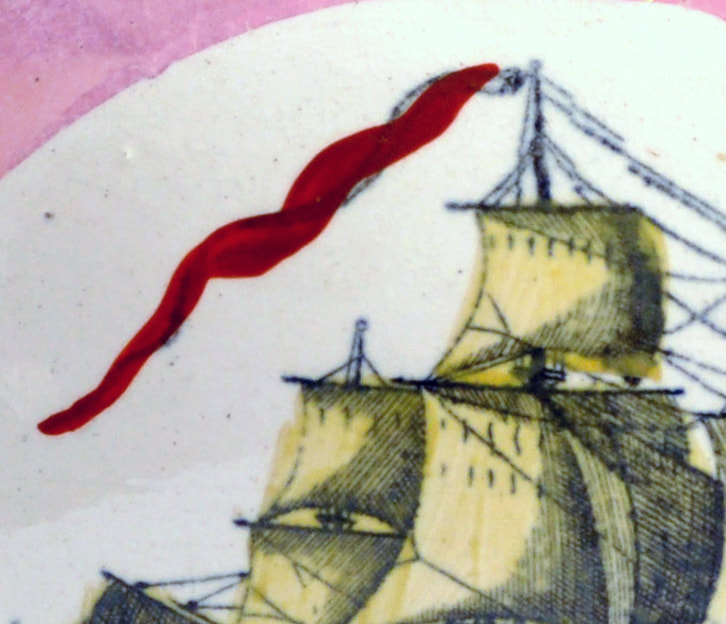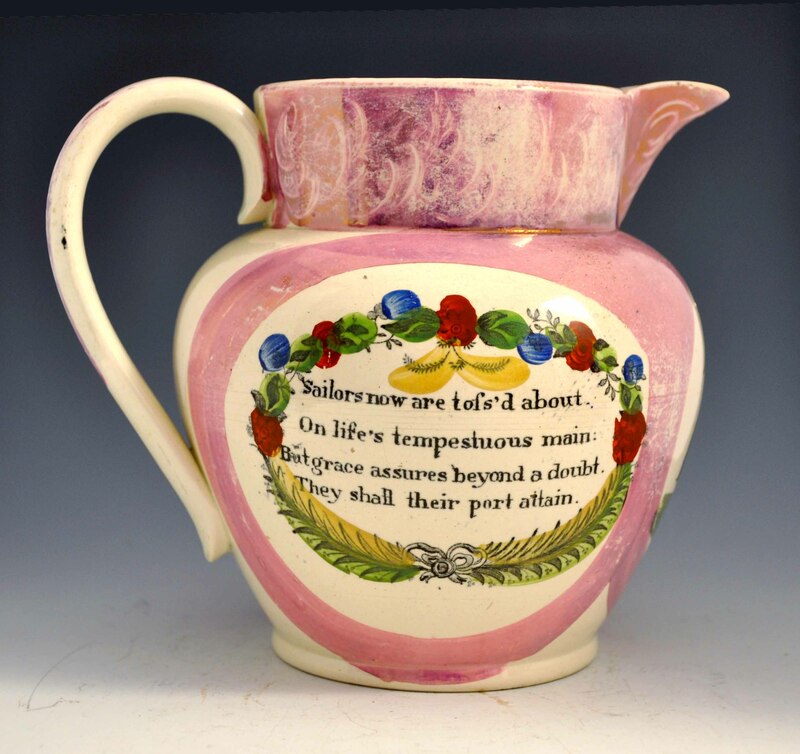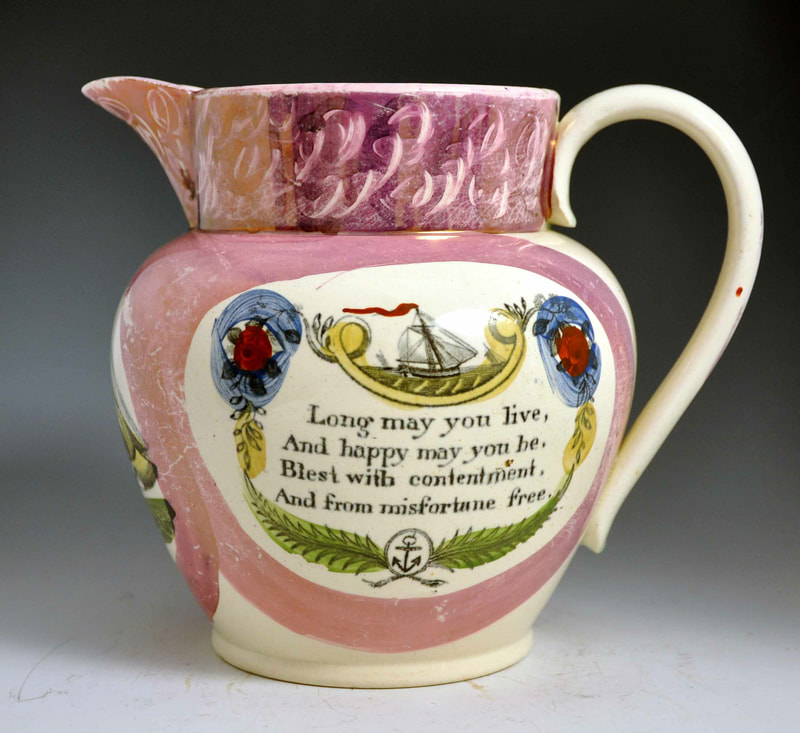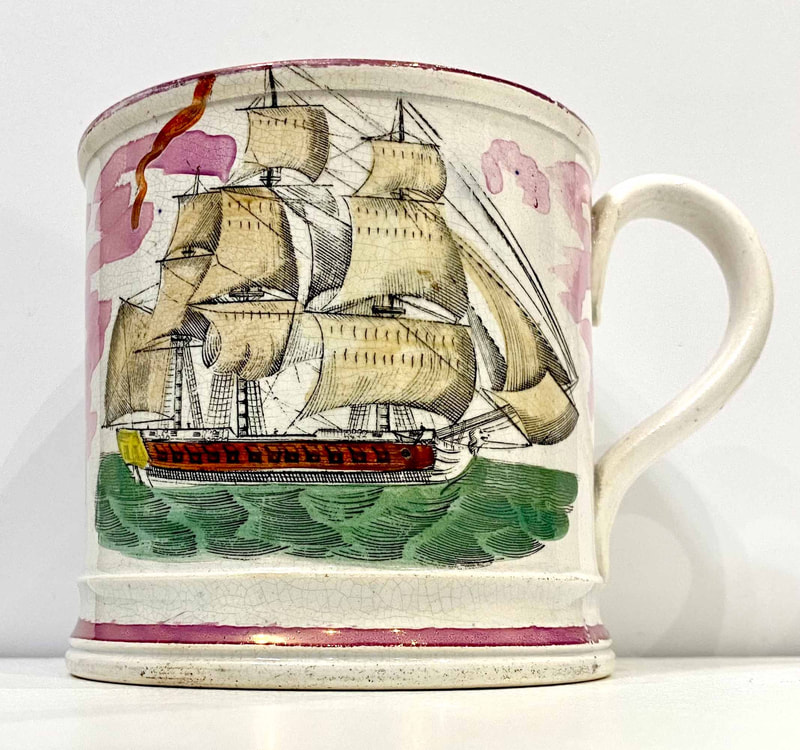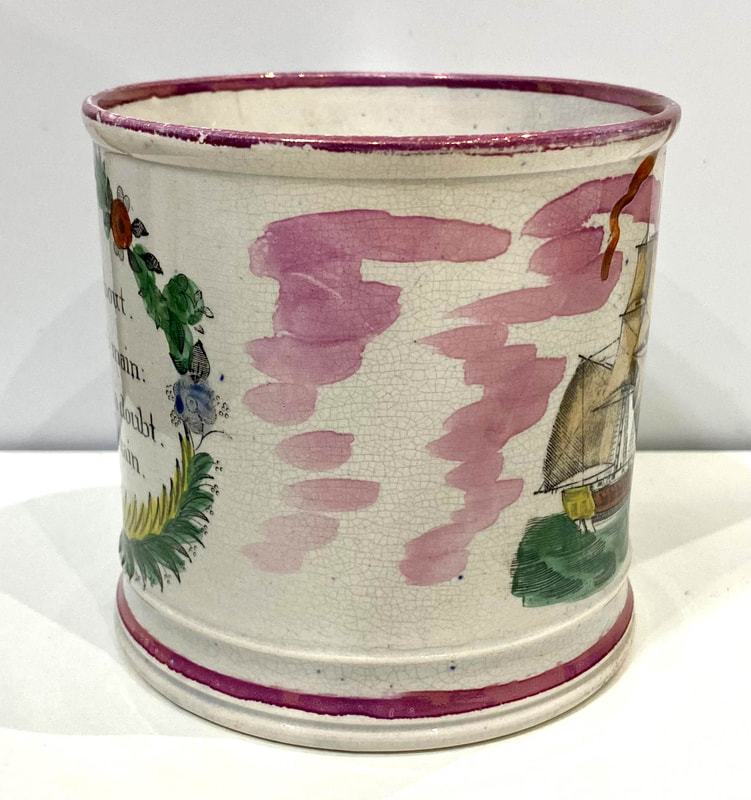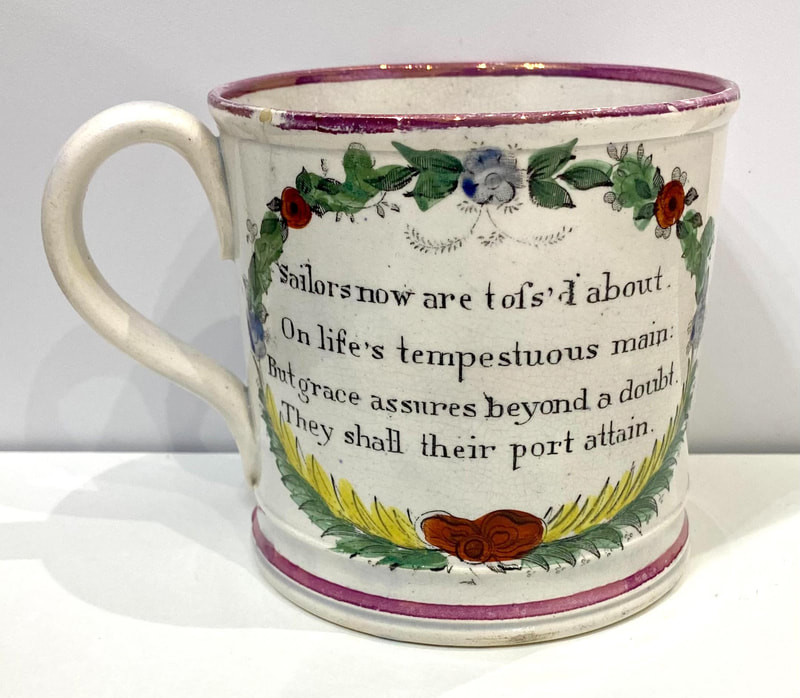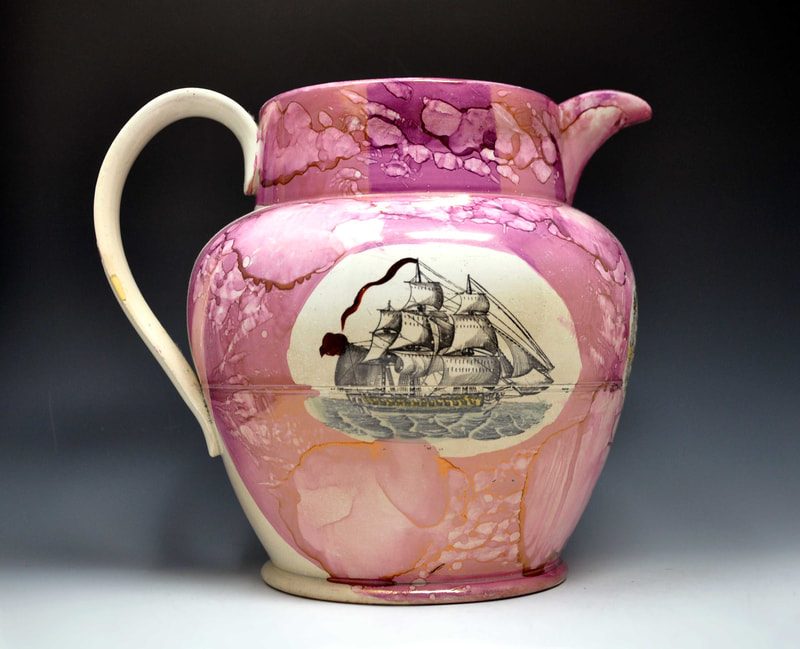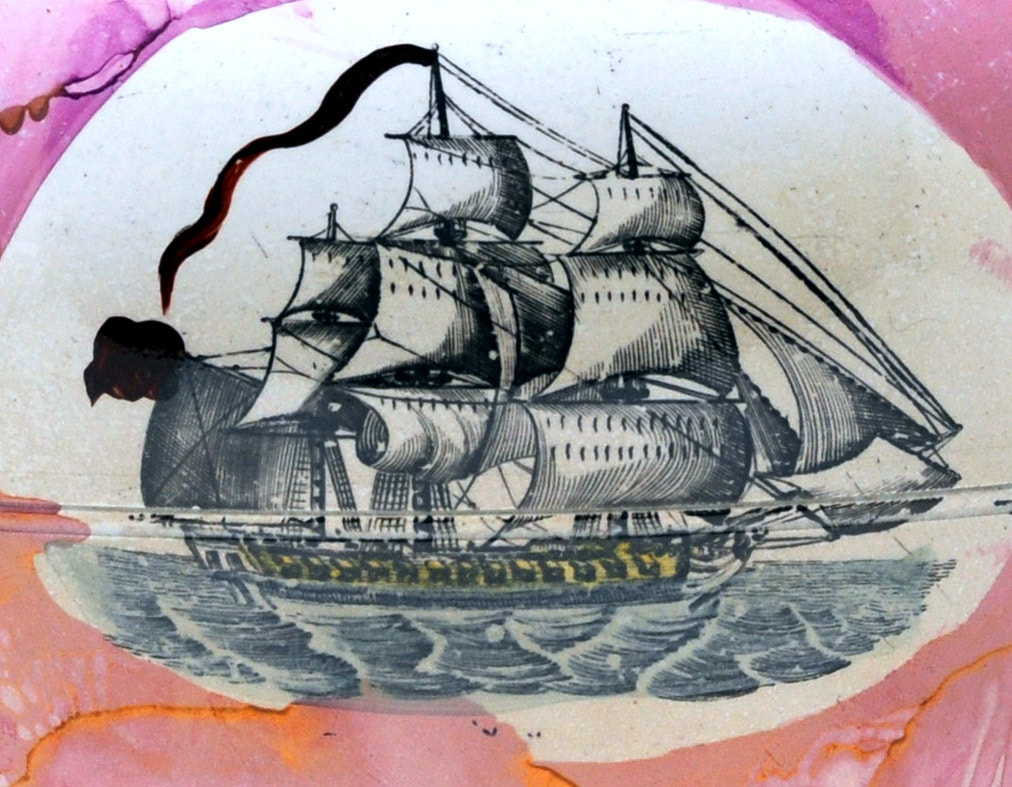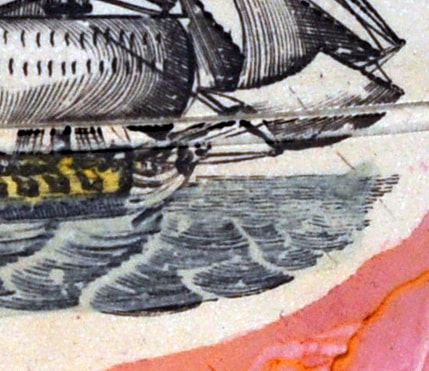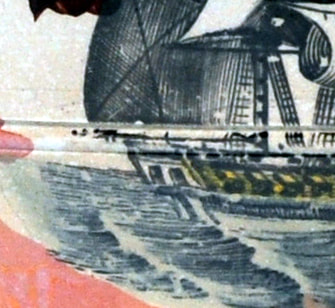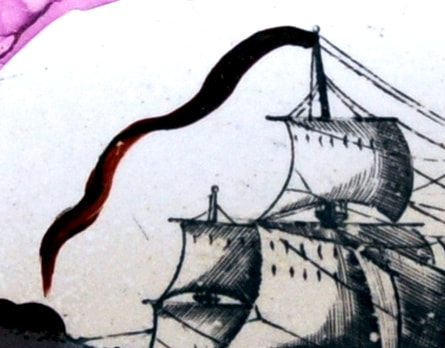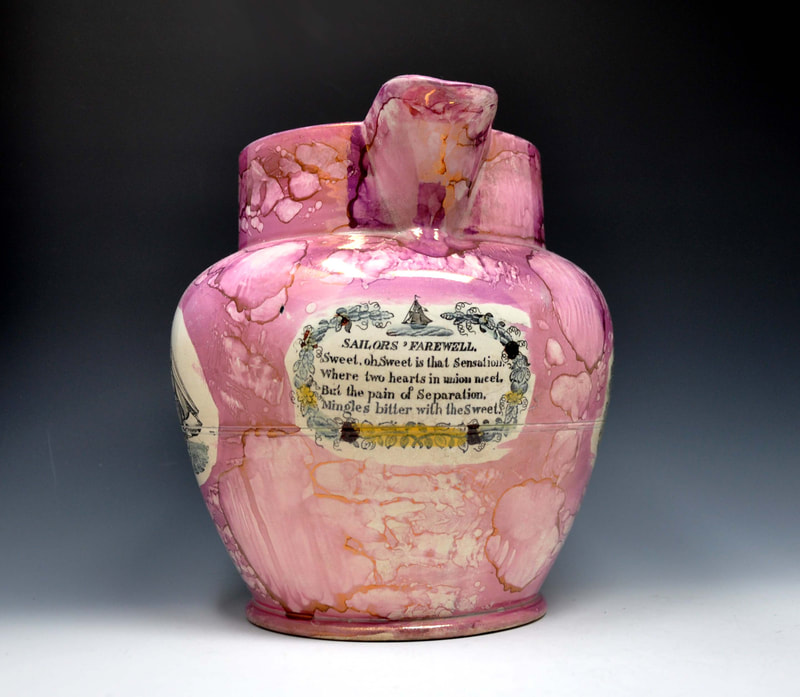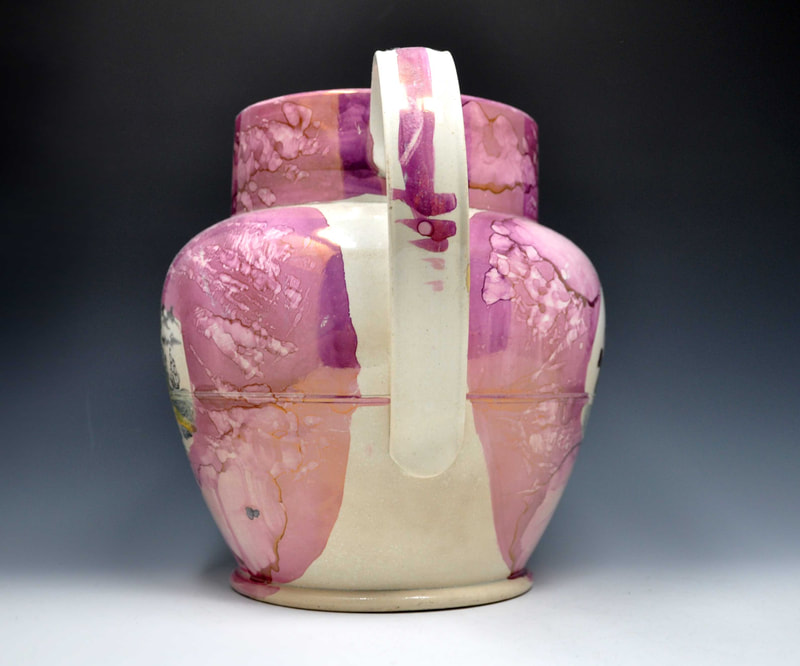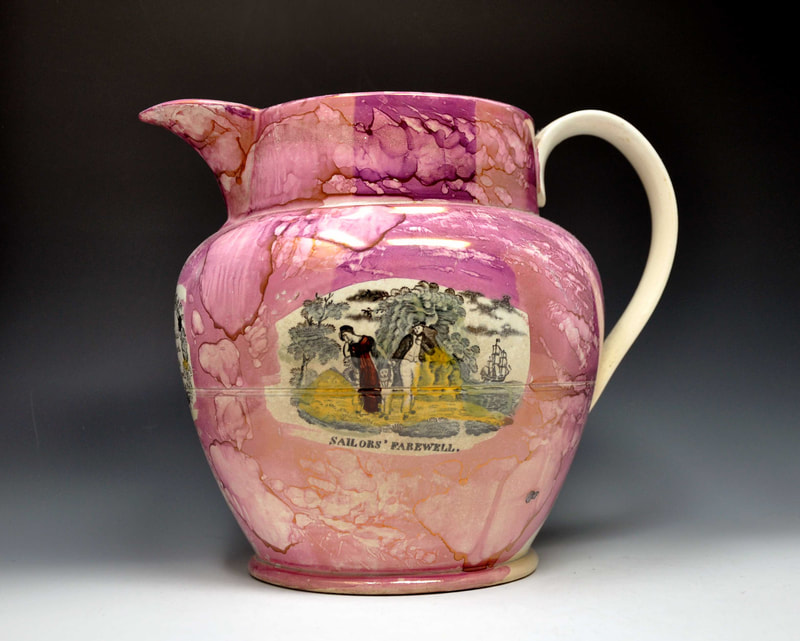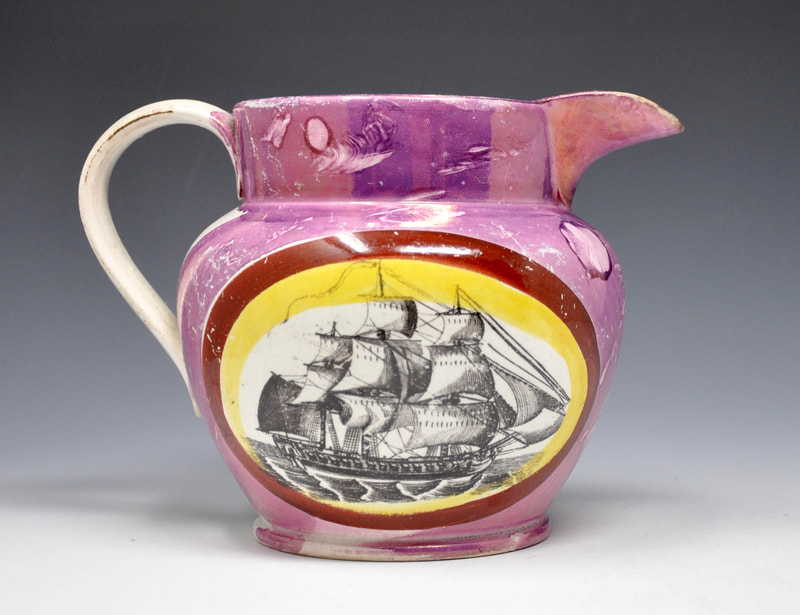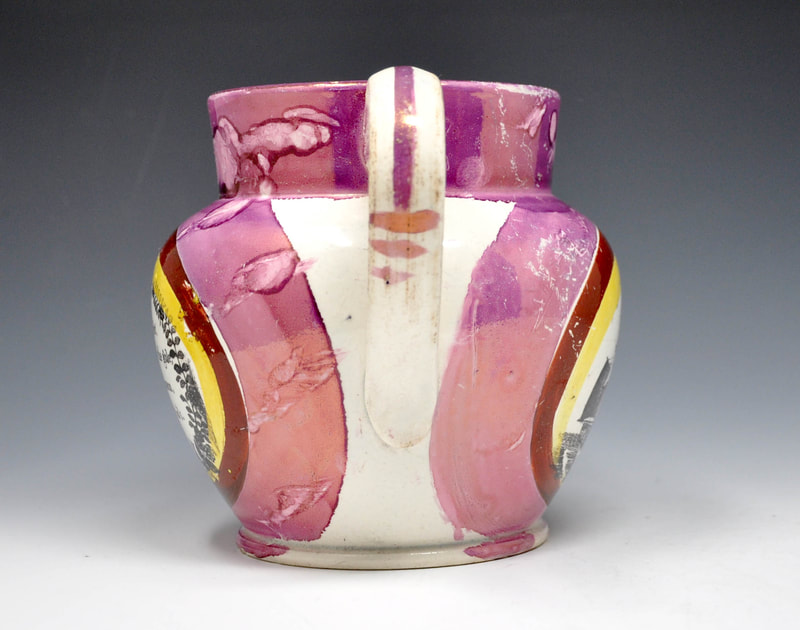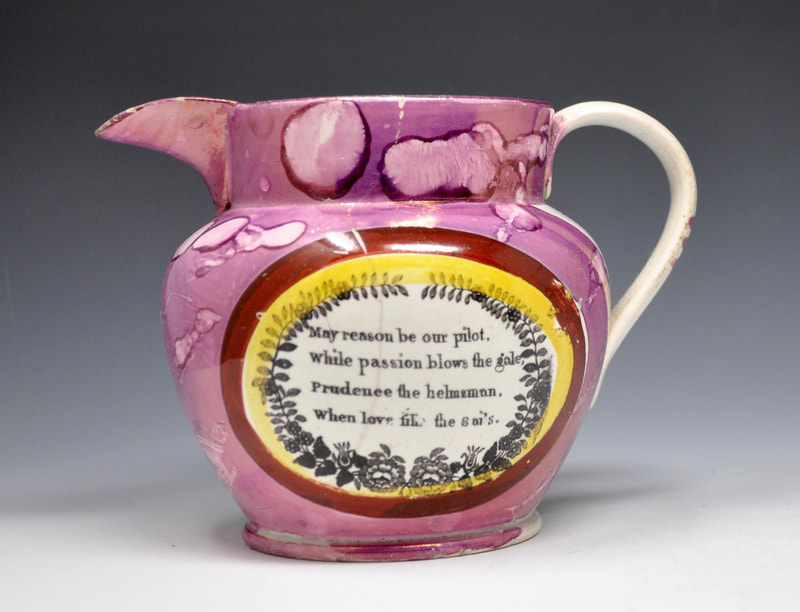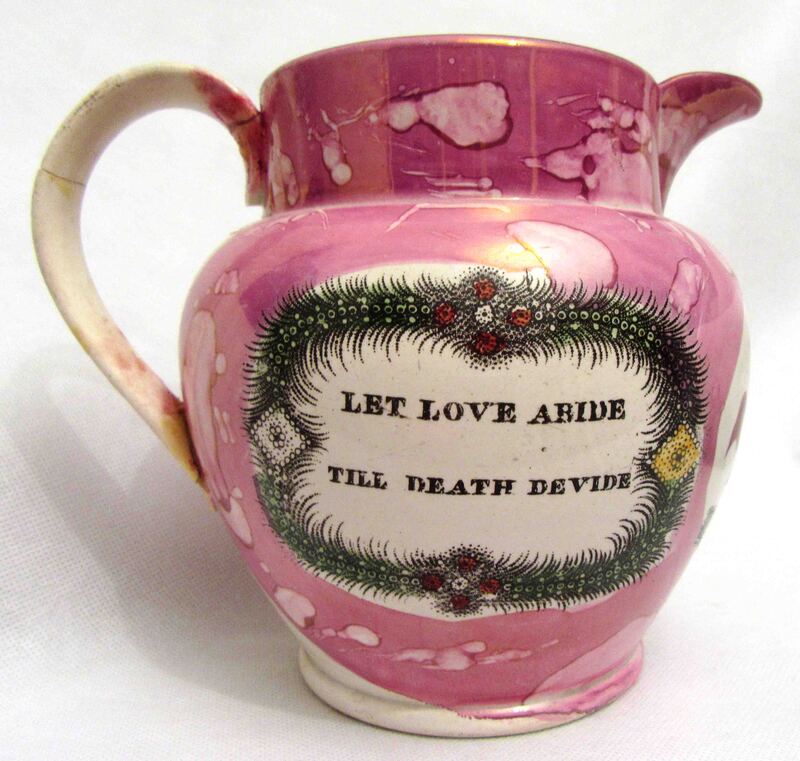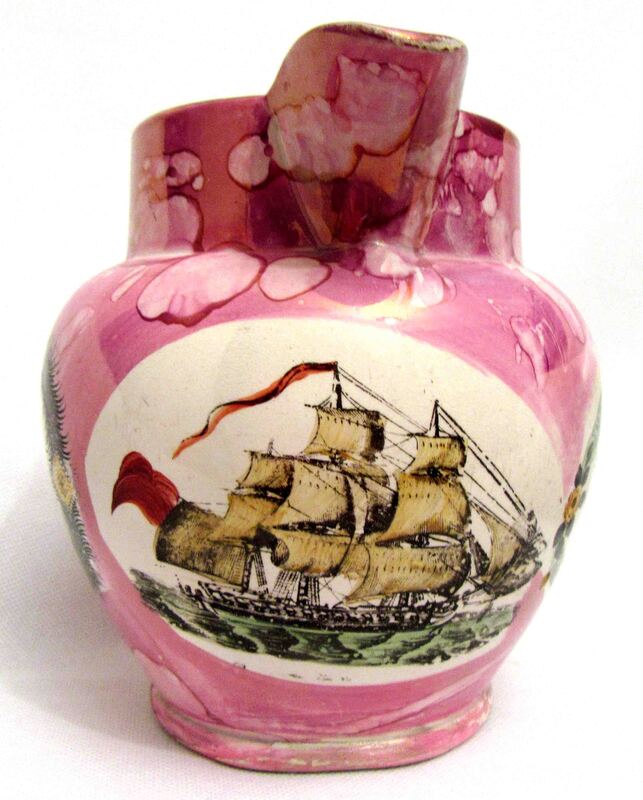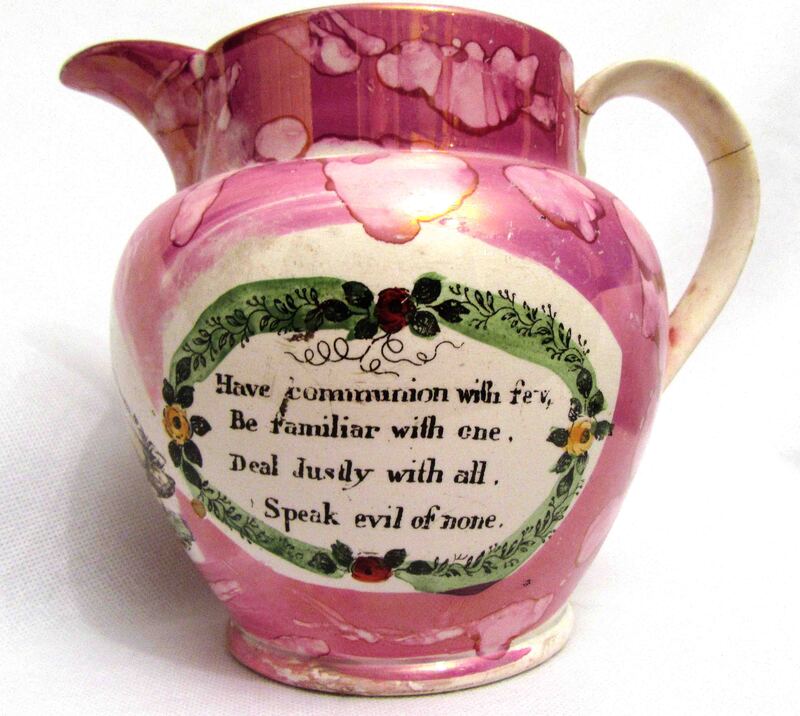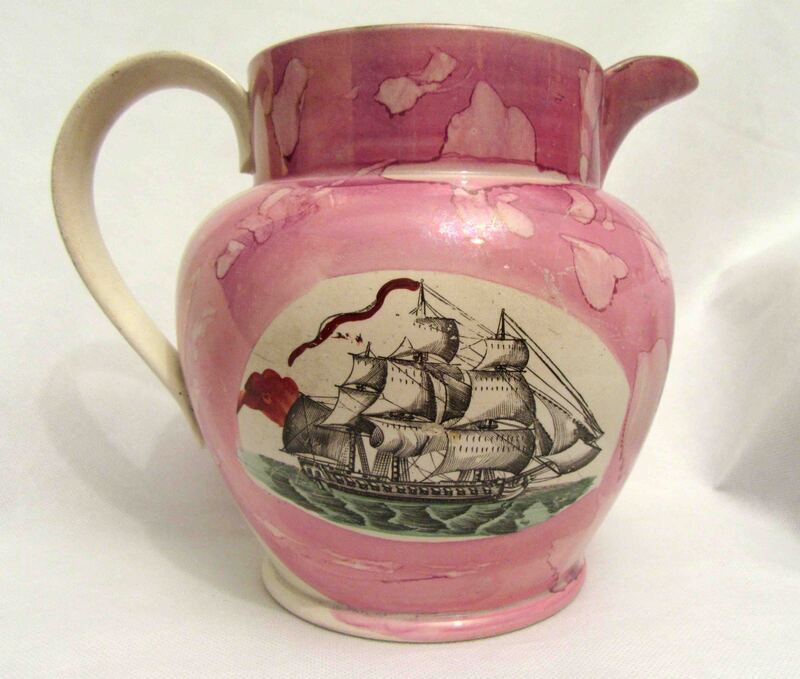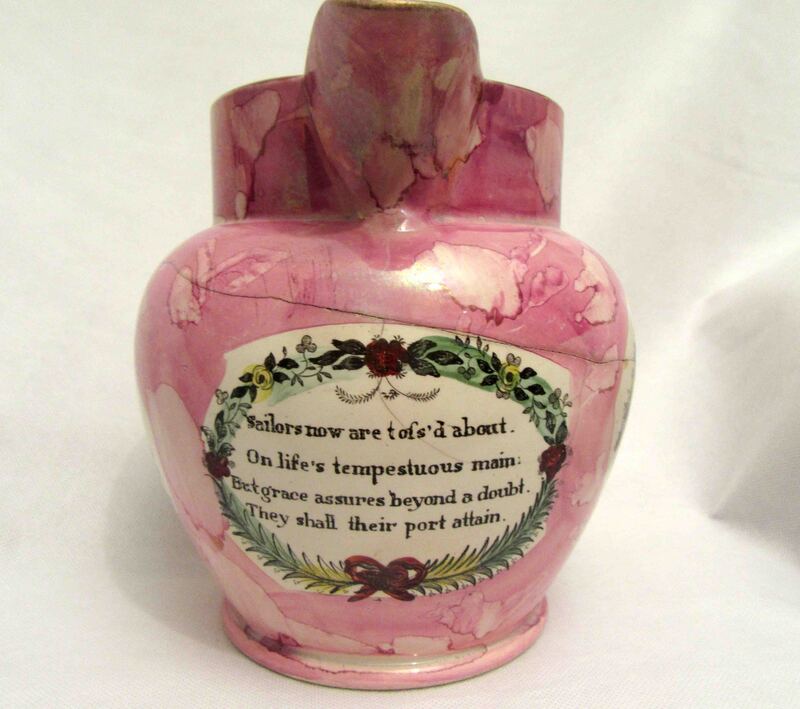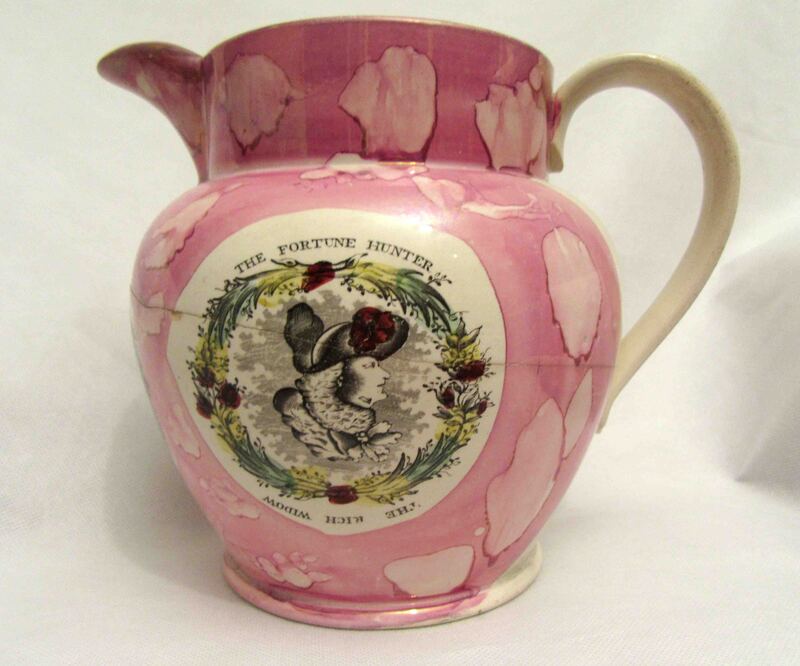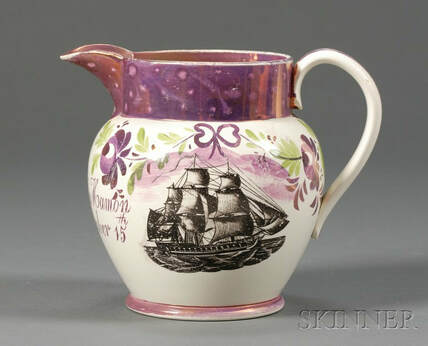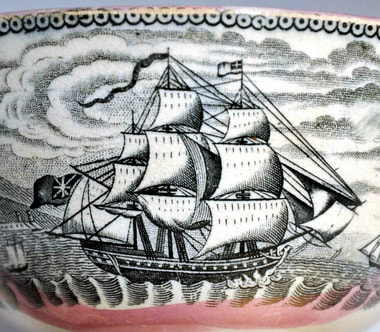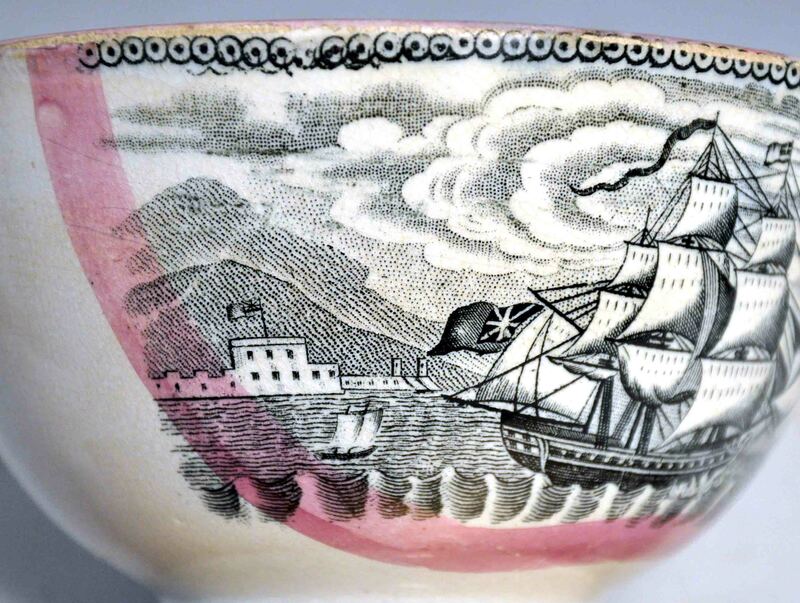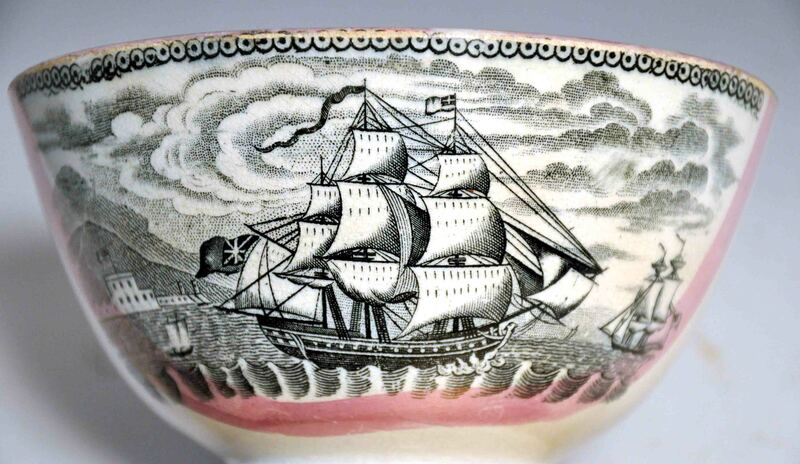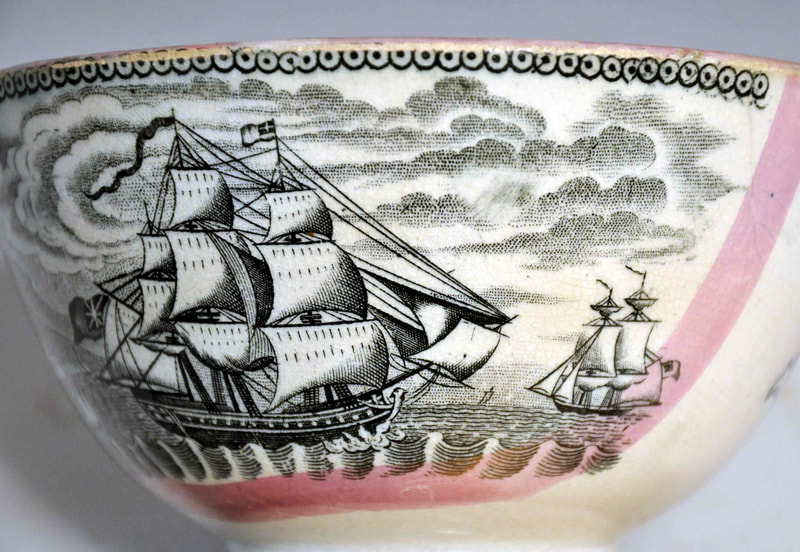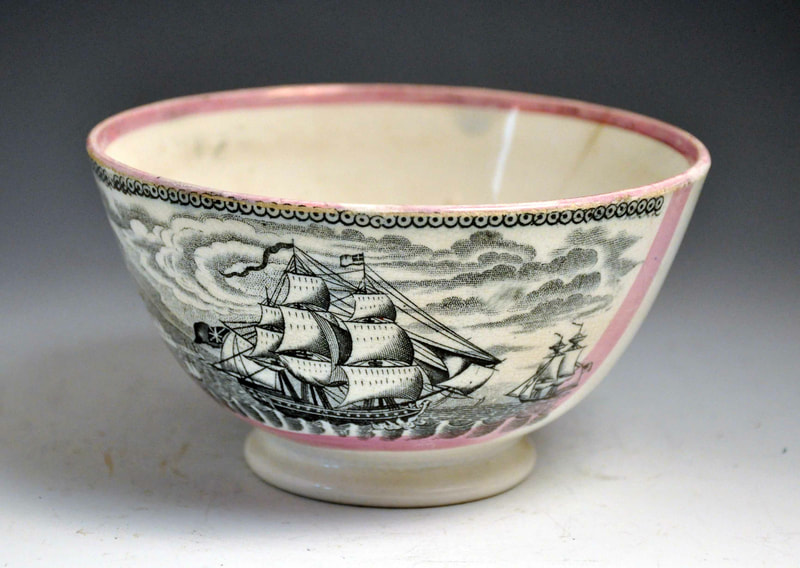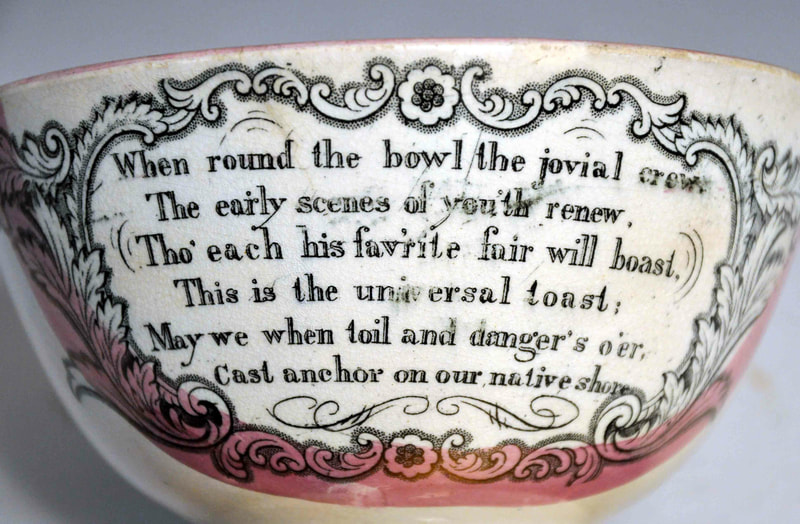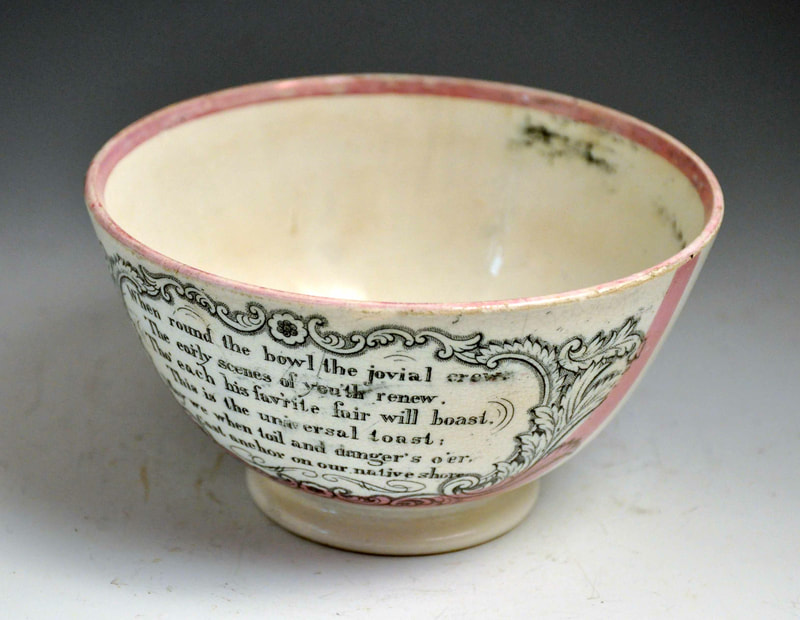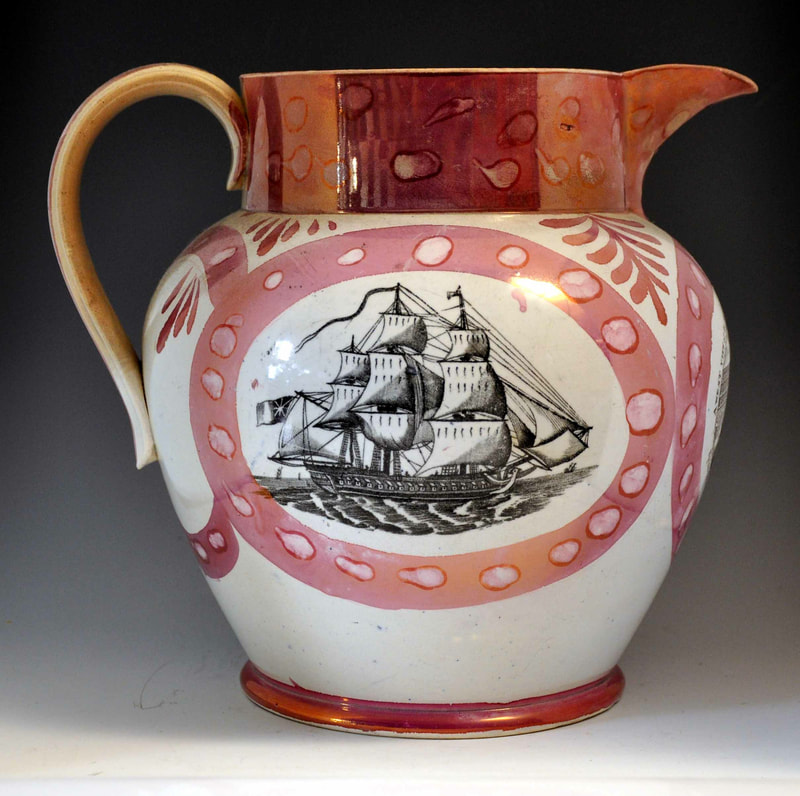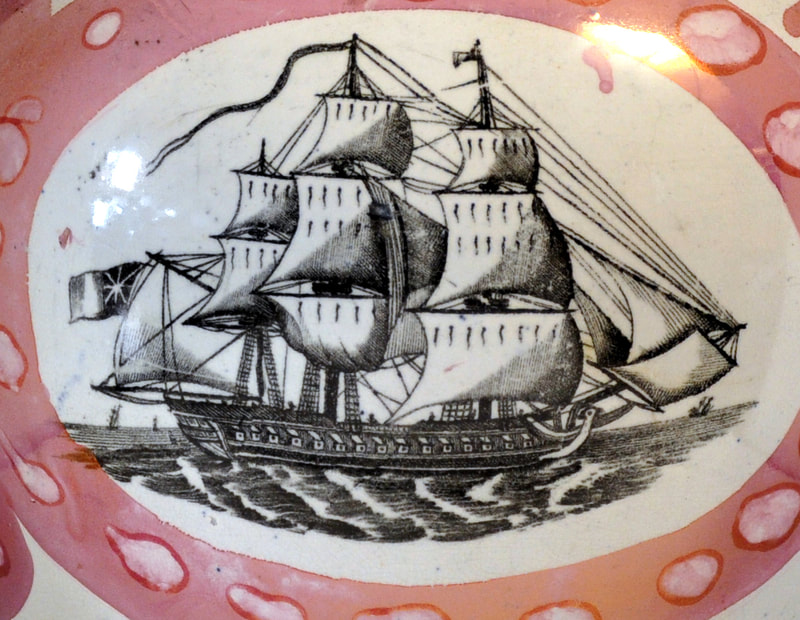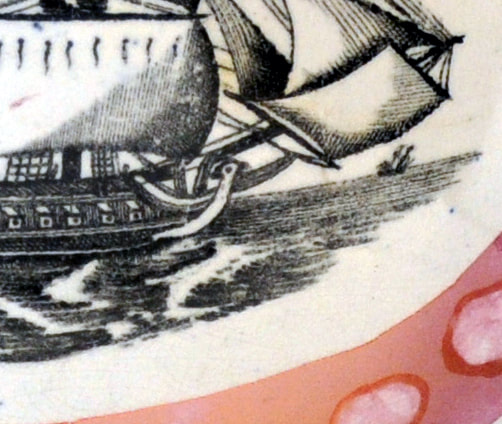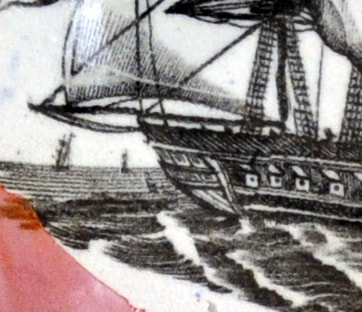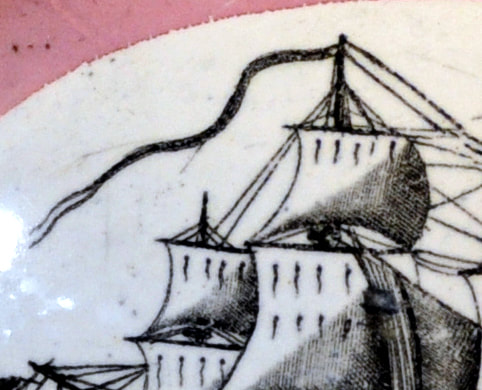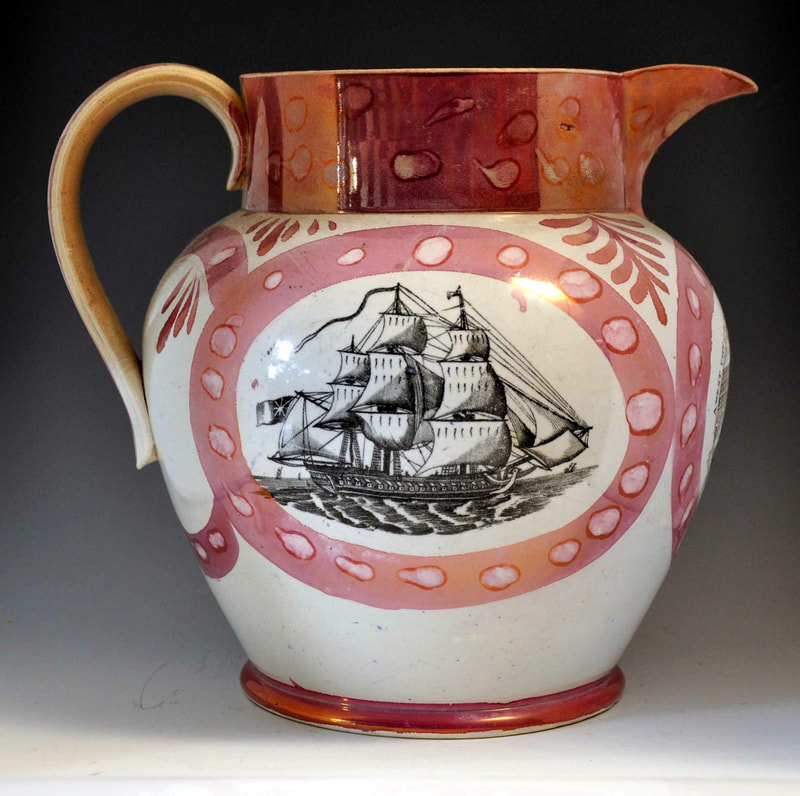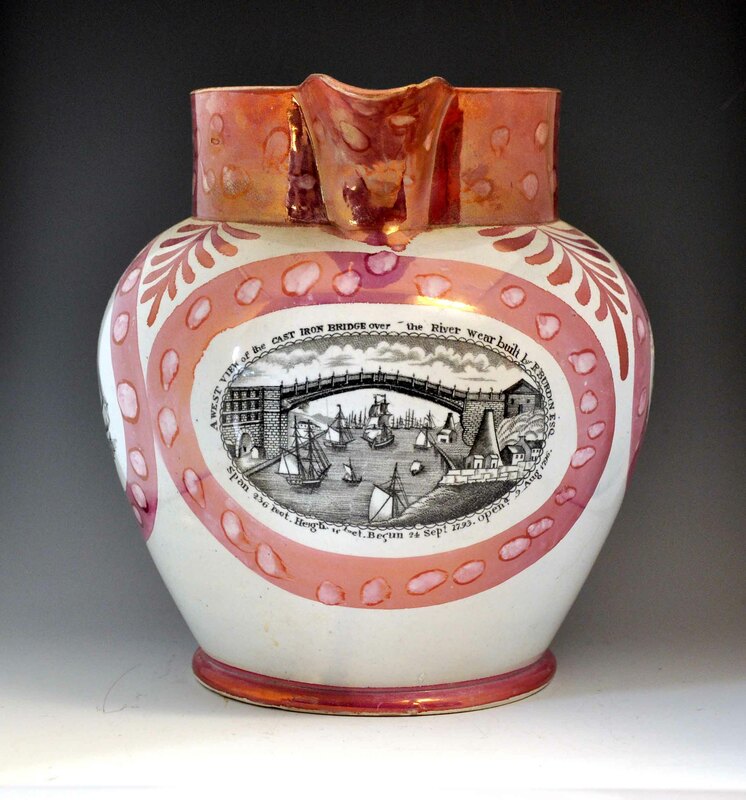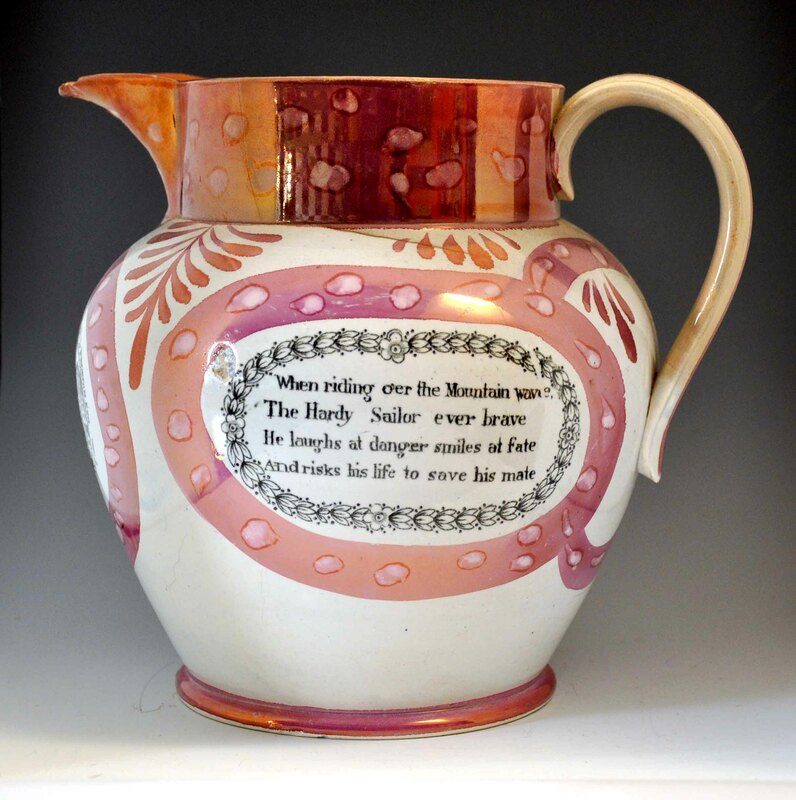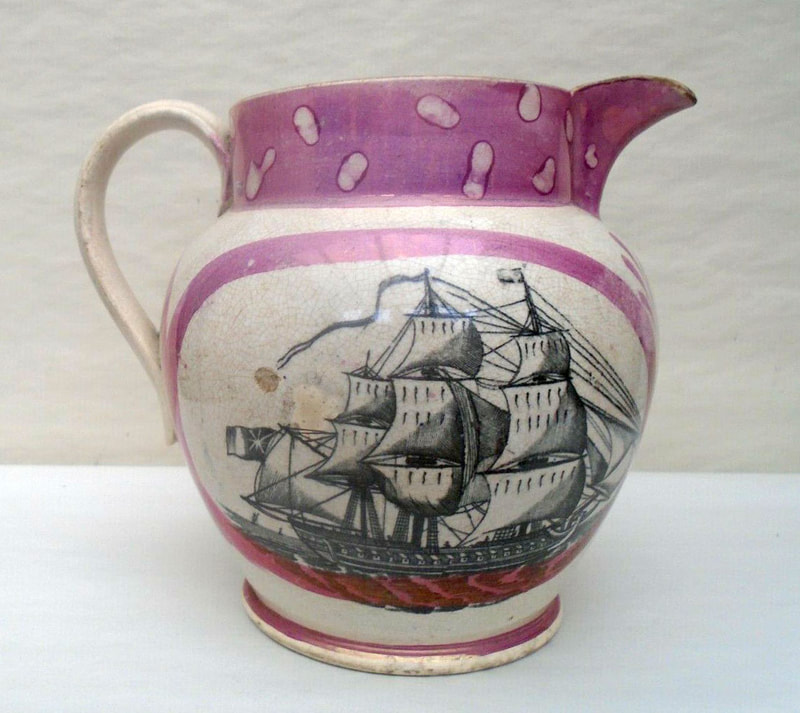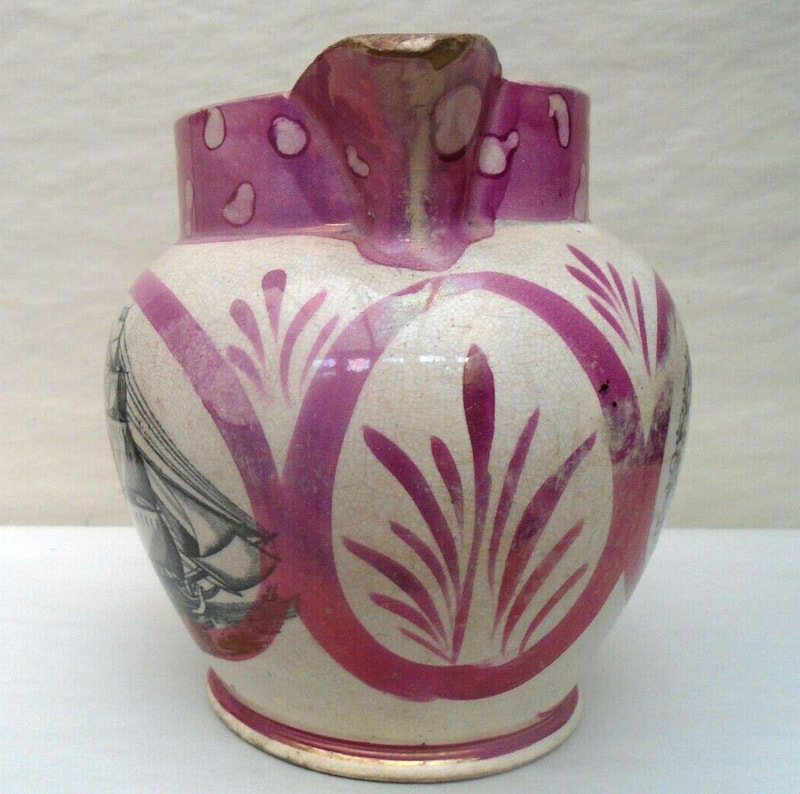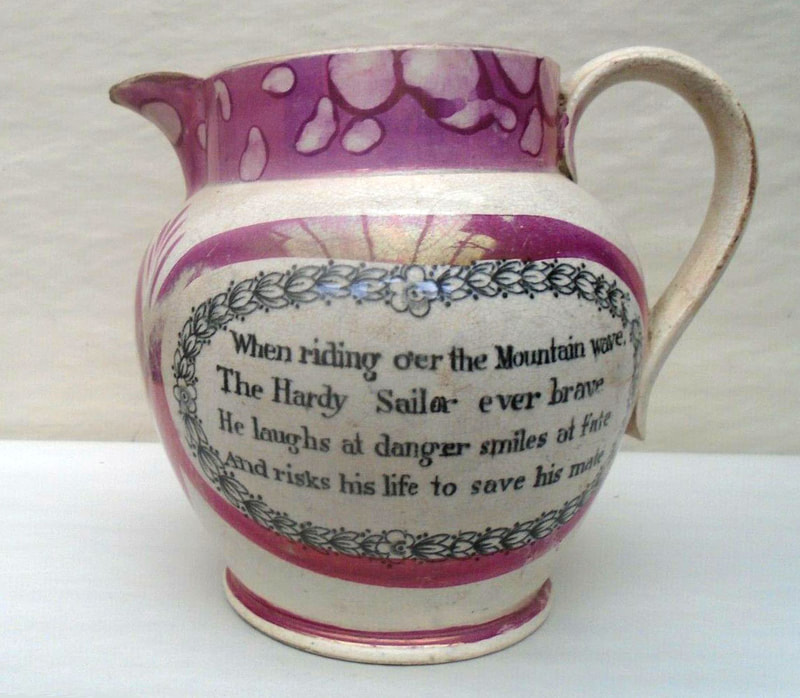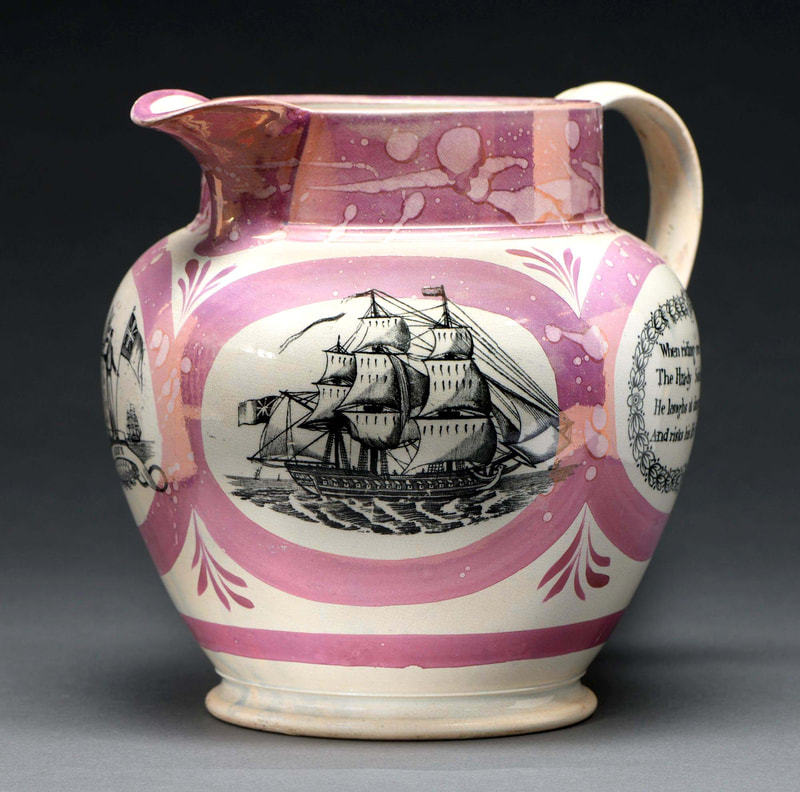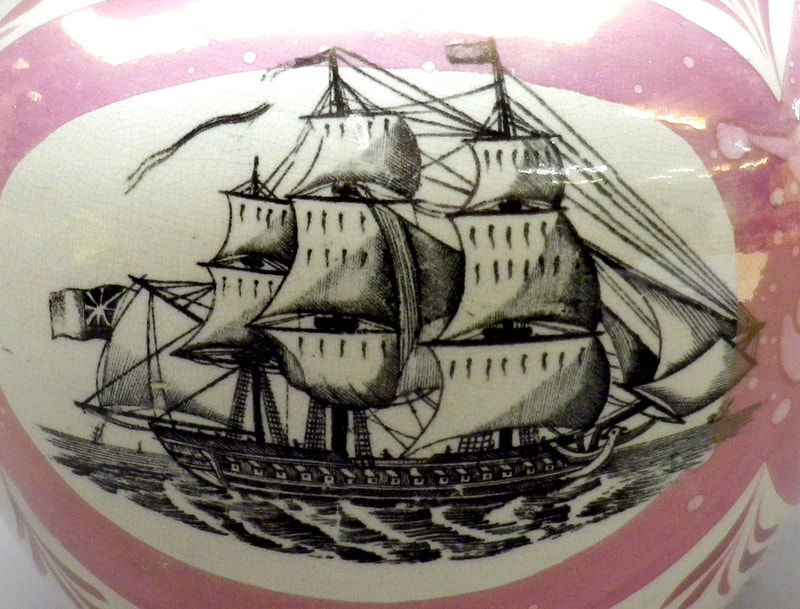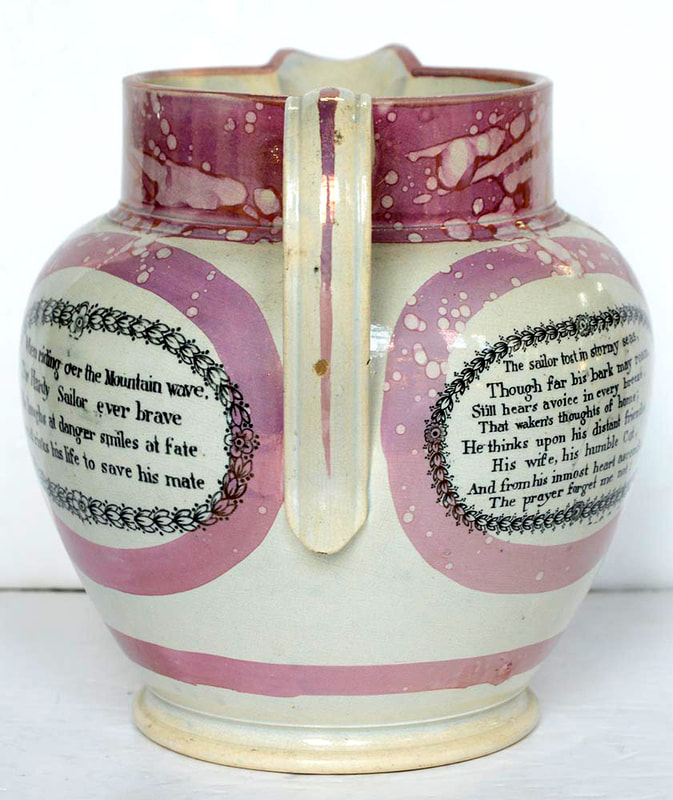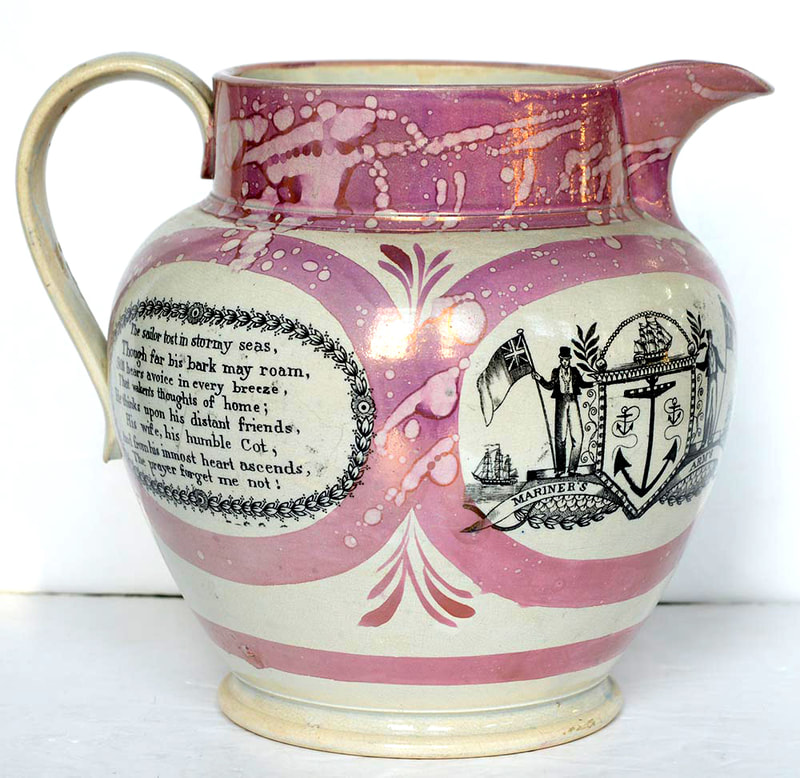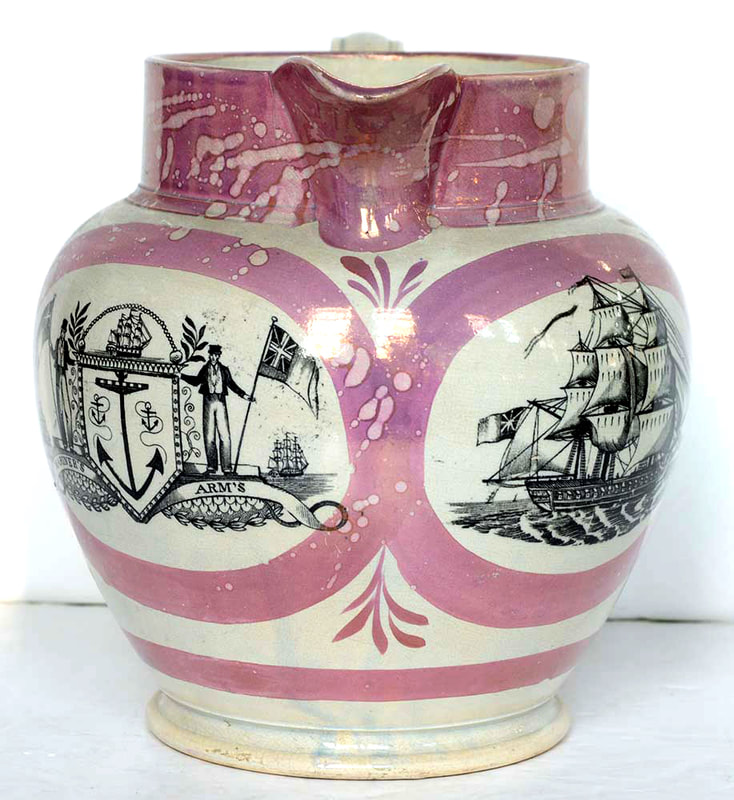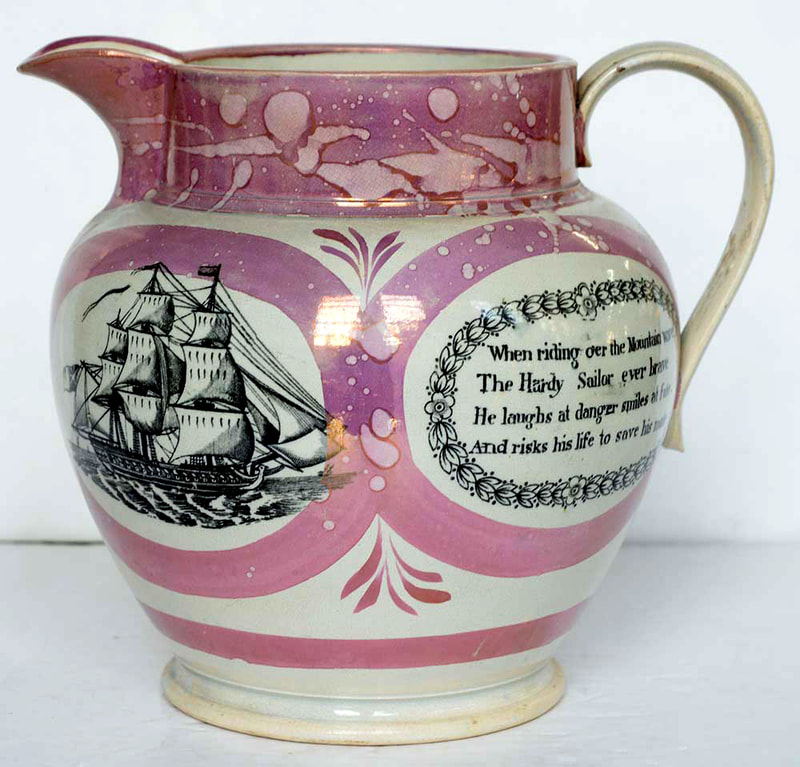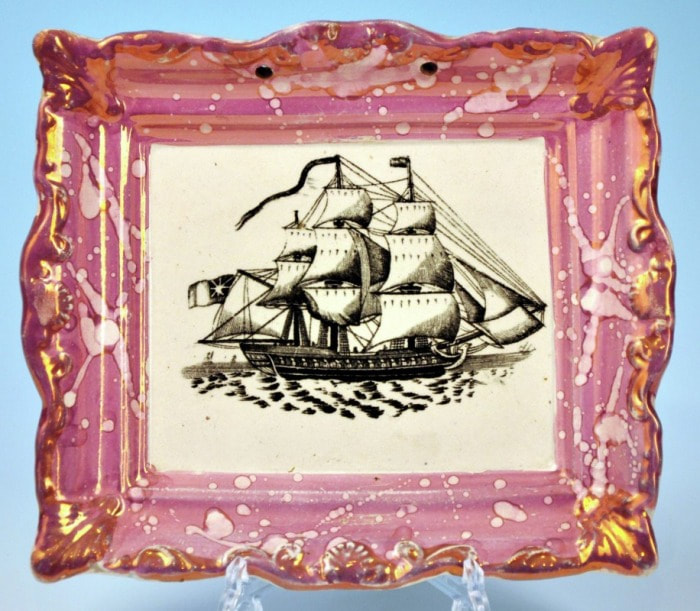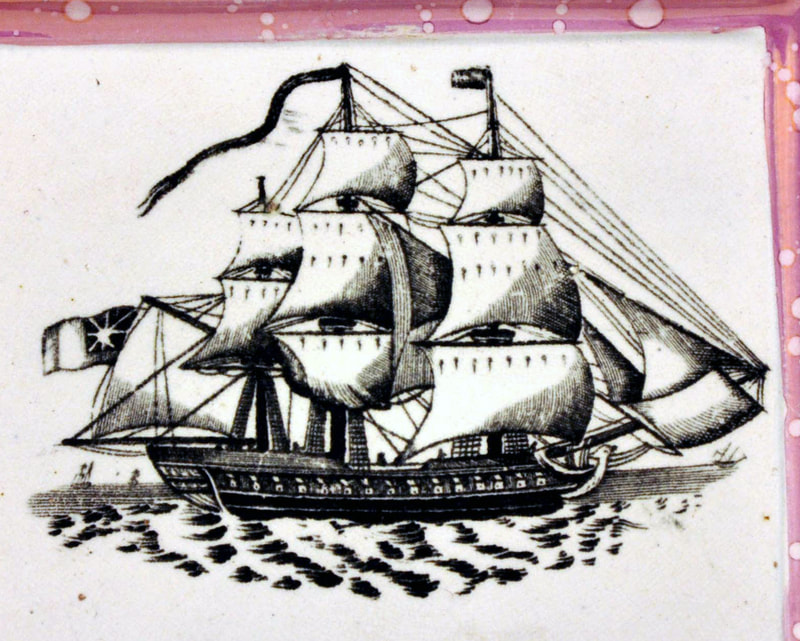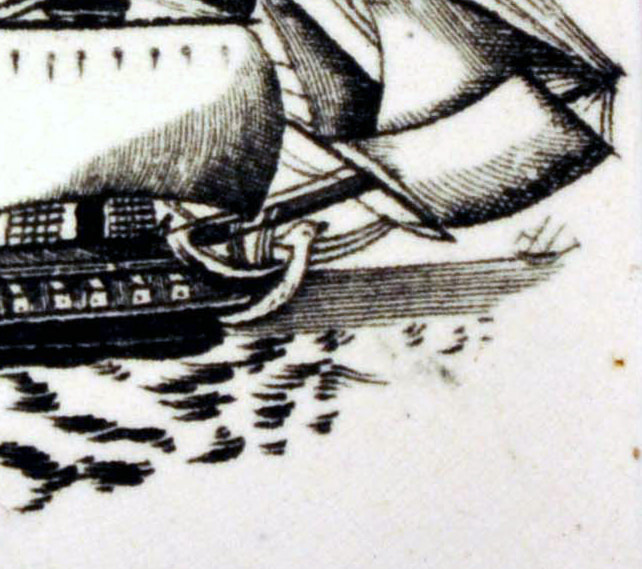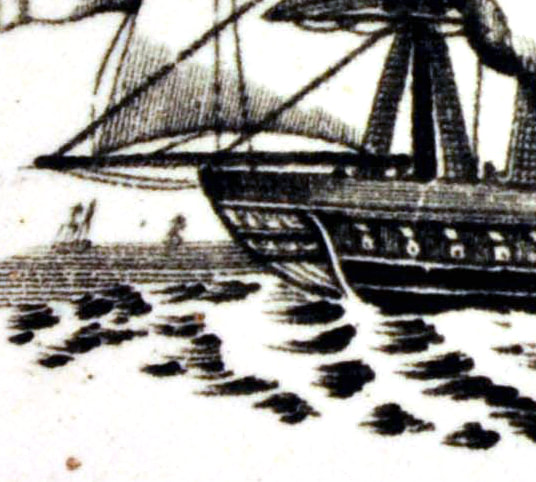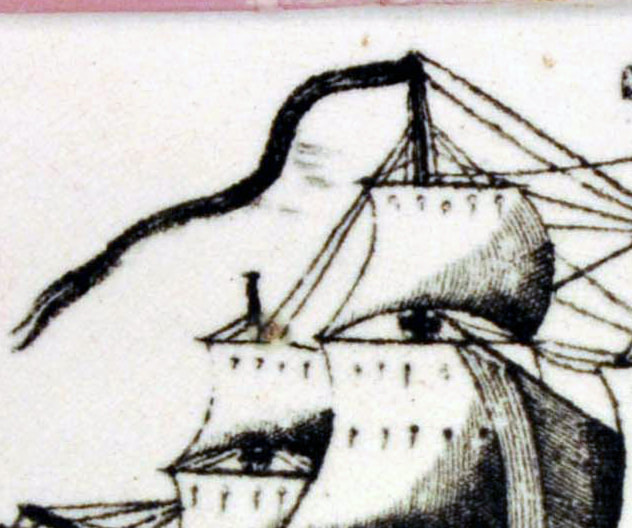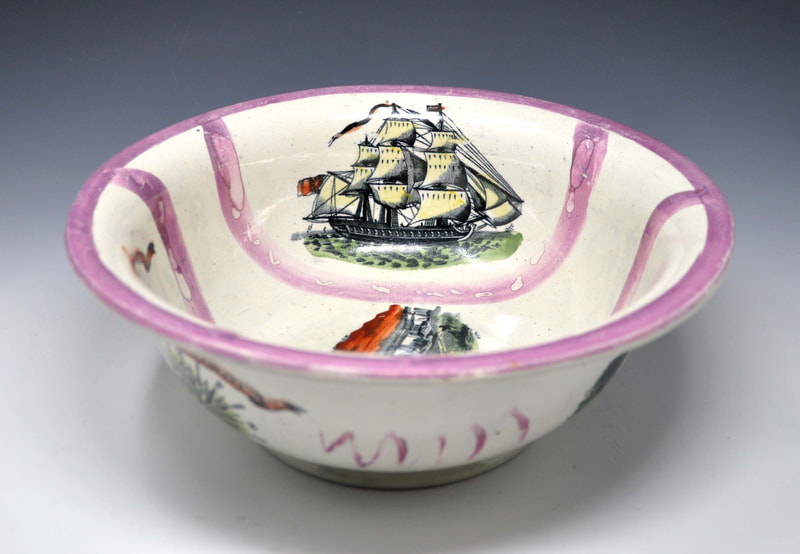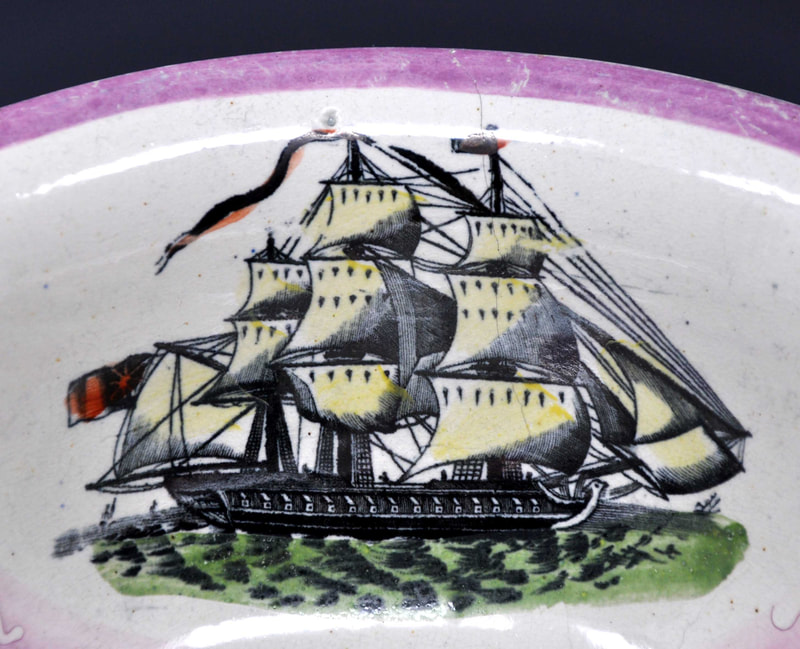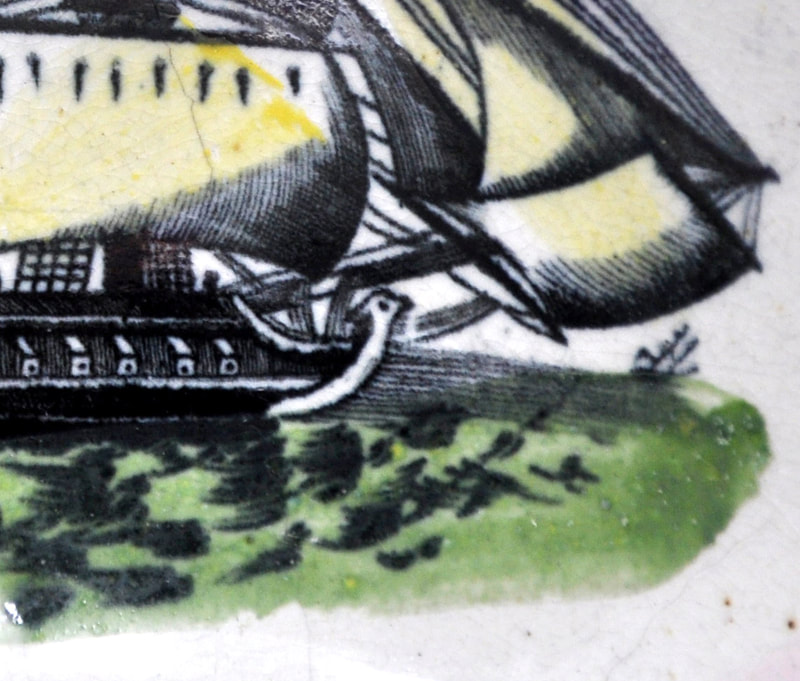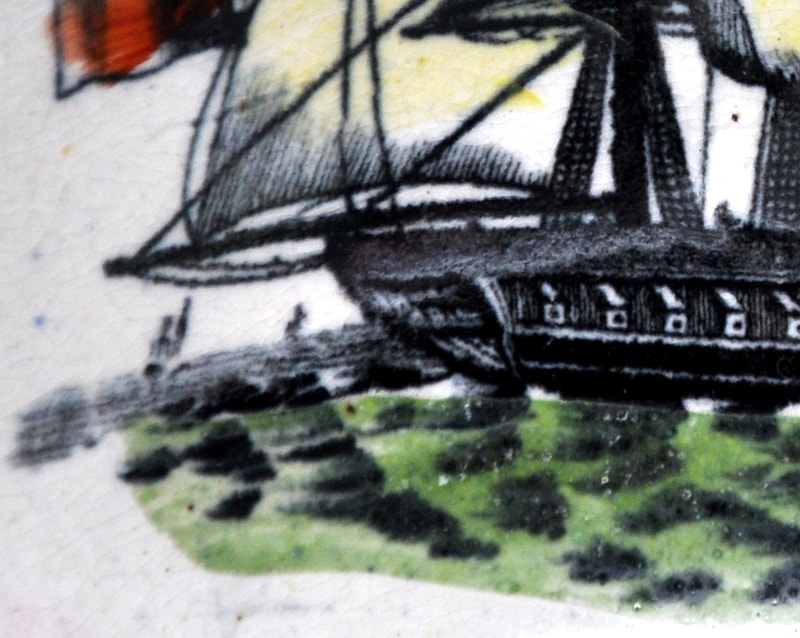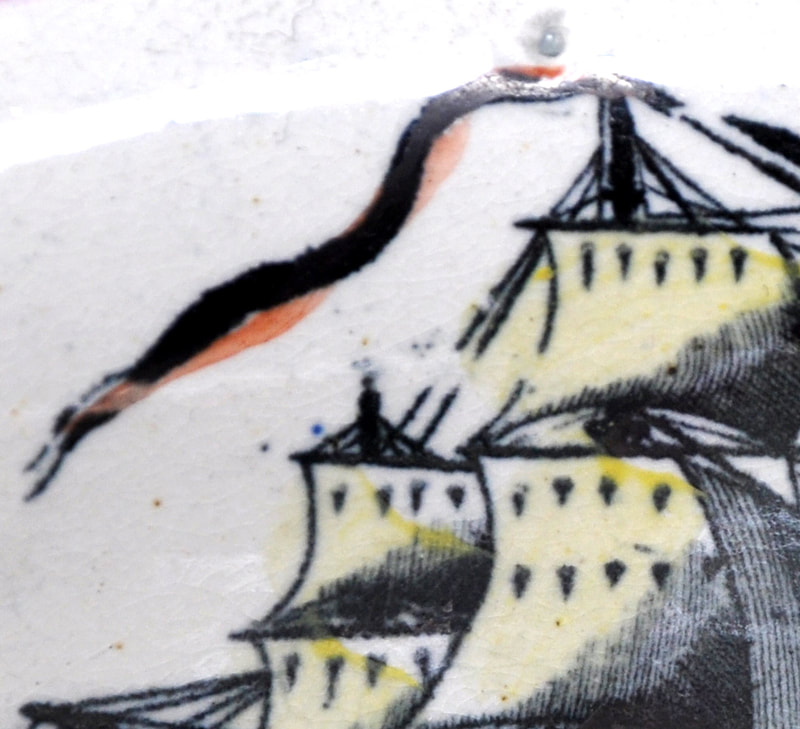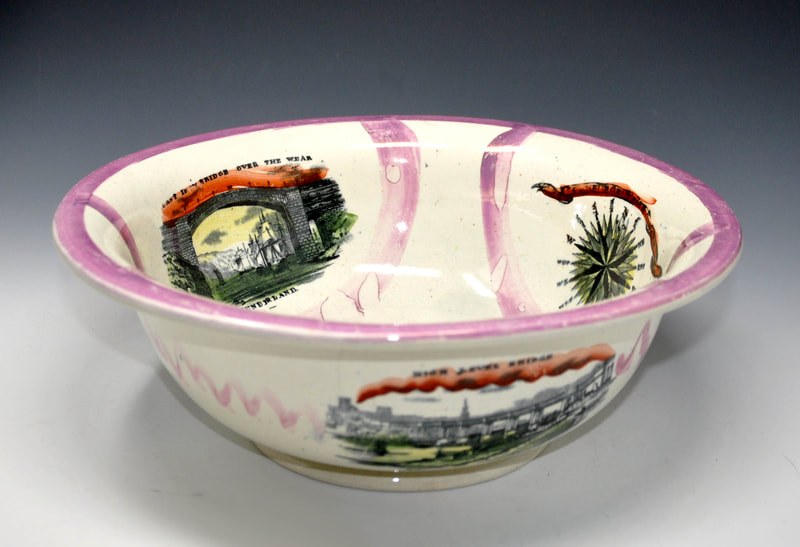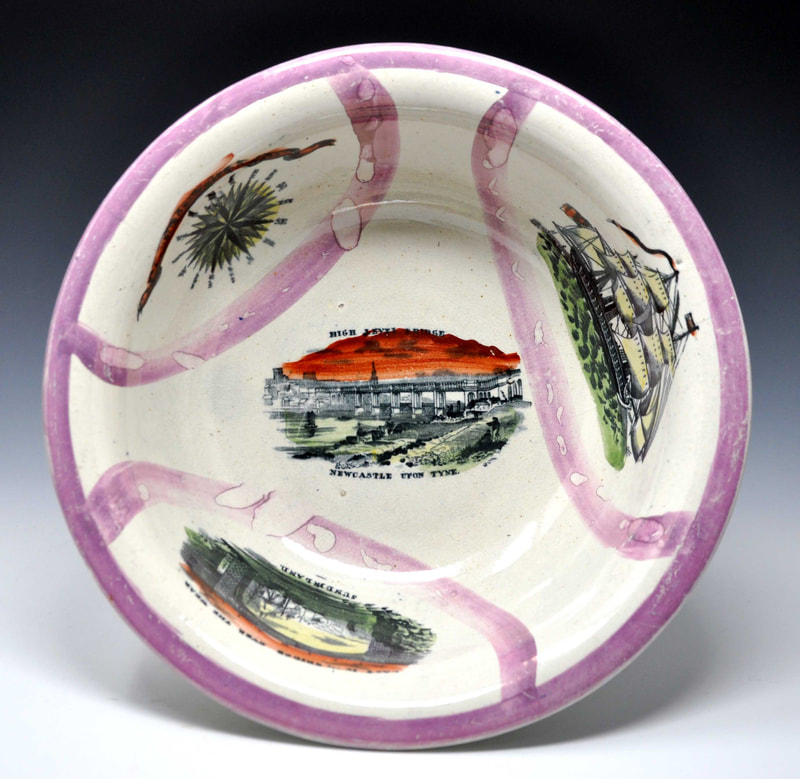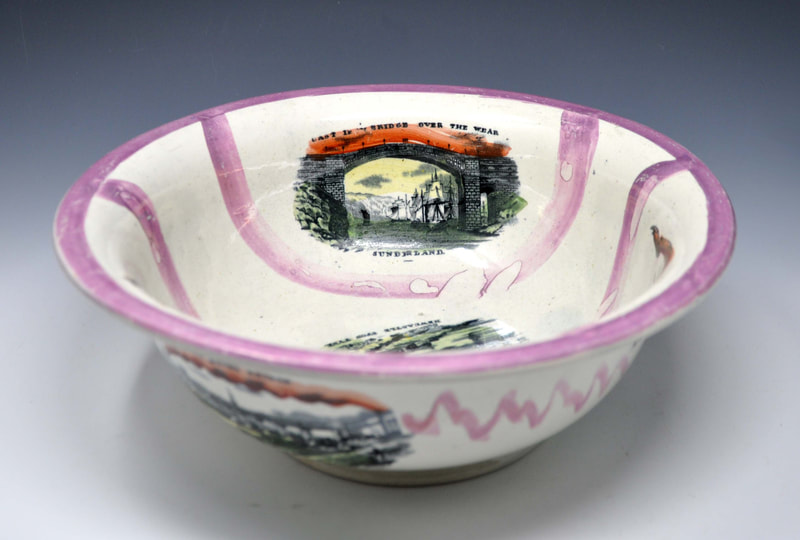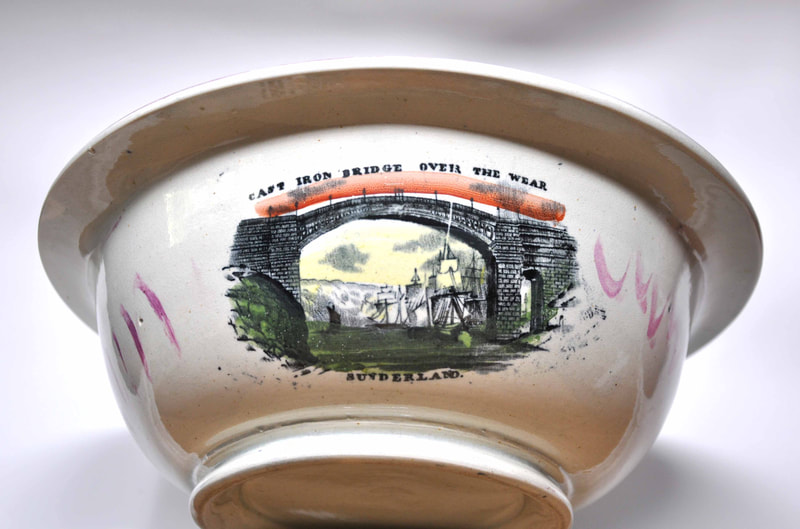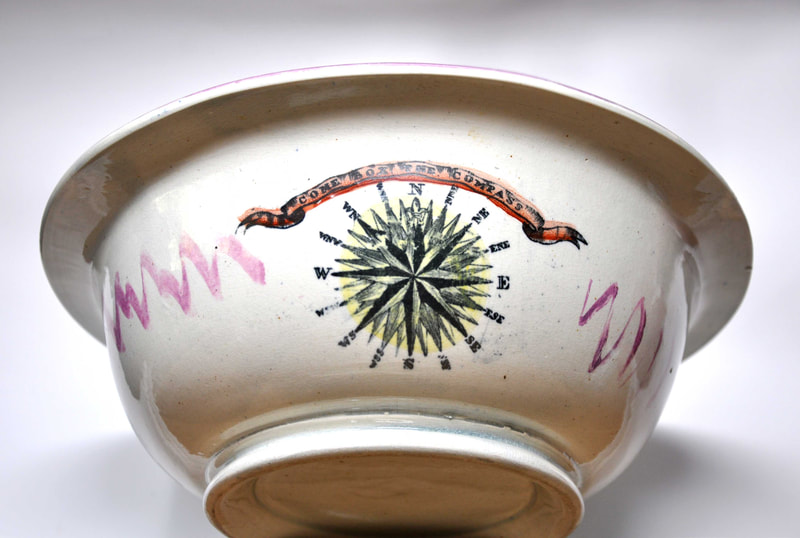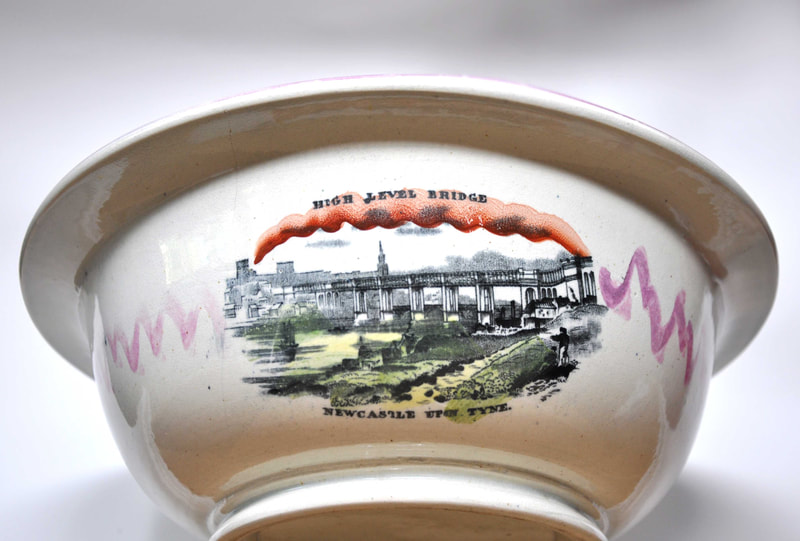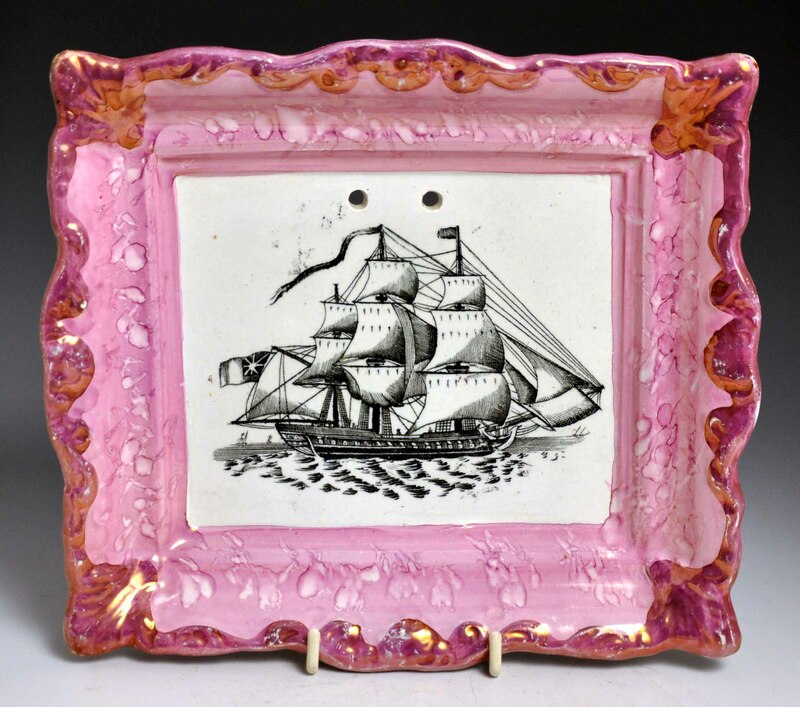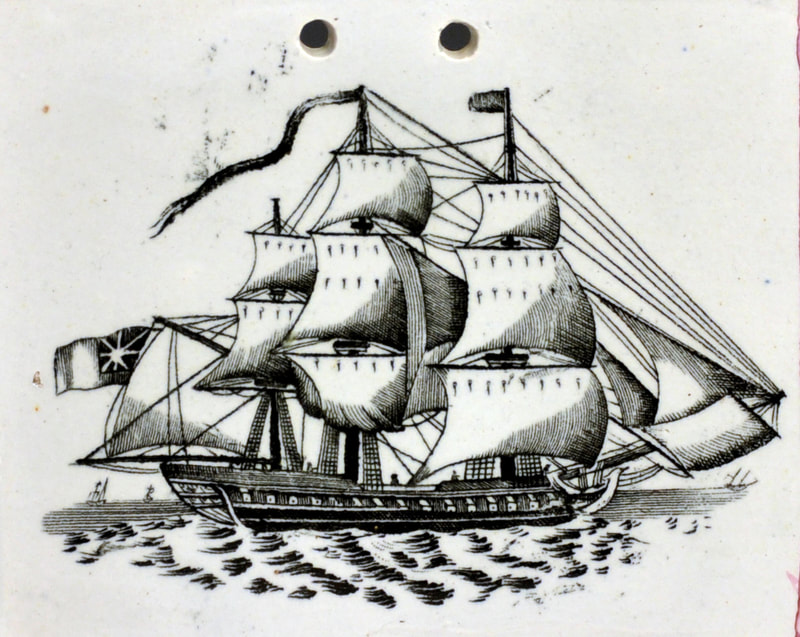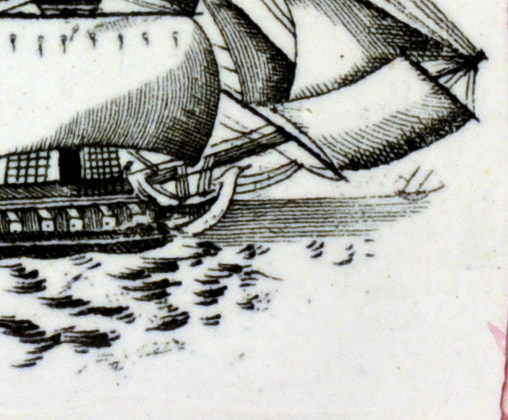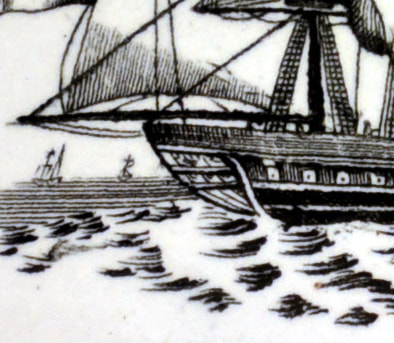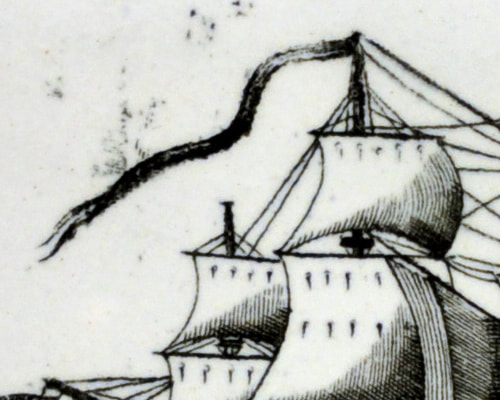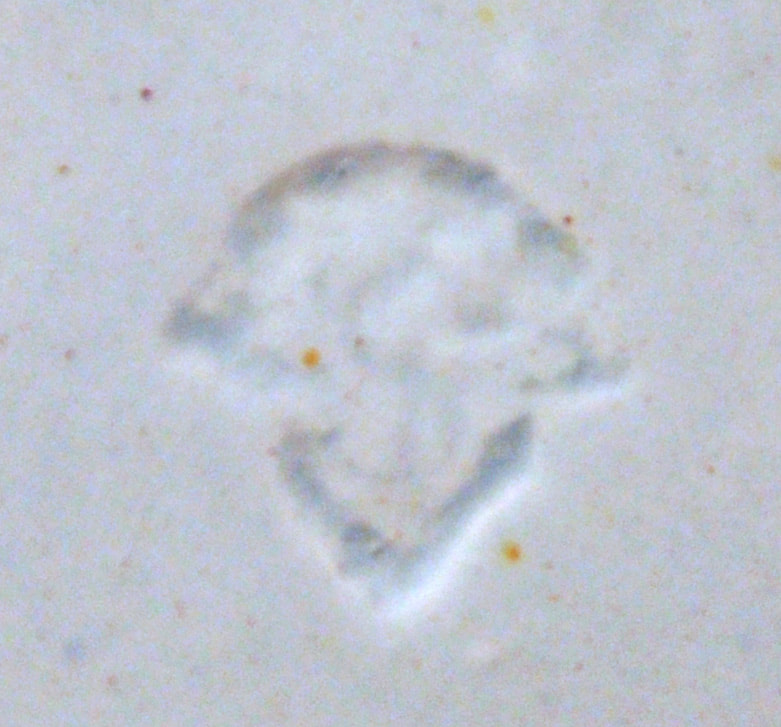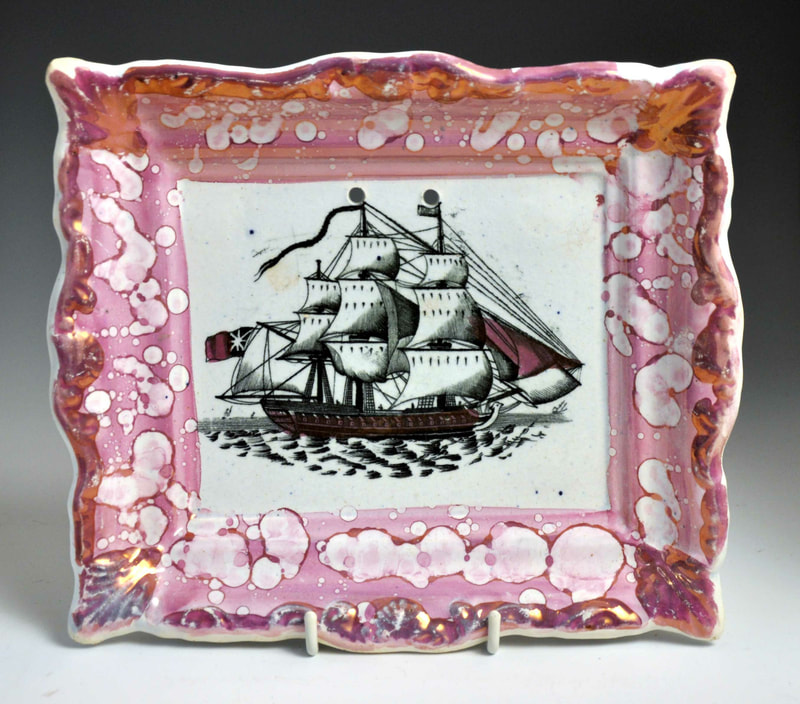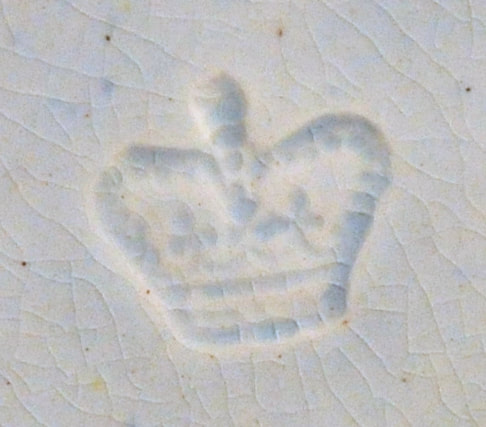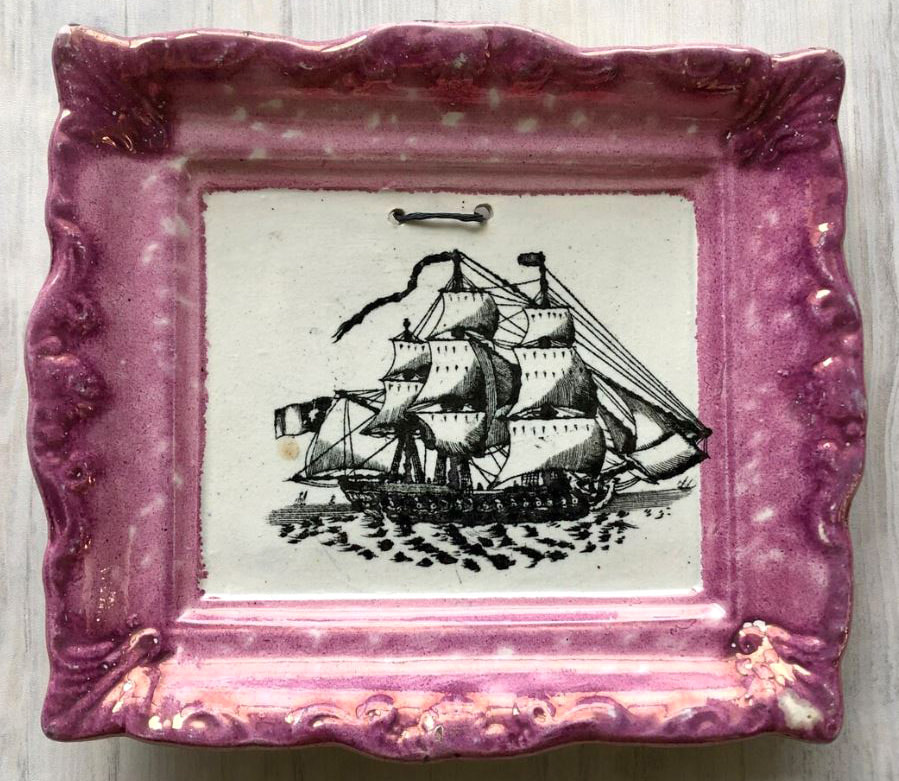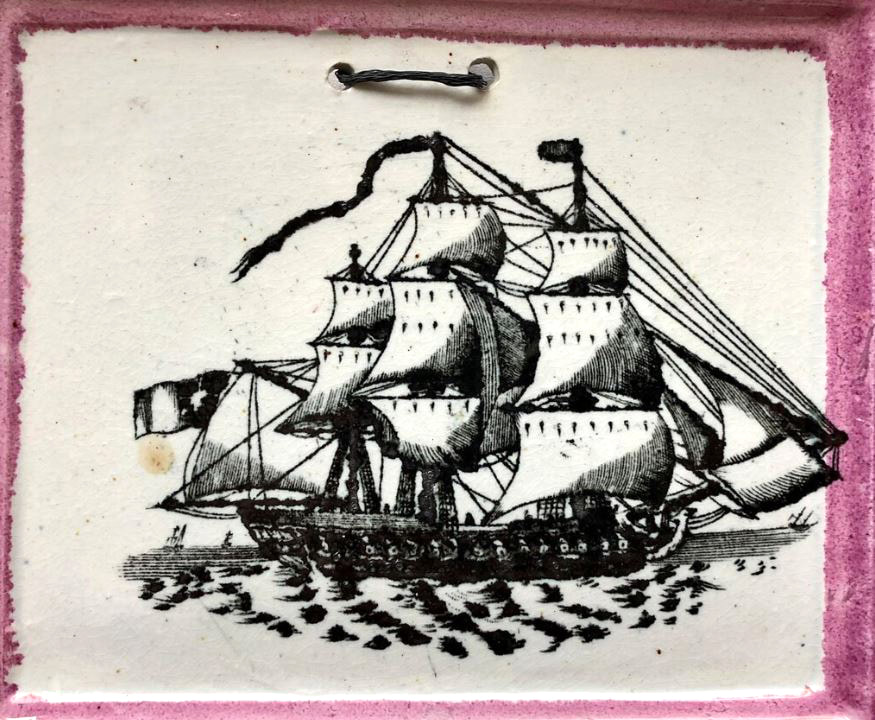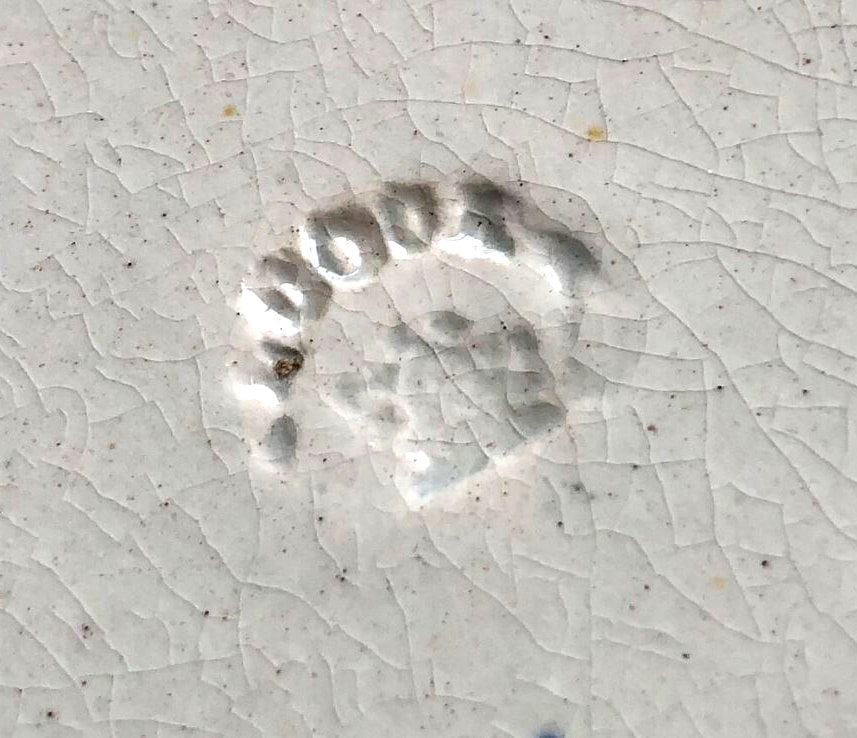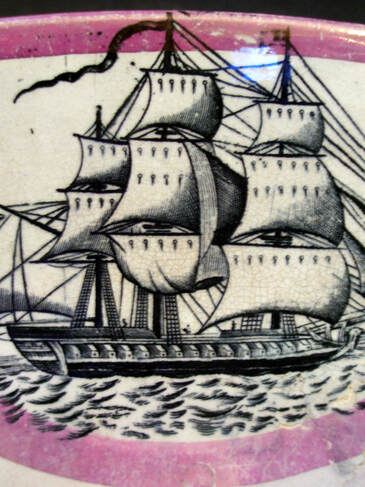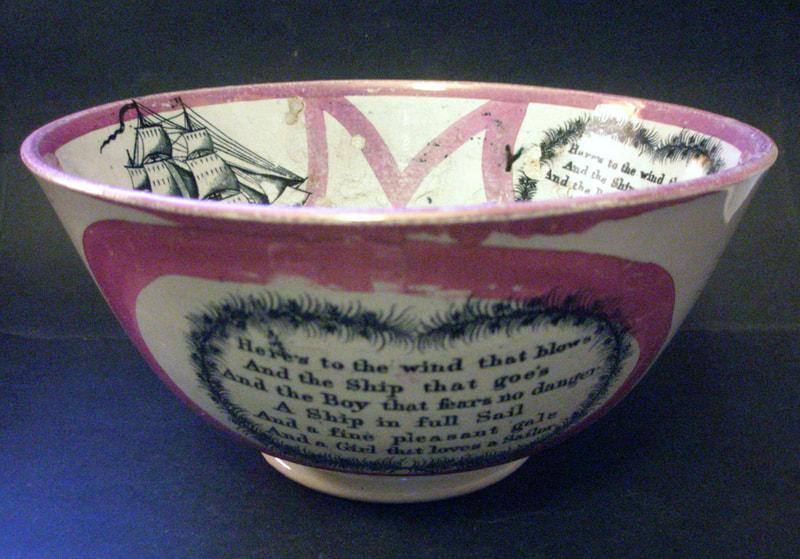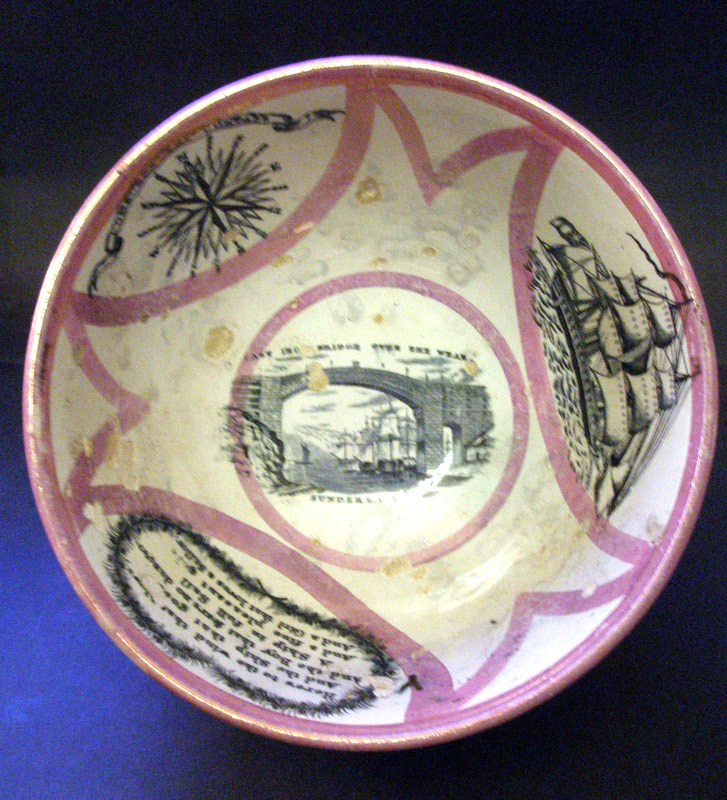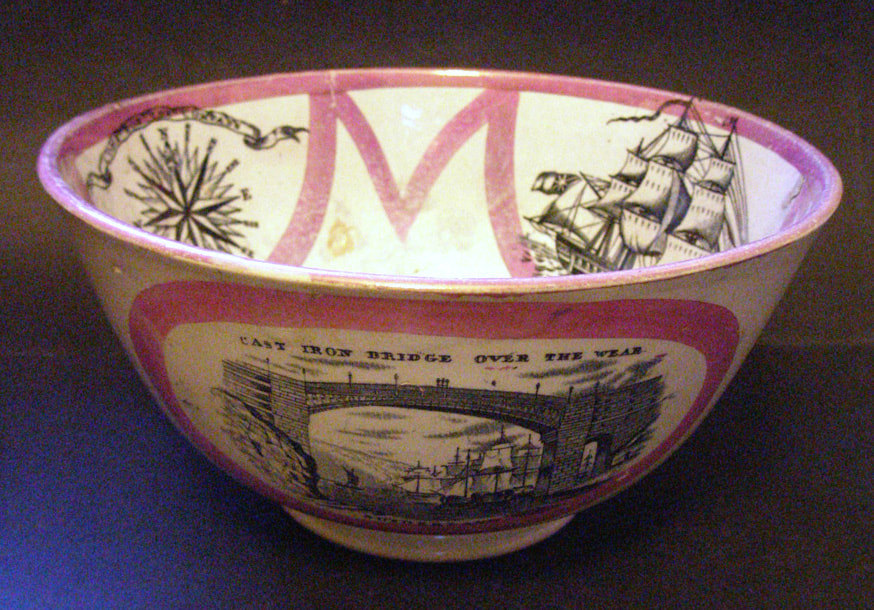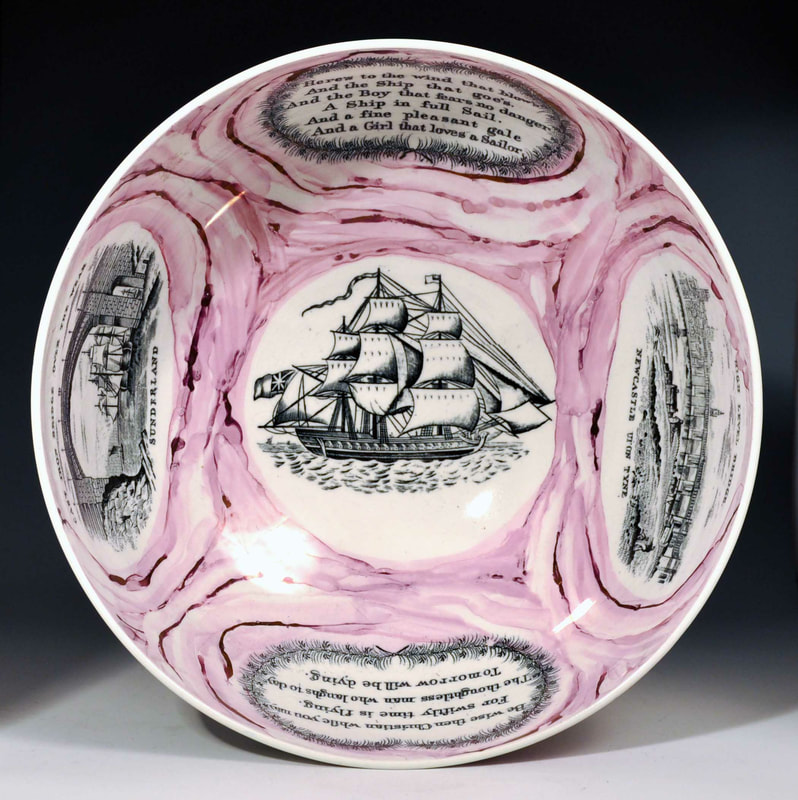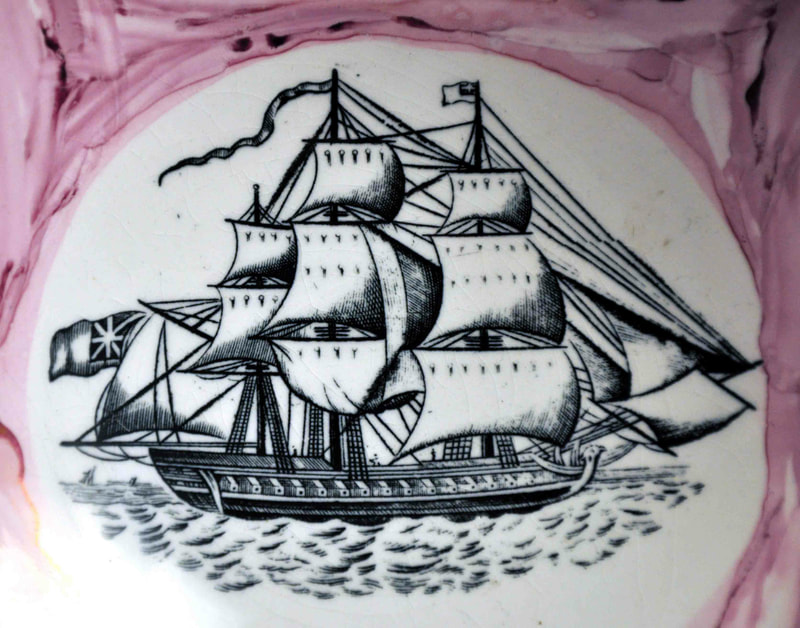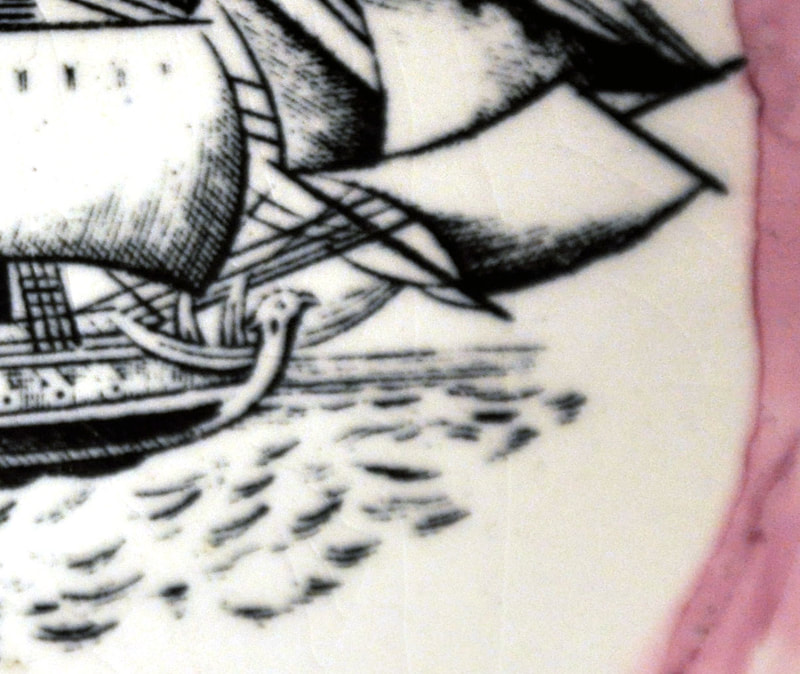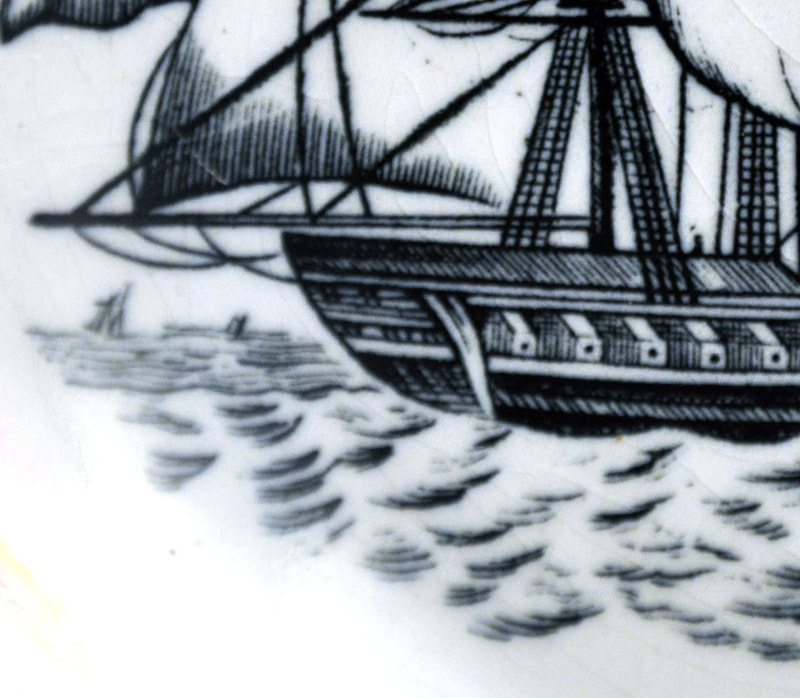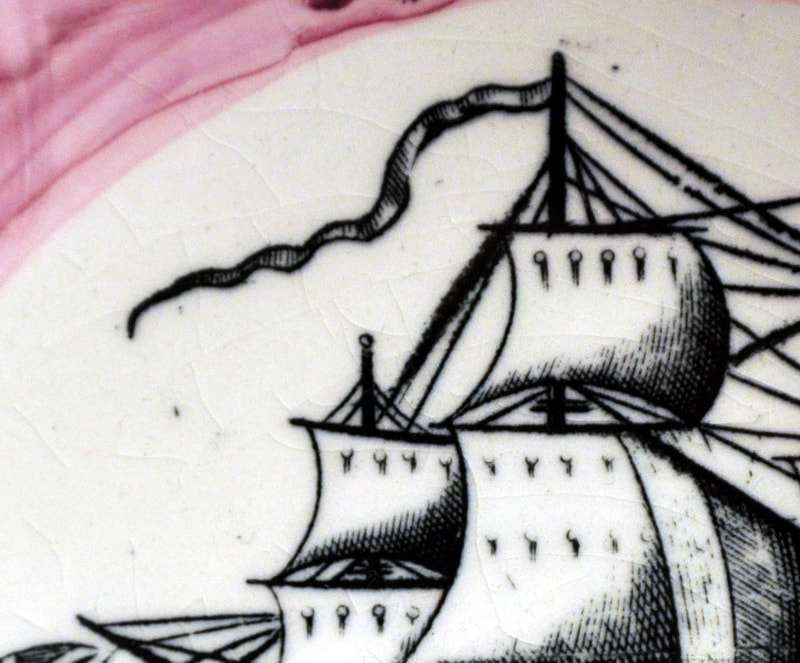Untitled Tyne ship
Unidentified Tyne Pottery
Variations of this untitled ship transfer were used extensively from the 1820s to about 1860. A version resurfaces on 20th century reproductions made by Maling. This jug is the earliest example I've found, from c1825, and was perhaps made by Bird & Co in North Shields. The last image is of a mug of similar age with the transfer.
Attributed to Robert Maling, Ouseburn Bridge Pottery
Green-fleck decorated jugs – group 1
|
Received wisdom has it that the green-flecked jugs (see near right) were made by C,C & Co in North Shields. However, the green flecks are typical of those found on Maling impressed plaques (see far right) made at the Ouseburn Bridge Pottery. I have recently acquired a green-flecked jug that shares a transfer with these firmly attributed Maling plaques. See the Robert Maling-Attributed Inscriptions page for more details about this attribution. |
Sorting out these ship transfers is about as difficult task as I have encountered on these pages. The appearance of the transfer differs greatly depending on the strength of the imprint, so at first I thought there were 3 different copper plates. The strength of the imprints might vary for several reasons:
- The condition of the transfer plate (we know the plates became worn over time and had to be re-engraved to restore clarity)
- The amount of ink applied to the copper plate (this relates to the first – as the plate deteriorated, the grooves became more shallow and held less ink)
- The pressure used when applying the transfer to the pottery. Also, I imagine, how wet the ink was when the transfer was applied.
Group 1 – first imprint
|
The group 1 early imprints have distinctive curved engraving to the sails. The first image below is from a jug with an inscription for 1835. The second is presumably from a later jug, perhaps 1836 or early 1837.
|
|
Group 1 – after re-engraving
|
The plate was re-engraved with diagonal shading sometime before the end of 1837. We know this because this second incarnation appears on jugs commemorating William IV's death, June 1837. In the second, weaker, imprint, the curved shading is almost obliterated.
|
|
Group 1 – after further re-engraving
|
Over time, the vertical marks (I am informed by Ian Holmes that these are called 'reefing lines') on the sails become longer and more distinctively wavy. The top sail acquires a second row of reefing lines. We know the transfer was used into the 1840s.
|
|
Green-fleck decorated jugs – group 1 first imprint; strong
The jug with the inscription dated 1835, and beneath it larger jugs with similar crisp early imprints of the transfer. Blue enamel decoration is usually associated with jugs from the early 1830s.
Green-fleck decorated jugs – group 1 first imprint; weak
Above and below is the jug with the worn first imprint discussed above.
Below, a mug with a very similar worn imprint with an inscription with the date 1836.
Green-fleck decorated jugs – group 1 after re-engraving; strong imprint
Above and the first row below, the jug discussed above with the strong imprint after re-engraving. The second jug below commemorates the death of William IV in June 1837.
Green-fleck decorated jugs – group 1 after re-engraving; weak imprint
The jug below again commemorates the death of William IV in June 1837. It has the weaker imprint discussed above
Green-fleck decorated jugs – group 1 after further re-engraving
The other sides of the jug shown below with two further examples. Note that these jugs share transfers with the earlier imprints above.
Below is a jug with the transfer and an inscription dated 1840. The jug beneath it has a degraded version of the transfer which might be even later. What the transfer lacks in definition is made up for by the decoration.
Attributed to Carr & Patton, North Shields, 1838–1846
Green-fleck decorated jug – group 2
This transfer comes from the same transfer plate as the firmly attributed North Shields items below. However, the decoration is similar to the Robert Maling items above. Carr and Patton were emulating their neighbour's green fleck decoration.
The elaborately decorated jug below is something of a one-off. The green oak leaf decoration is similar to decoration found on Maling plaques.
The ship on the jug below appears to come from the same copper plate. They are hard to compare because the imprint on this jug is lighter. My guess is that this jug is later. The body of the ship is picked out in brick red like the jug above.
Below are the other sides of this jug. Note the decoration on the handle, which does not terminate in the 'Carr' horizontal brushstrokes. Beneath it, a large mug.
Carr & Patton, North Shields, 1838–1846
The other sides of the jug shown below, and beneath it, a smaller jug with distinctive yellow and maroon decoration, and another with the transfer 'The Fortune Hunter'. Note the lustre decoration on the handles of the first two jugs, terminating in horizontal strokes.
Unidentified Tyne pottery
The jug below has a very similar variation of the transfer to the group 3 one above. It has the inscription 'Ann Amelia Hamon, Born September 15th'.
Unidentified Tyne pottery
A small but elaborate version of the transfer appears on this slop bowl from c1840.
Unidentified Tyneside jug
This very large jug is unmarked. The decorative features are similar to those used by C T Maling. Beneath it a smaller jug with similar decoration.
Below, a similar jug with the transfer and a very distinctive version of Mariners' Arms transfer.
Unidentified Tyne pottery
Attributed to John Patton, Phoenix Pottery, Newcastle
This unmarked bowl is attributed to John Patton on the basis of a mug with the same Newcastle Bridge transfer, with an inscription in a hand associated with the Phoenix Pottery.
Thomas Fell, St Peter's Pottery, Newcastle
The holes for hanging the plaque are underneath the frame, in the central portion of the plaque. This is a feature associated with Thomas Fell. The impressed London mark is known to have been used by a number of NE potters, likely on items for sale by a London retailer.
This is one of a number of Fell transfer plates that appears to have been purchased by the Staffordshire potter, Samuel Alcock & Co. Interestingly, the Staffordshire potter has put the hanging holes in the same place as Fell. See another here. Underneath the maker's name is an impressed beehive – a symbol of industry.
Attributed to C T Maling, Newcastle
The end of the long flag isn't forked. Note the rows of circles on the sails.
This version comes from the same transfer plate as the 20th century reproduction below. Note the small nick under the end of the long flag. It appears on items with other transfers and decorative features associated with Maling.
